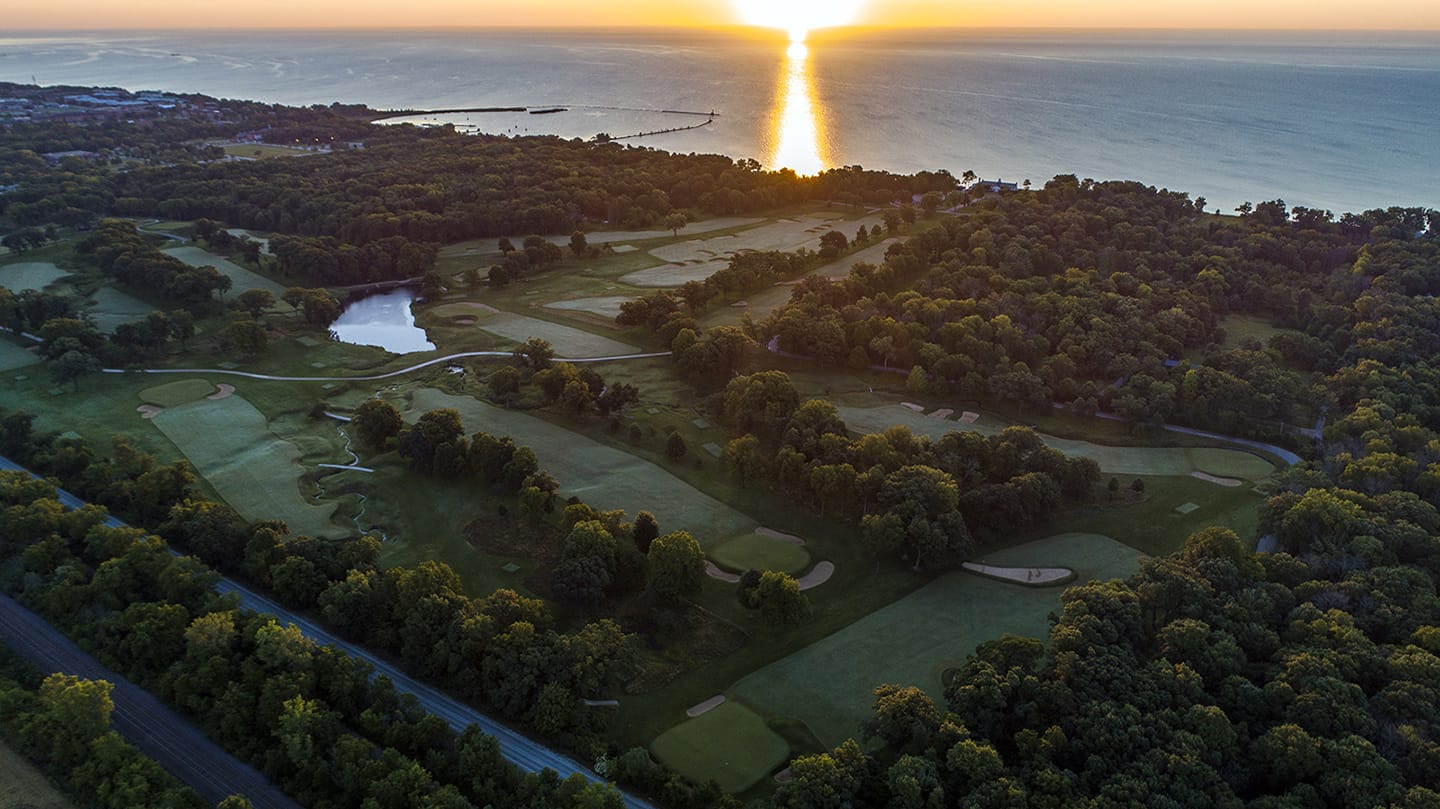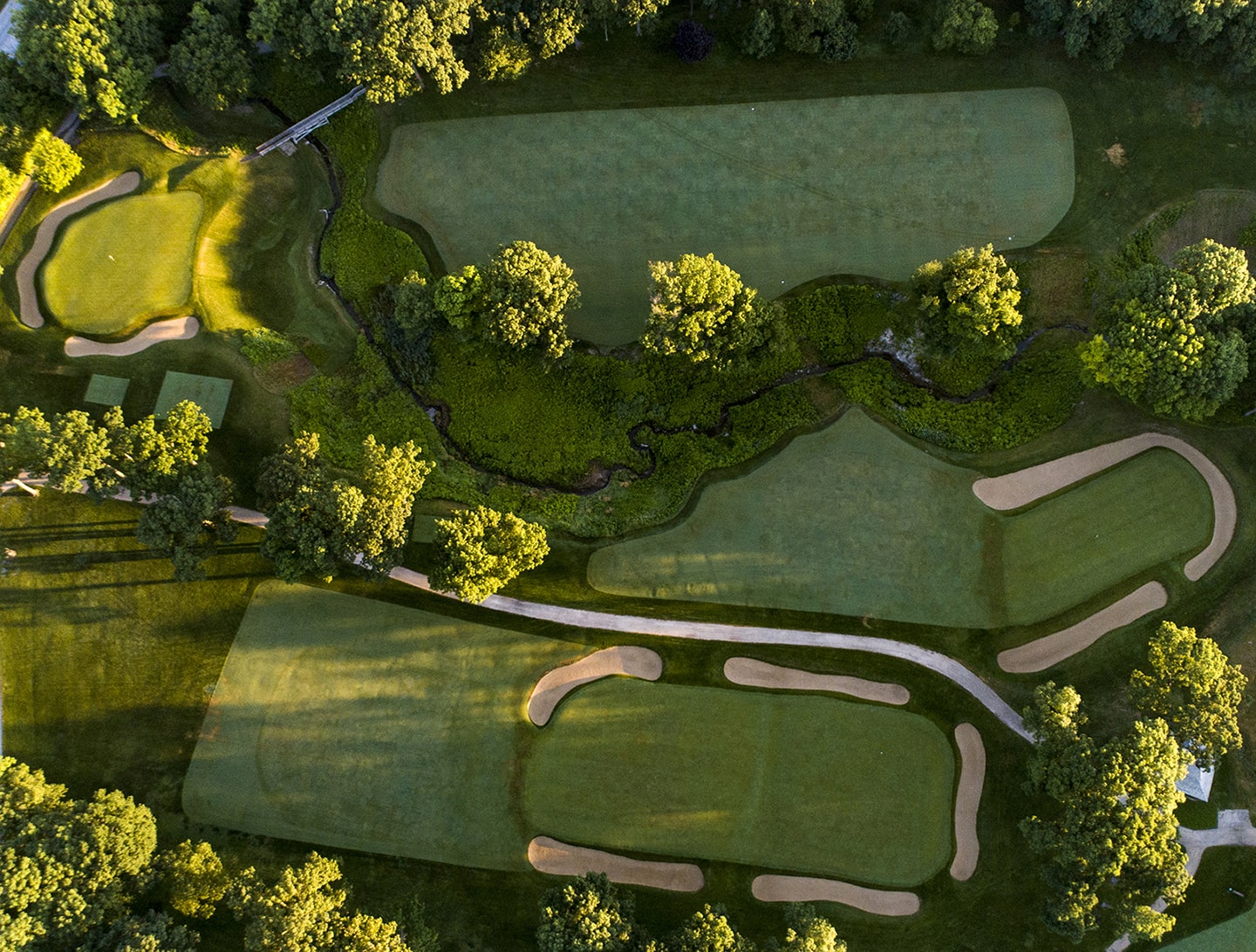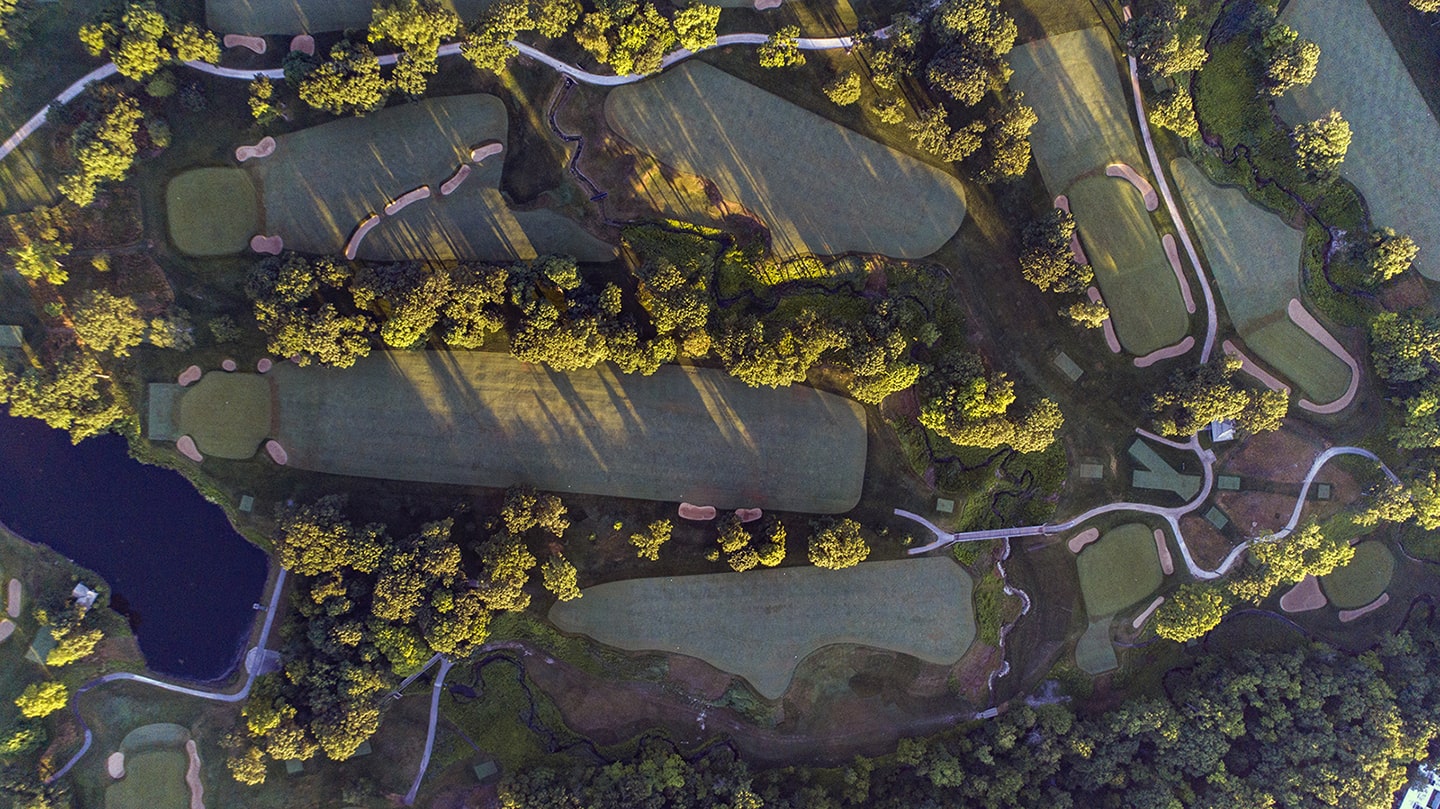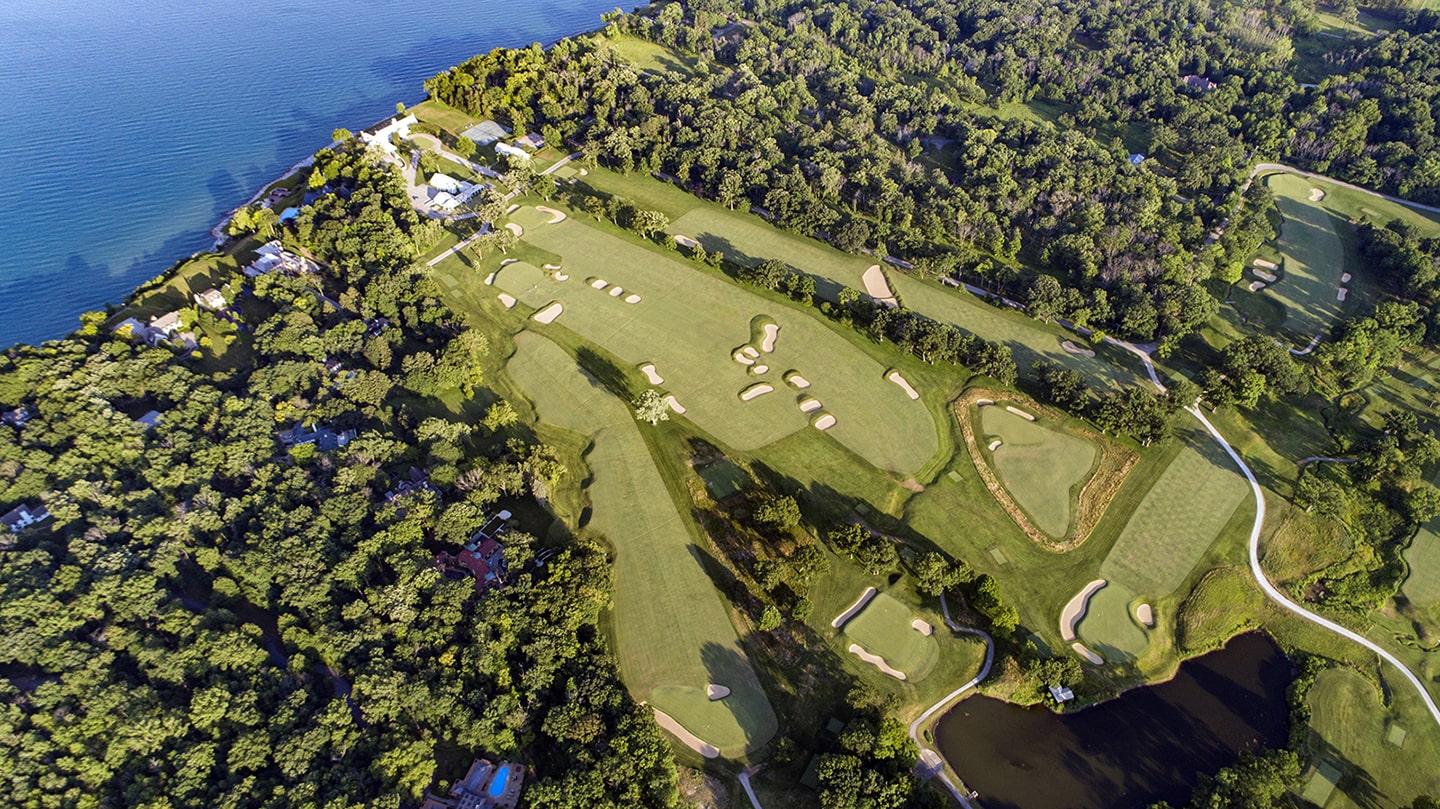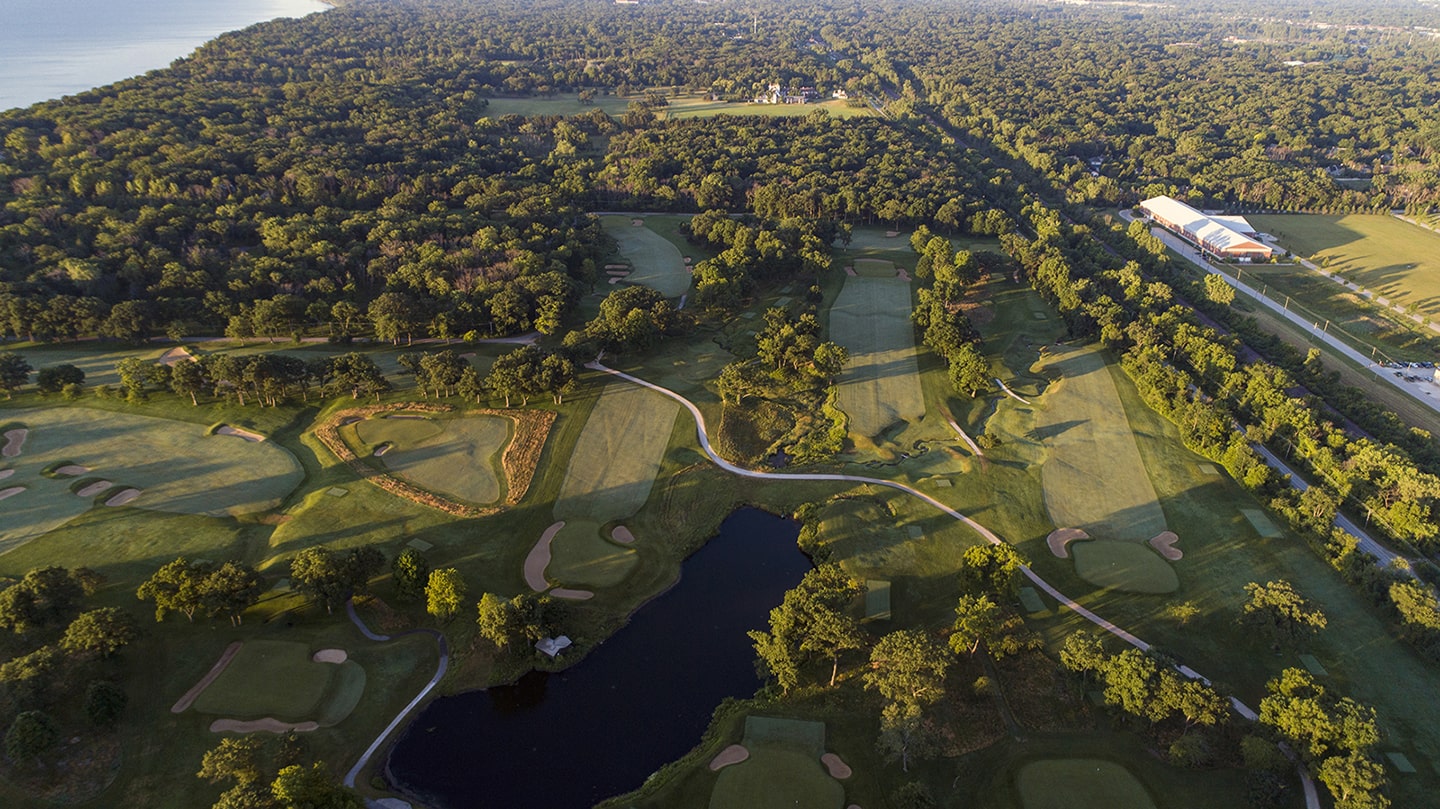In the far northern suburbs of Chicago, a Seth Raynor masterpiece lies in the sleepy town of Lake Bluff, Illinois. No golf course is more near and dear to my heart than Shoreacres. Growing up in Lake Bluff, I would occasionally stumble across the opportunity to play or walk Shoreacres. These rounds were the highlight of my summer, from a young age I knew there was something special about Shoreacres. It would take me years to figure what that it factor was. What makes Shoreacres special is its routing, in other words, the manner in which the course is laid out over the ground. It is the foundation of the brilliance of Shoreacres and makes for a beautiful walk, and a fun and varied test of golf.
The routing does have its detractors, specifically those who question Raynor’s decision to bypass putting golf holes on Lake Michigan frontage. It’s a parcel few modern architects would pass on, but Raynor knew the best ground for golf laid inland, away from the water. Like most of Chicago, the ground at Shoreacres is very flat. The site’s greatest asset is the dramatic ravine that winds through the property. Raynor used the ravine in a variety of ways throughout the course to create some of the best holes in the world. On the five holes that don’t interact with the ravines, Raynor wisely placed his boldest greens and design features.
1st hole – par 4 – 480yards
The course opens with a par-5 from the members’ tee and a par-4 from the championship tee. The first plays without the presence of the ravine and over flat ground. Its key feature is a set of two massive cross bunkers which split the fairway. This Great Hazard feature was often used by A.W. Tillinghast and puts pressure on players to hit a good tee shot to clear the bunker with their second shot. The 1st green is among the most challenging at Shoreacres. It’s pushed up and guarded by a bunker on the left side. The green has a false front and falls away on the right and back side. The green subtlety moves from front to back making a pitch shots from short of the green sneaky fast.
-
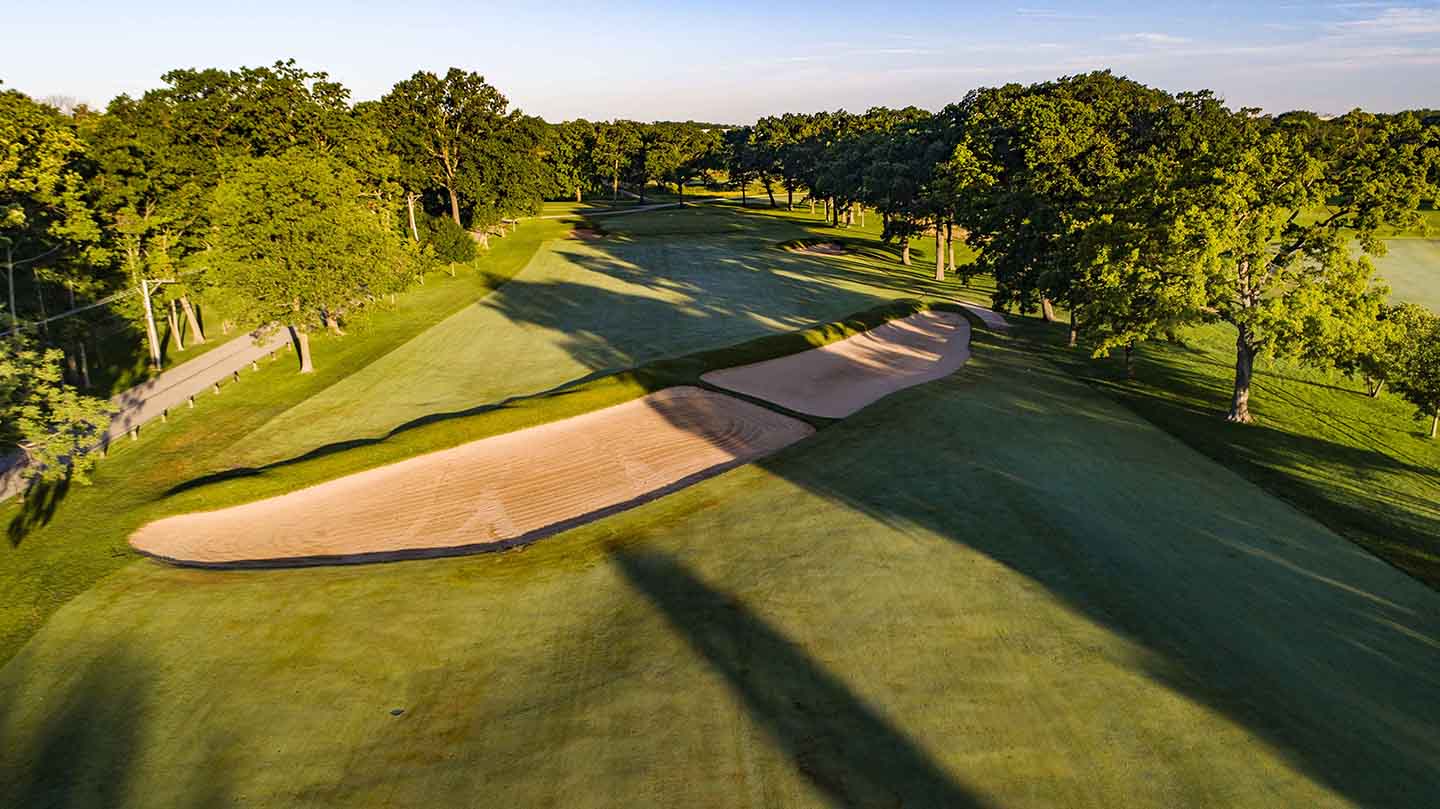
-
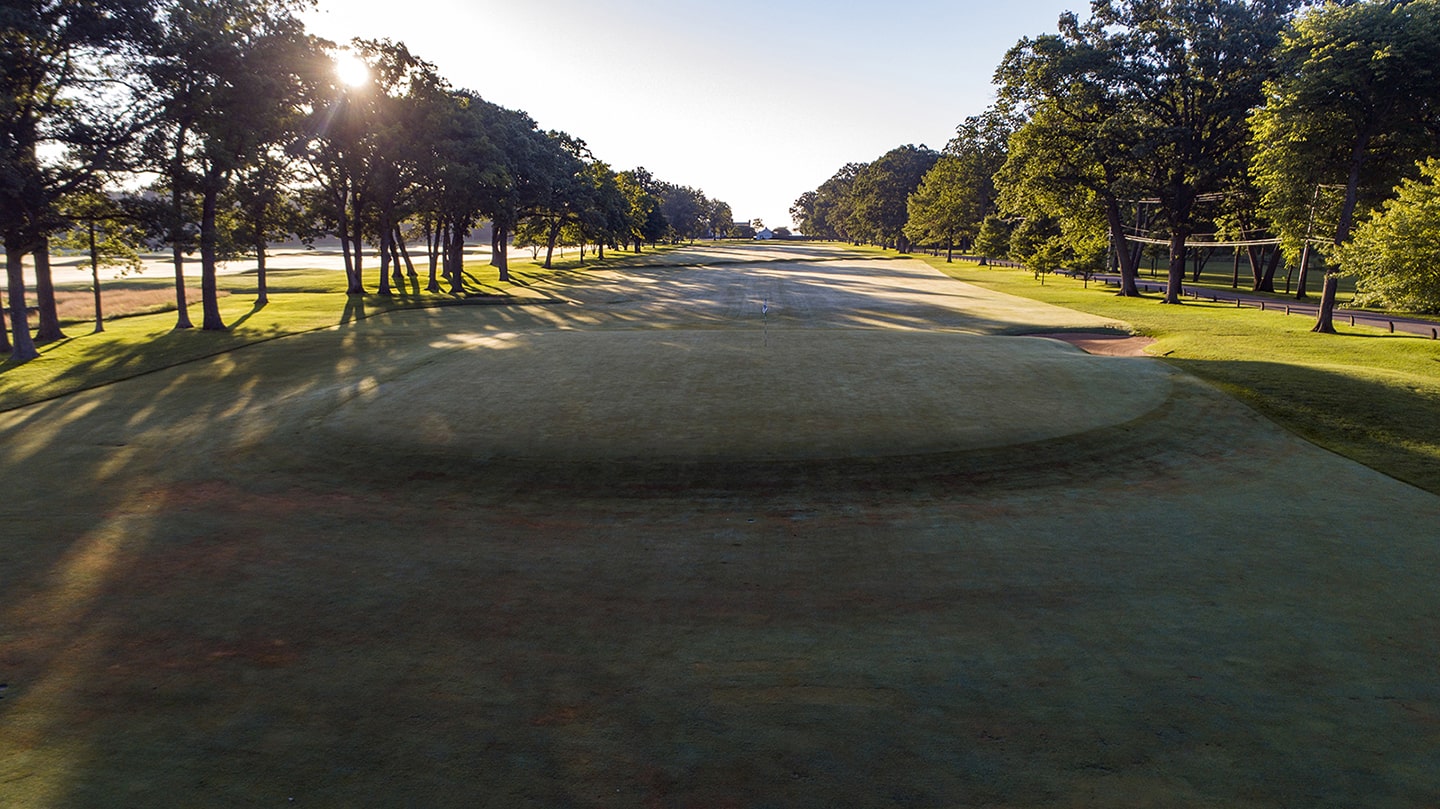
Behind the 1st green
-
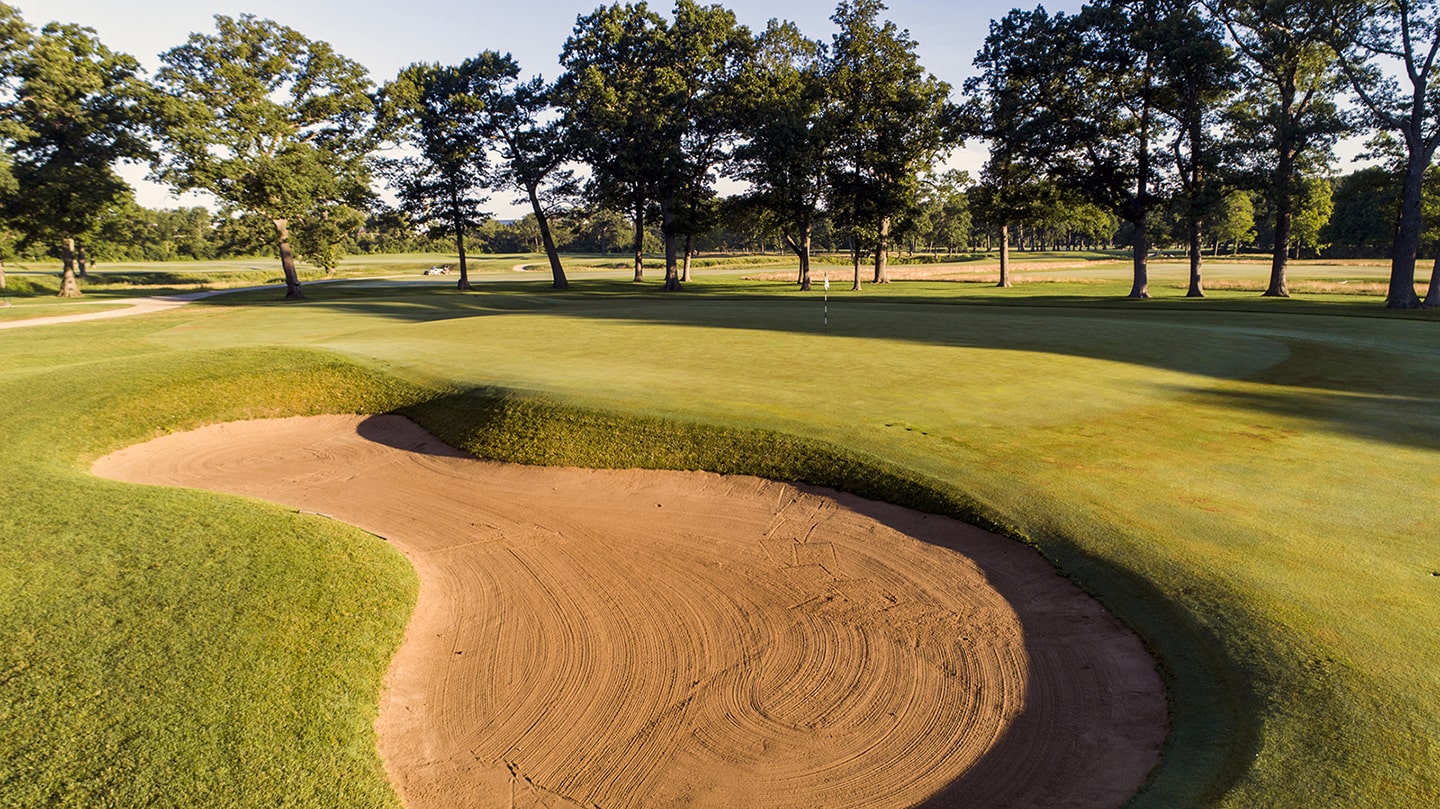
Left of the 1st green
-
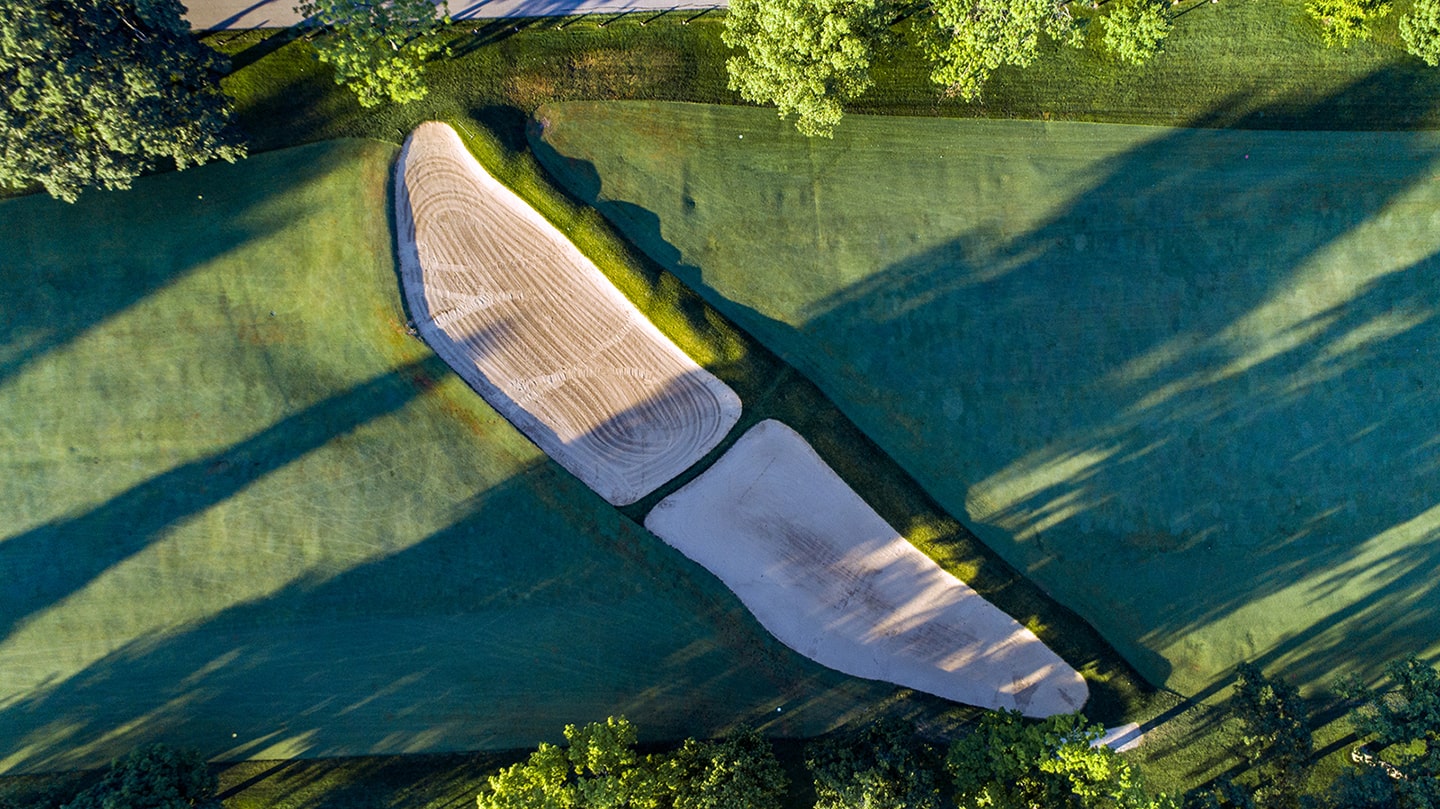
1st hole cross bunkers
-
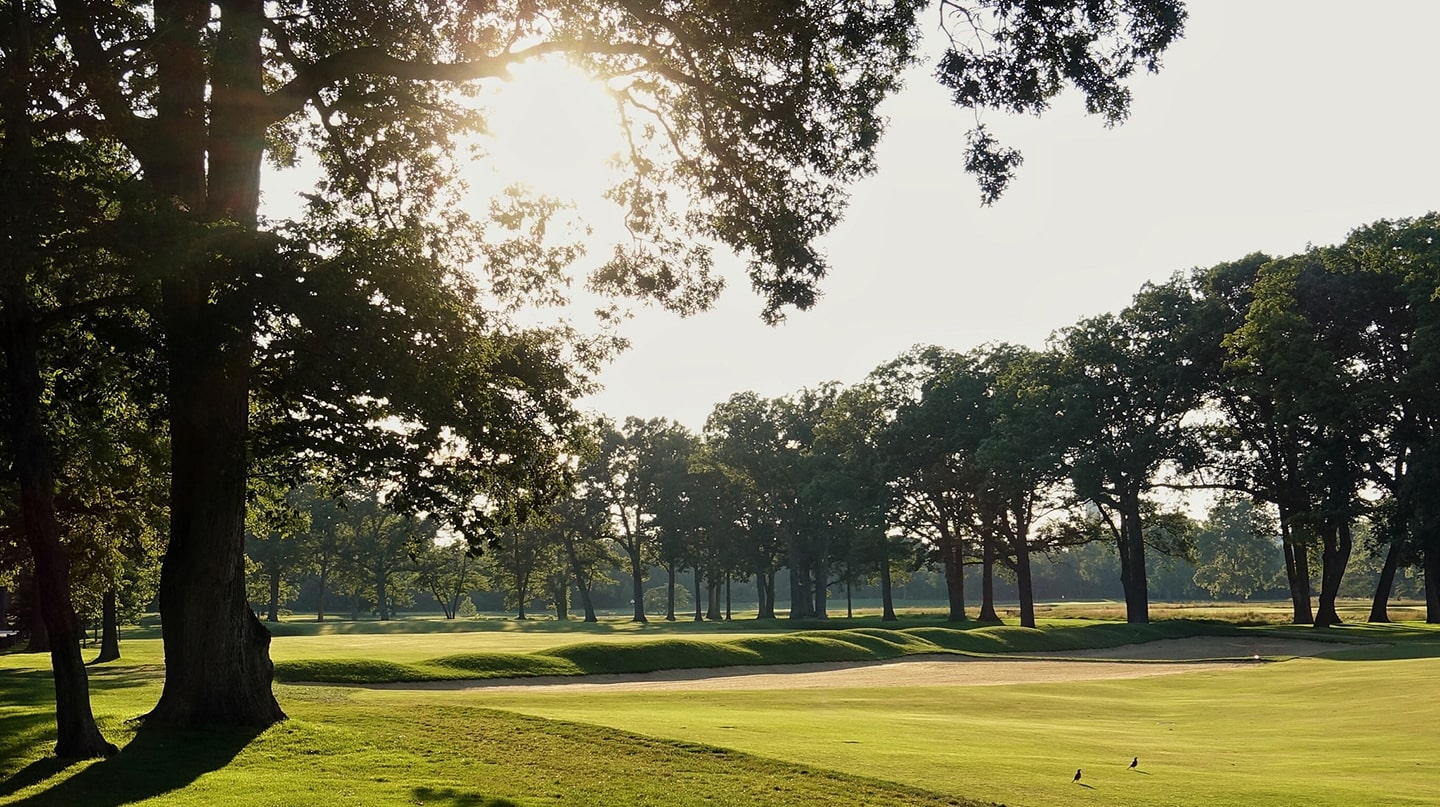
-
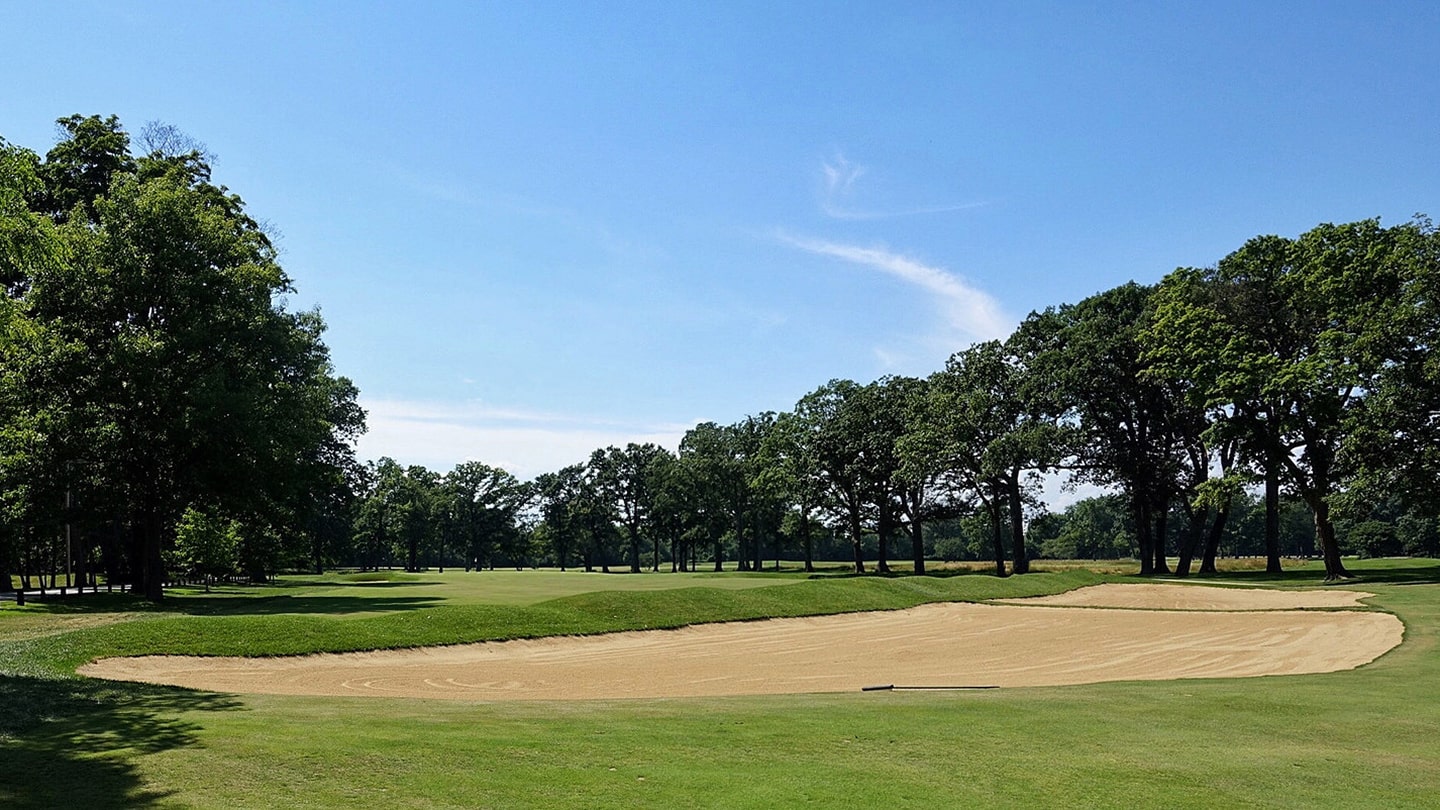
2nd hole – par 4 – 358 yards
The second presents golfers with their first encounter with the ravine that plays a role on 13 of Shoreacres 18 holes. At the second it cuts across the front of the fairway on a diagonal and runs up the left side of the hole. The second is Shoreacres’ Cape template and presents a number of different strategic choices. Aggressive play can yield a short pitch shot into the green but carries the risk of finding the creek and ravine up the left. A safe play is a long-iron up the right side, but it leaves a short iron approach from a poor angle into a green that slopes right to left. A subtle aspect of the second is the orientation of the green. It is slightly angled to the left, giving an advantage to the player who is aggressive and finds the left side from the tee. The approach shot has to deal with the creek which wraps around the green and makes a player think twice before flag hunting. The second gives players a glimpse of what’s to come and is one of America’s finest renditions of the Cape Hole.
-
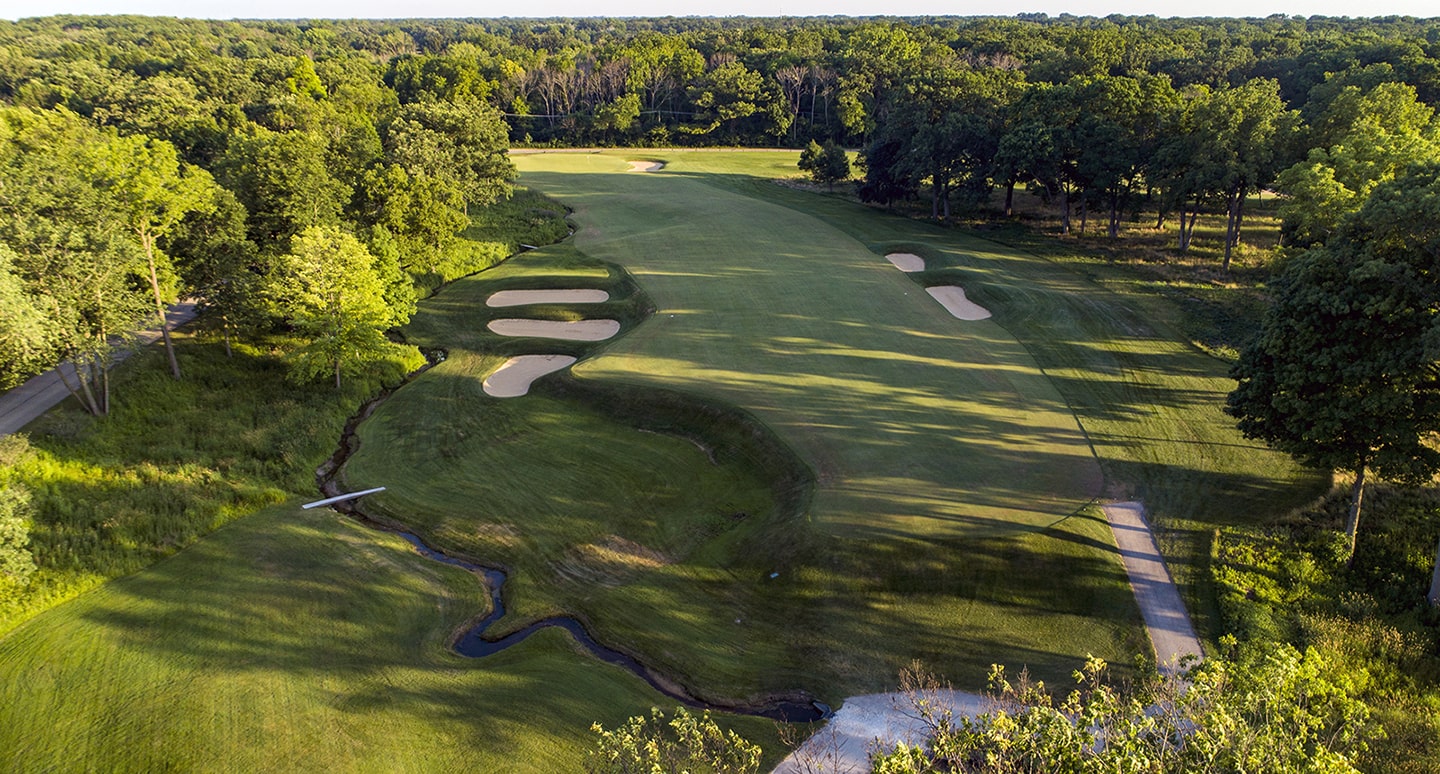
A look at the 2nd
-
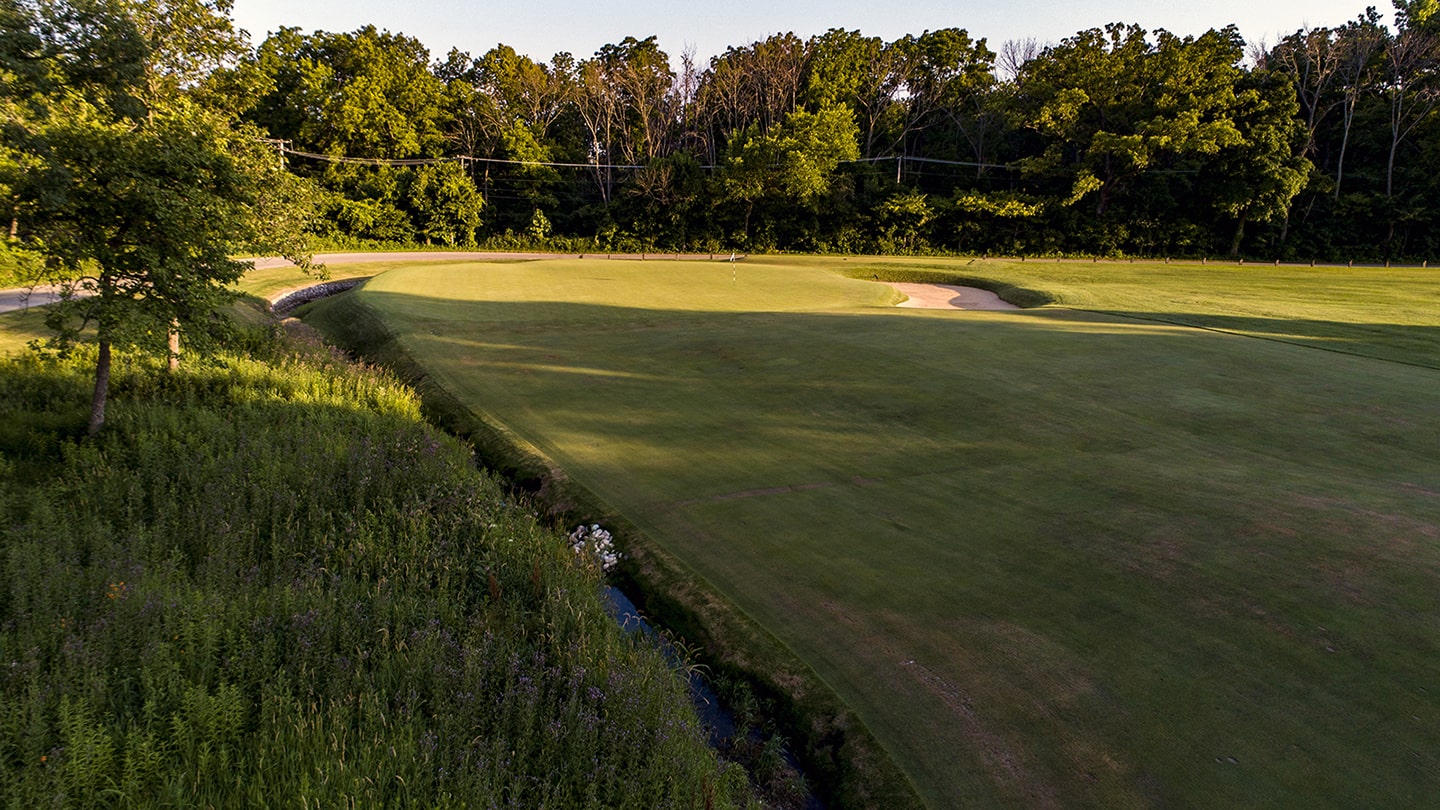
Approaching the 2nd green
-
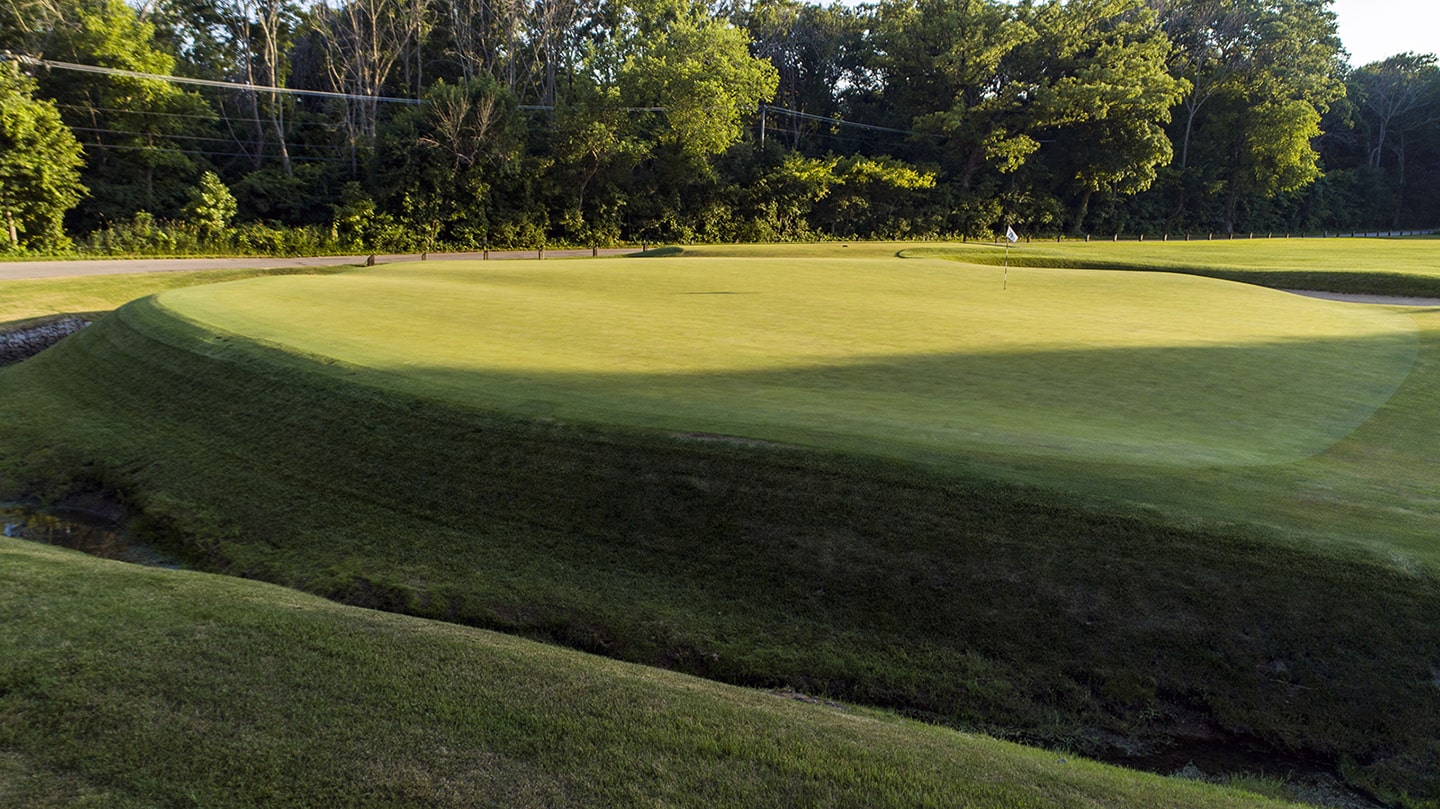
Left of the 2nd green
-
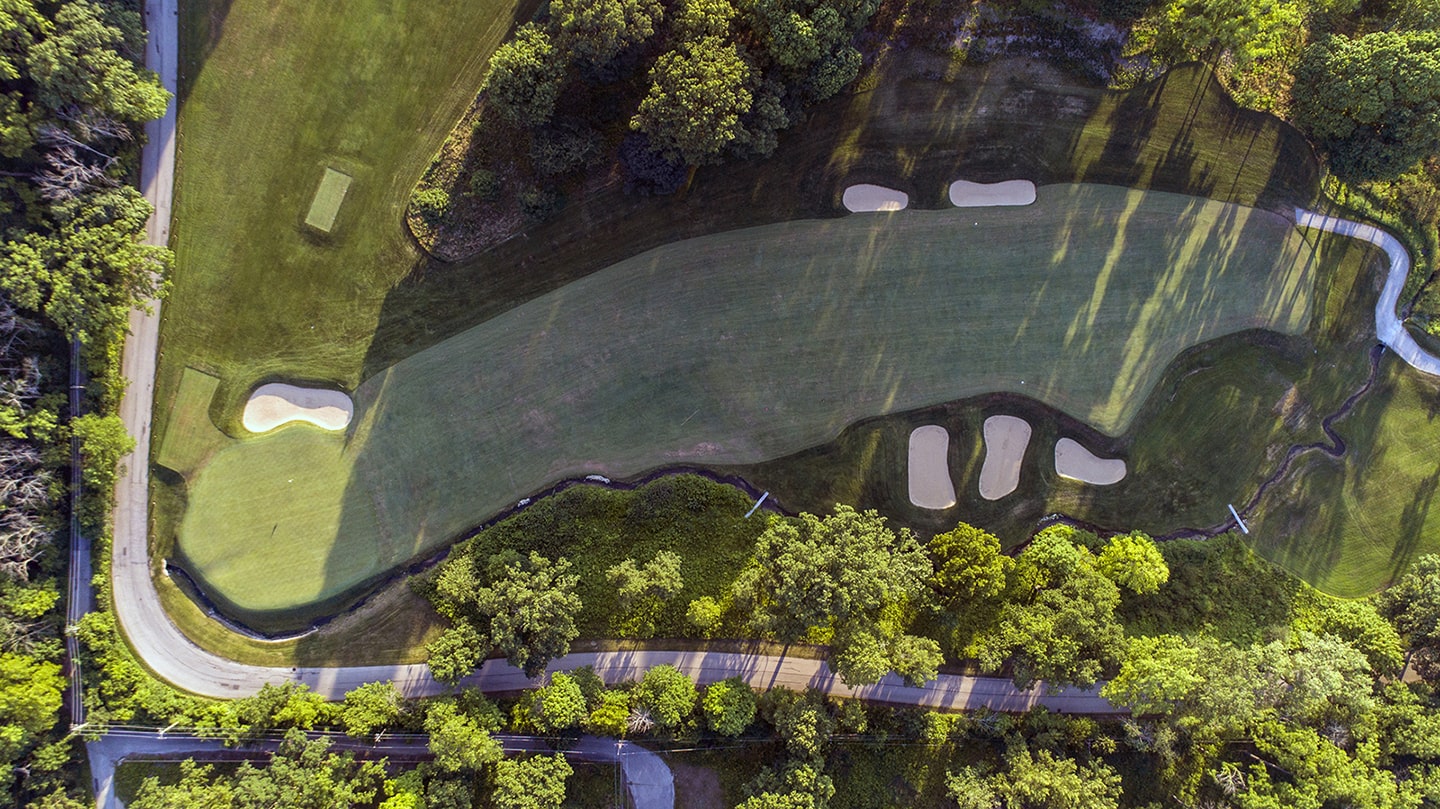
Aerial view of the 2nd
-
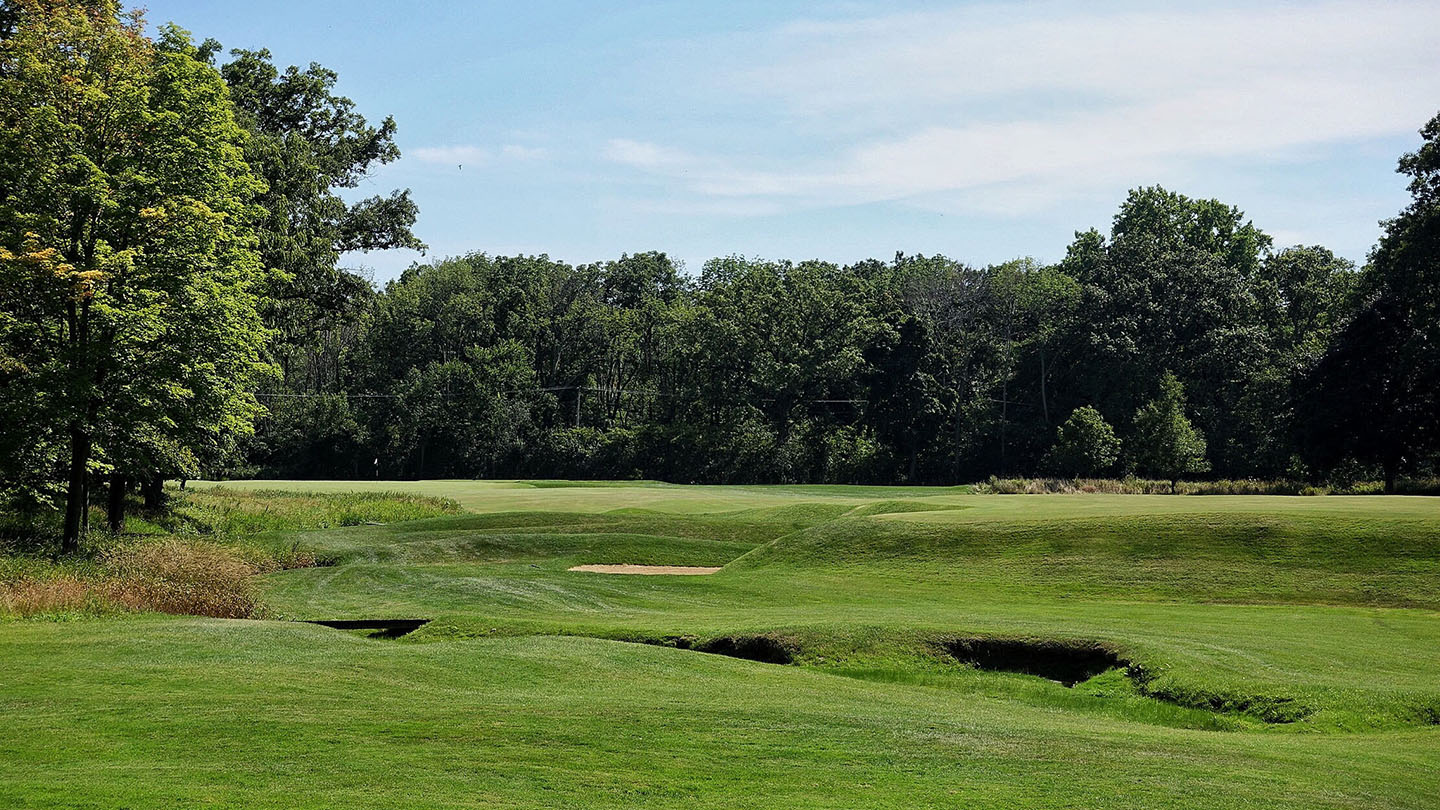
The tee shot on the 2nd tests players' aggressiveness
3rd hole – par 4 – 312 yards
The 3rd hole moves up a small rise in the property and is one of the five holes devoid of the ravine on property. The short par-4 is an example of the Leven template. Much like the first, without a ravine, Raynor ramped up the design features, with a giant forebunker, a fronting mound, and a remarkable green. The green slopes severely from back to front and has a front and back tier. In the middle of the putting surface there is a knob which diverts shots back down to the front if they aren’t struck with the perfect touch. The third begs long players to go for it from the tee, but will leave a pitch shot that feels as awkward as a breakup call.
-
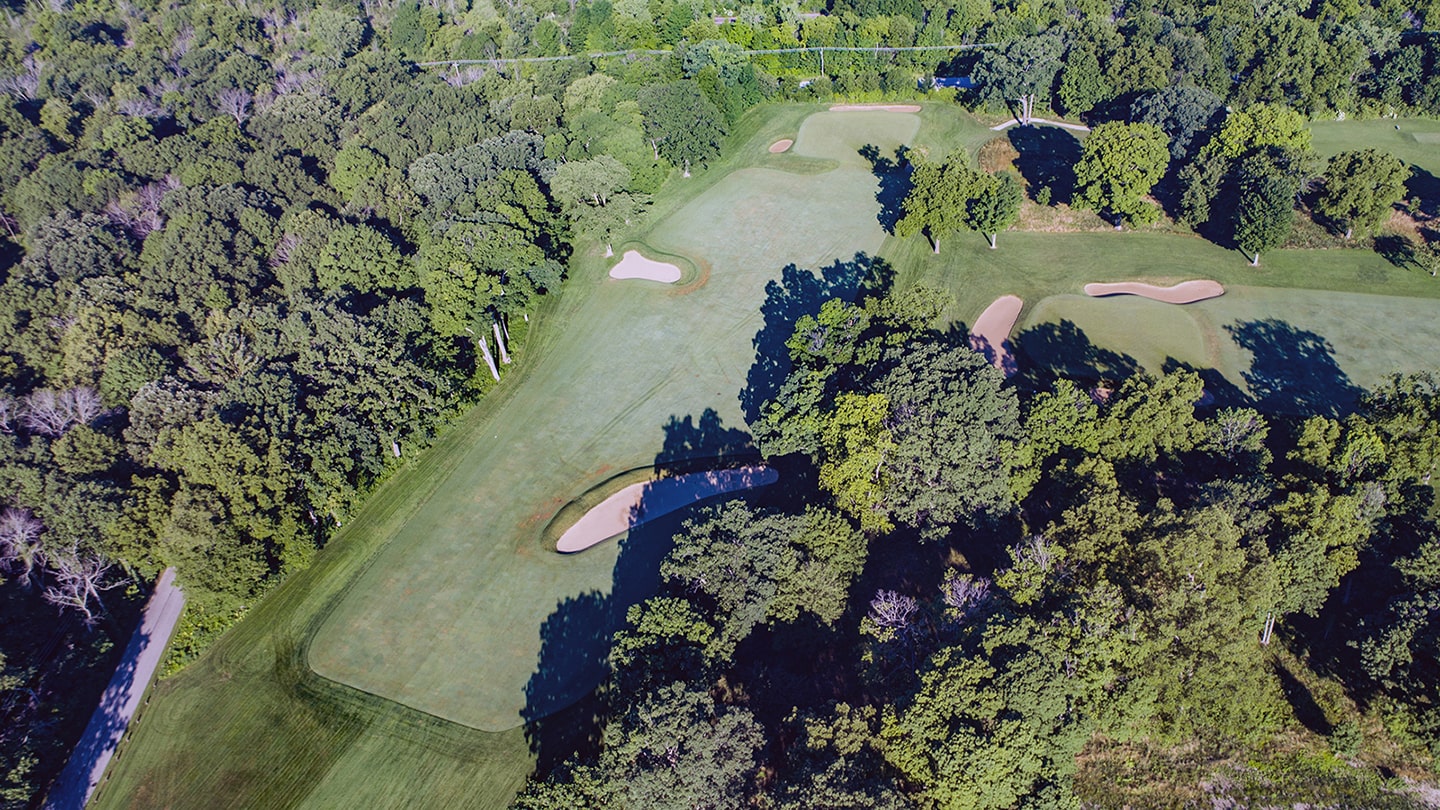
High above the 3rd hole
-
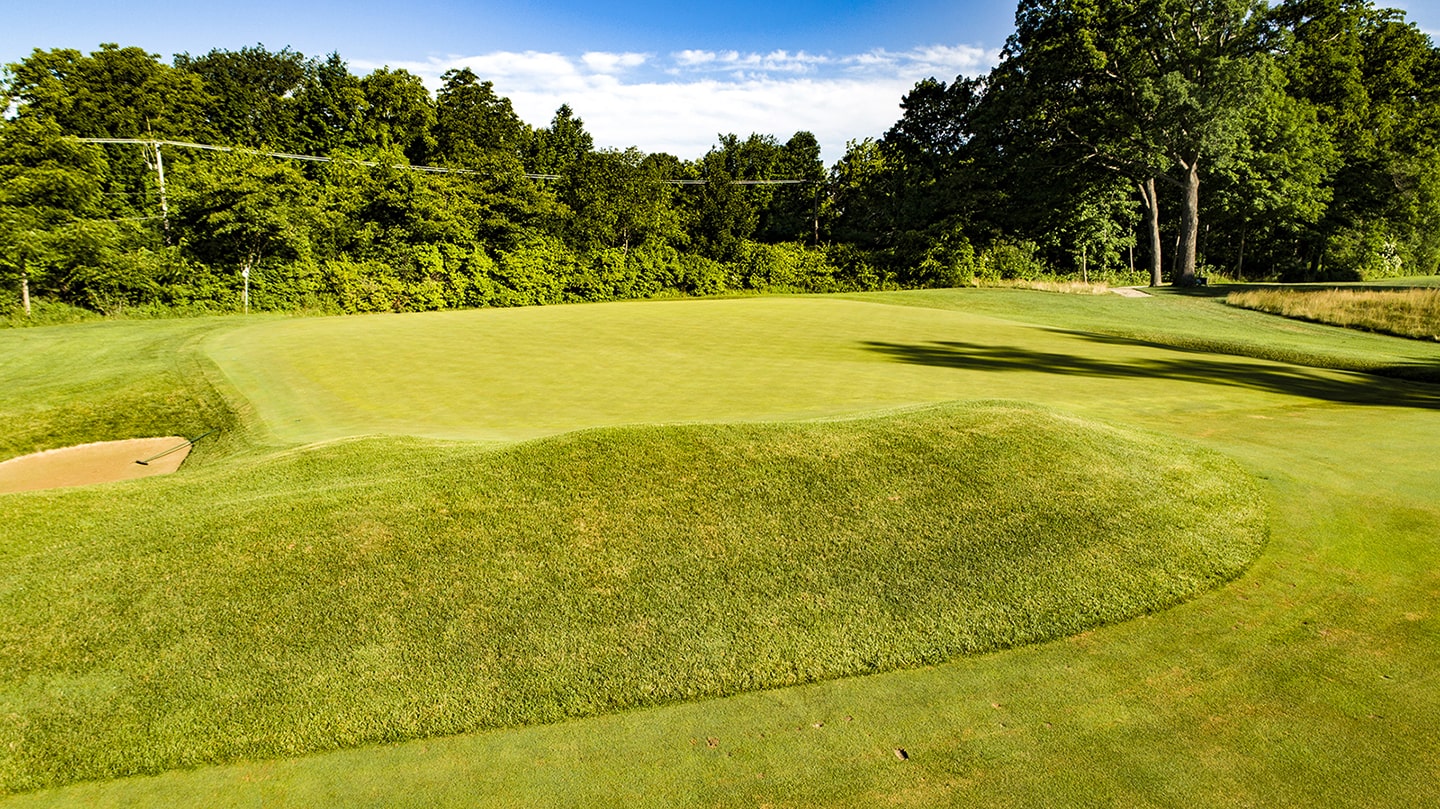
The leven mound on Shoreacres' 3rd
-
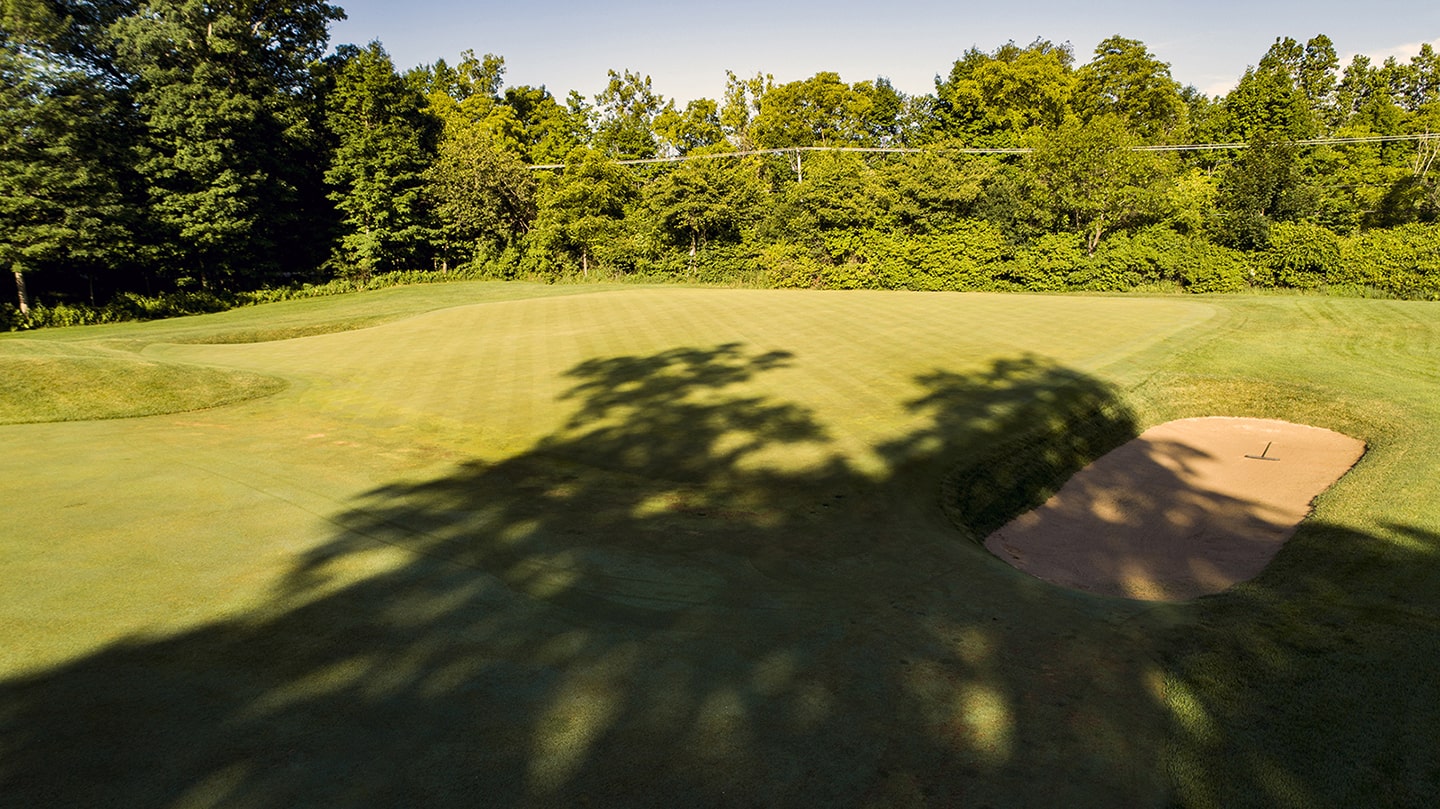
Short right of the 3rd
-
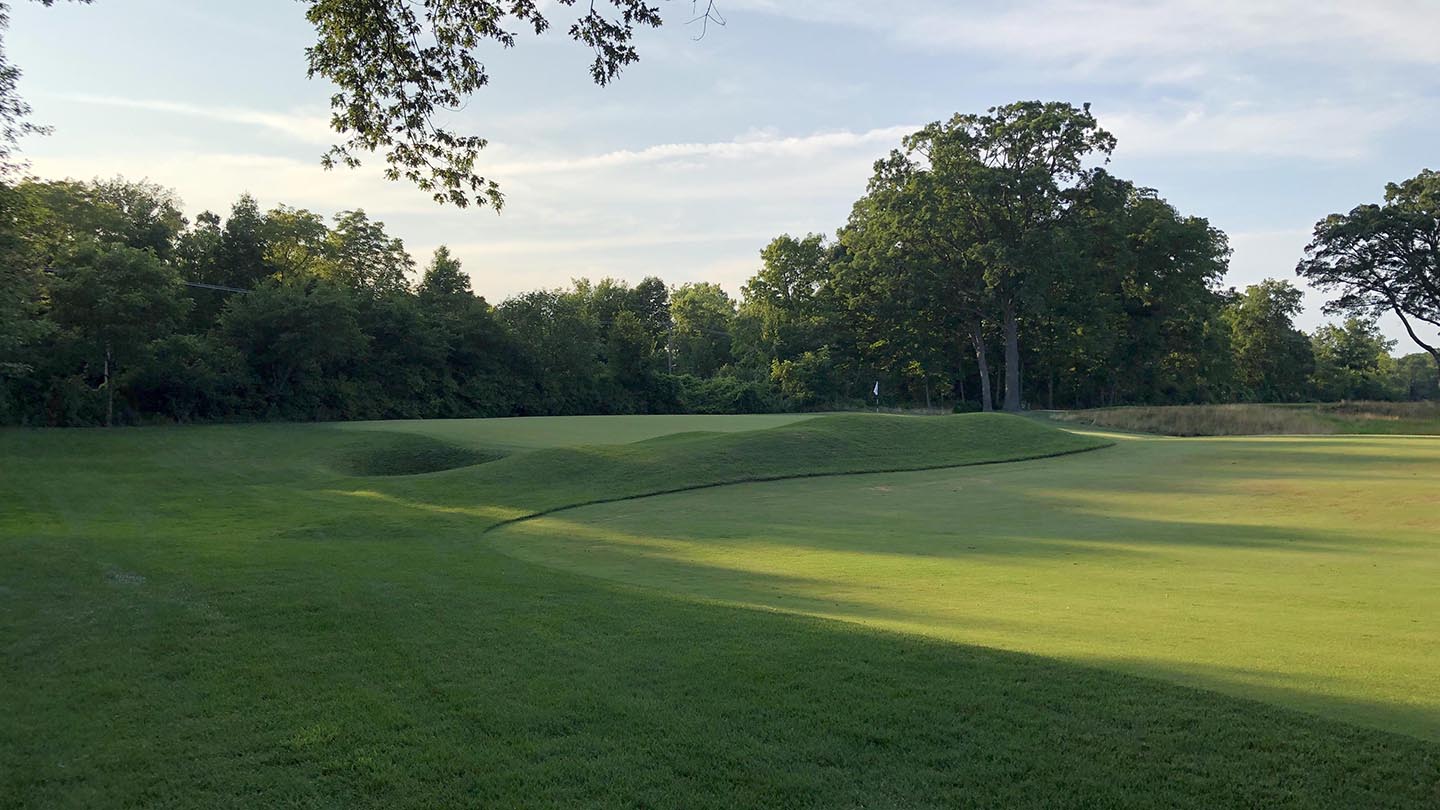
3rd green
-
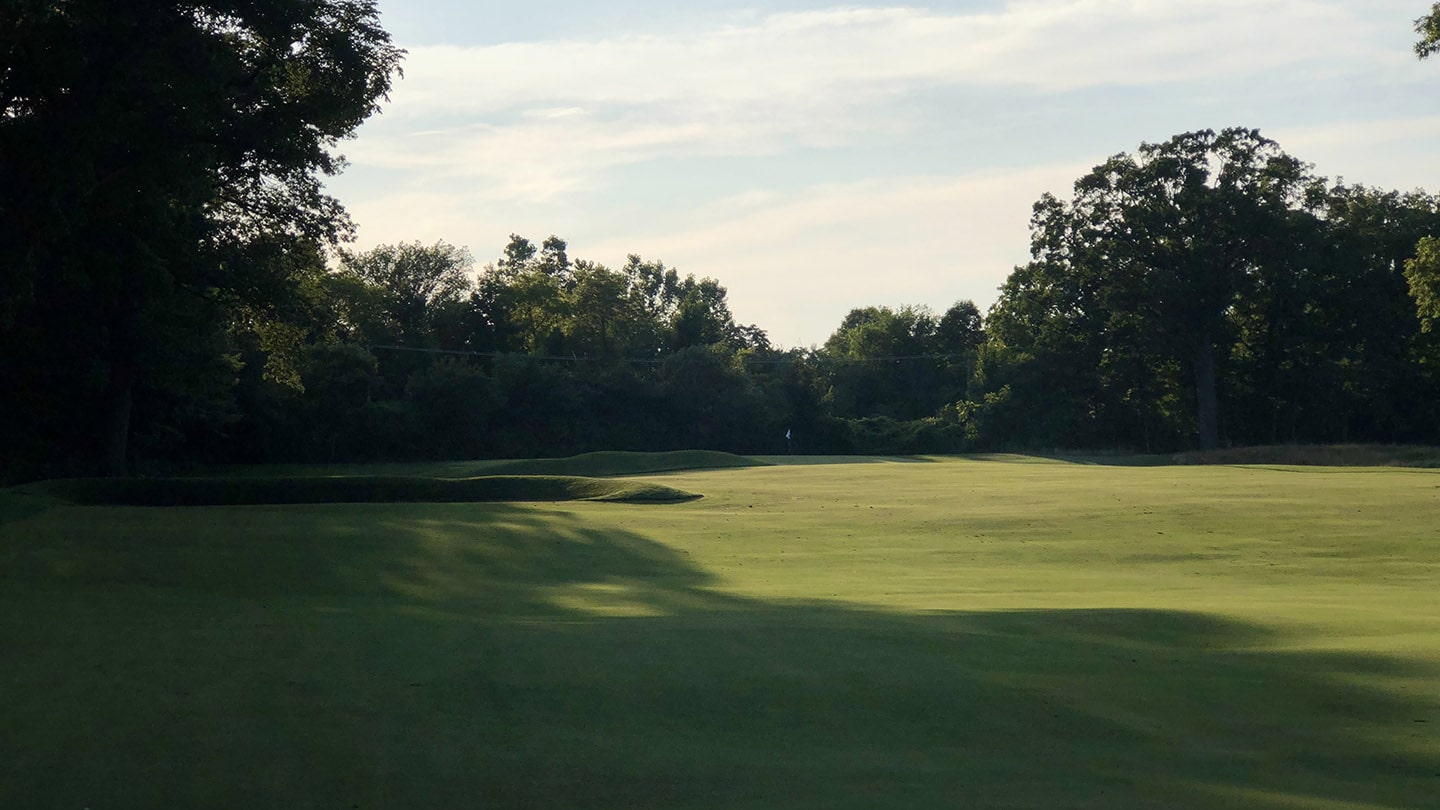
3rd fairway
-
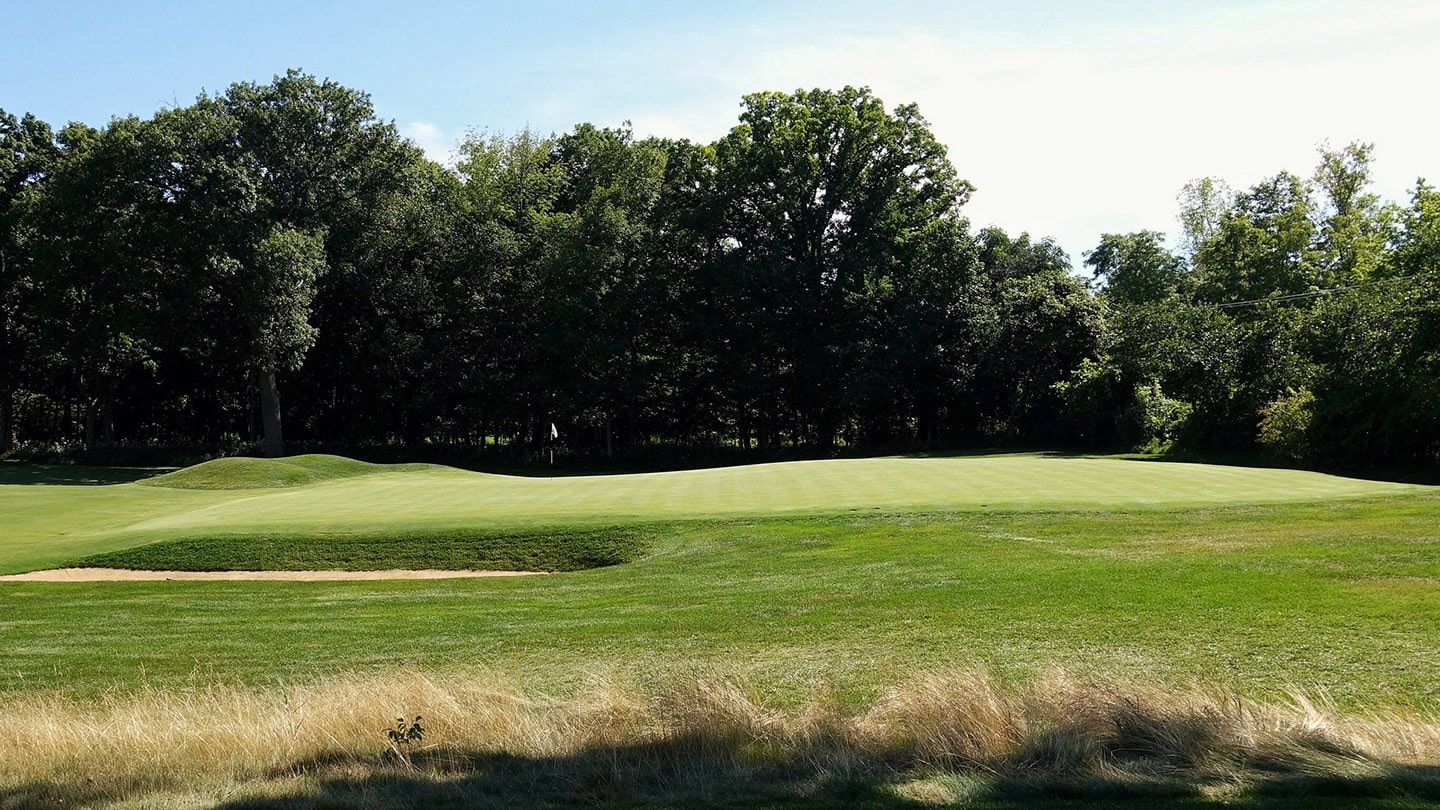
Greenside right on the 3rd
4th hole – par 4 – 393 yards
The ravine returns on the breathtaking 4th hole cutting across the front of the fairway and this time running up the right side. Sheridan Road and out of bounds runs up the left making the 4th one of the more demanding tee shots on property. The fairway has a swale 300 yards from the tee which can lead to some uneven lies. The green is masterful. It slopes from back to front and has a small thumbprint in the center which makes for difficult long putts.
-
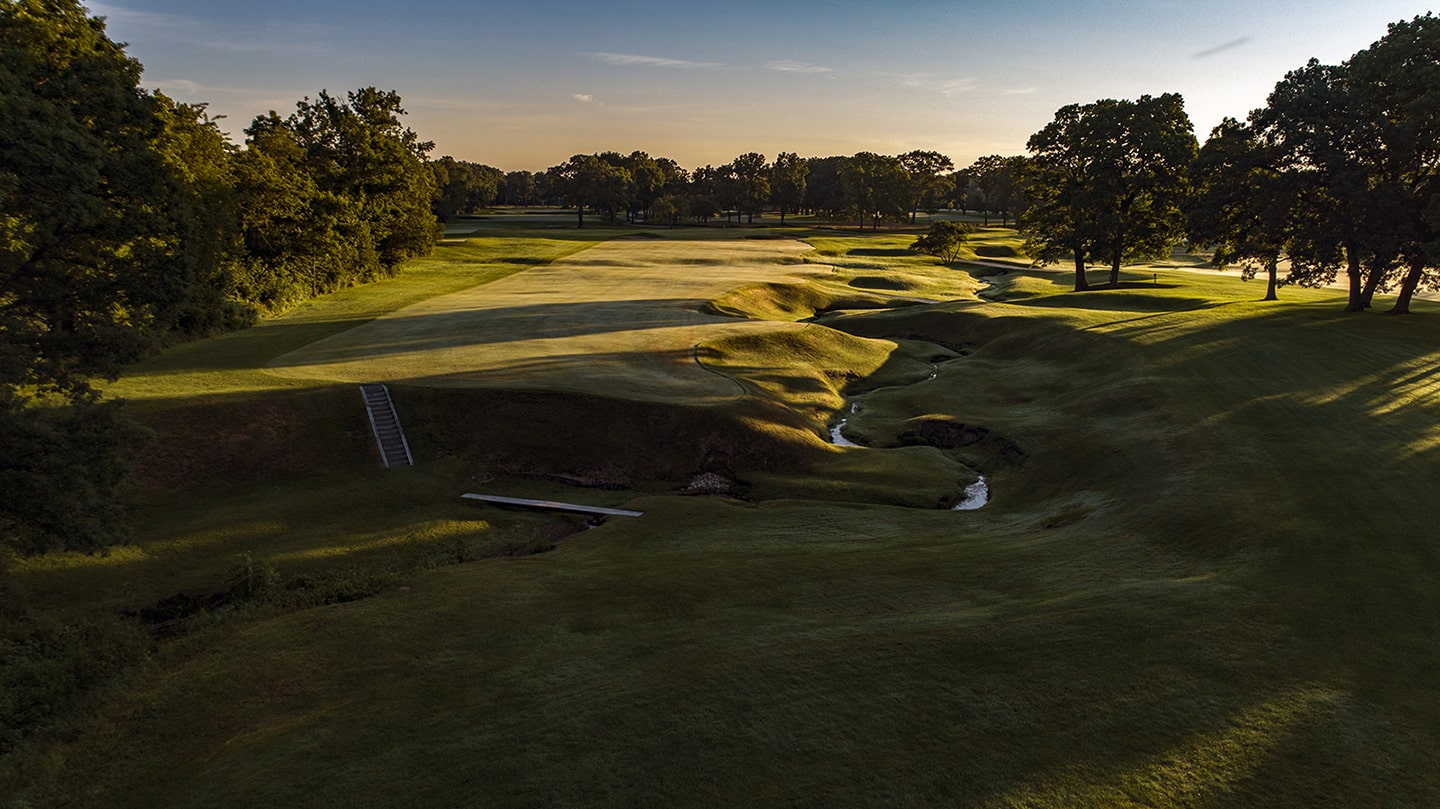
4th tee
-
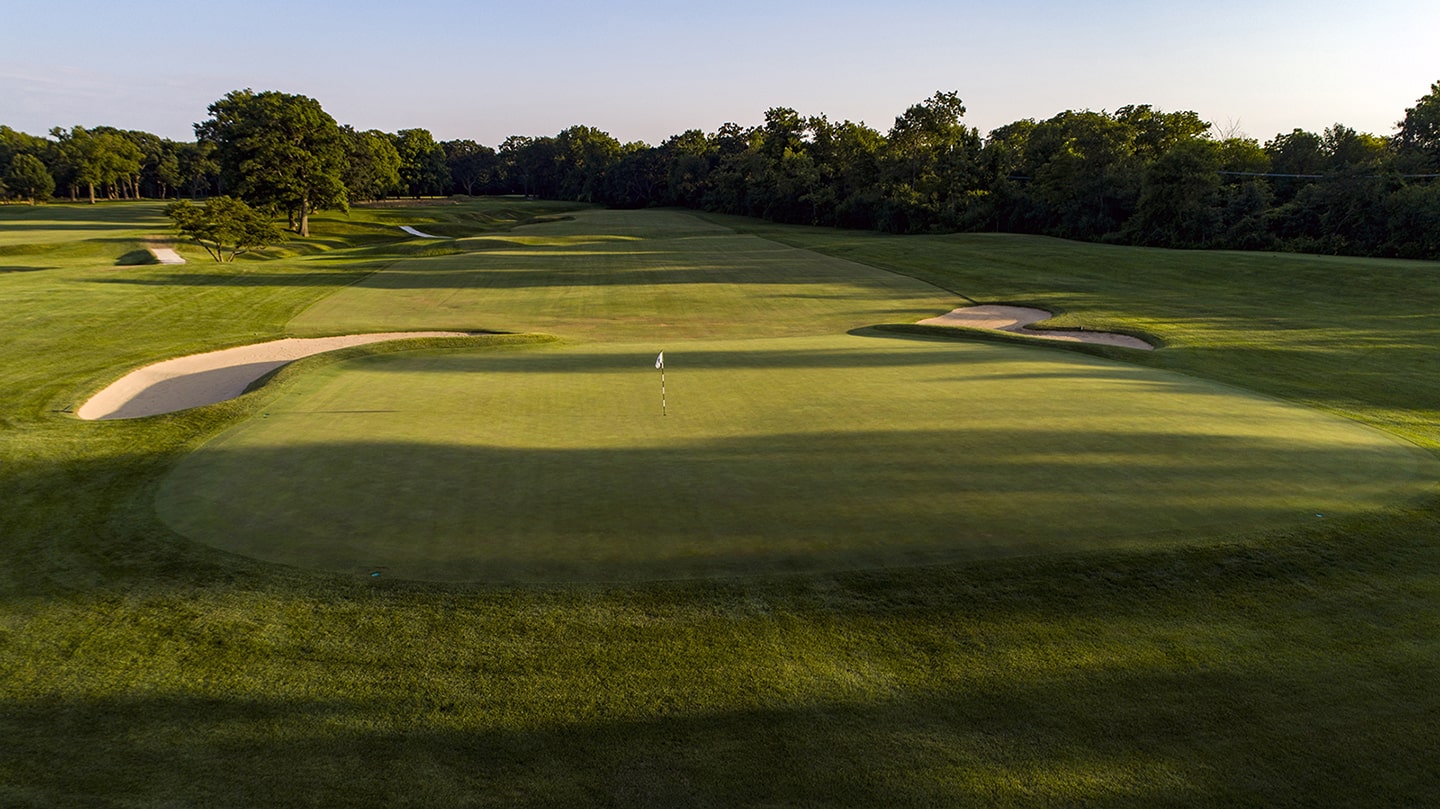
Behind the 4th green
-

Looking at the creek and 4th green
-
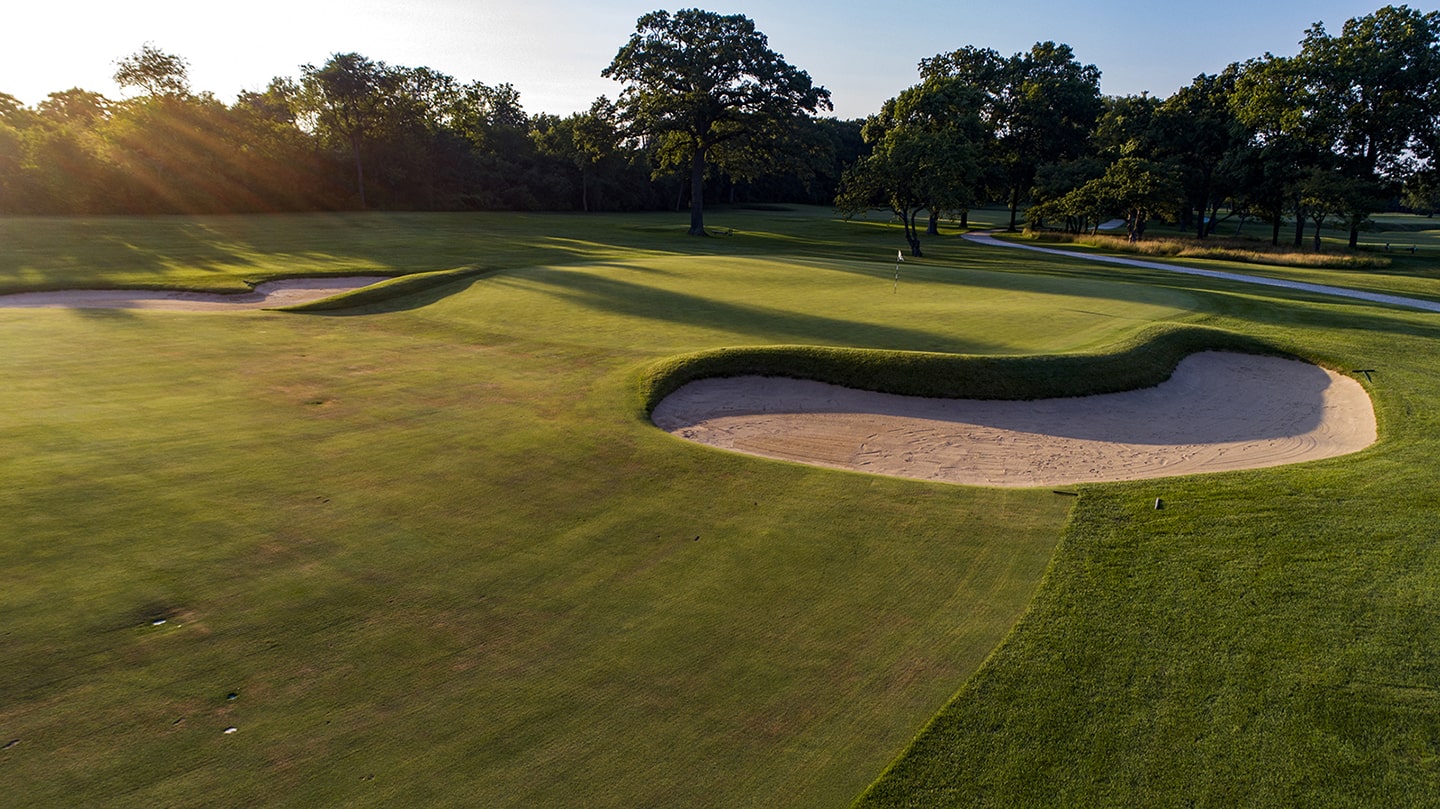
The contours on the 4th green
-
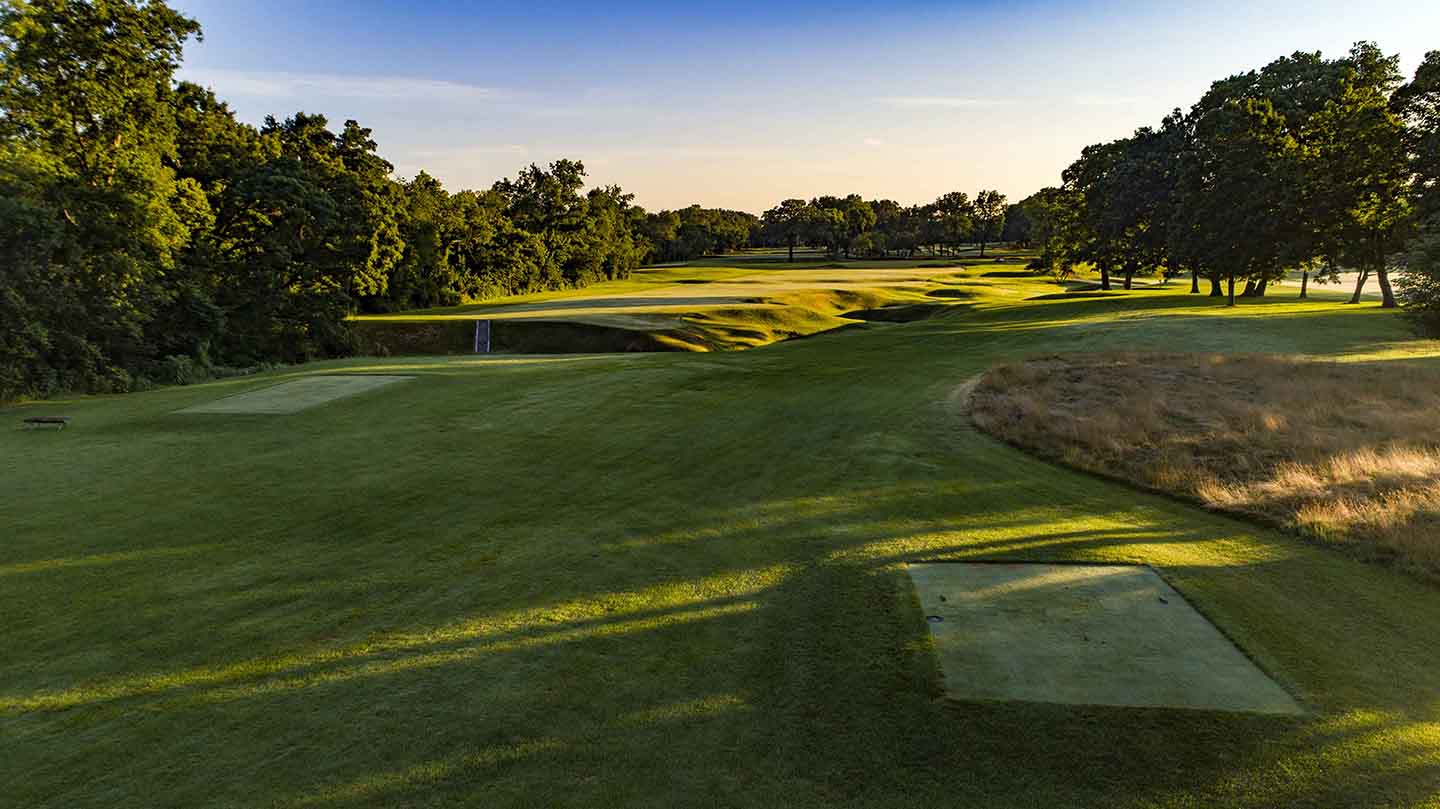
The 4th tee shot
5th hole – par 4 – 491 yards
The 5th is one of the most difficult par-4s in Chicago. The tee shot is demanding with another helping of out of bounds down the left side and trees to the right. Missing the fairway almost guarantees a layup short of the ravine which cuts across the center of the 5th. A tee shot up the left side provides the best angle to approach the green with a mid to long iron, but brings in the most risk. The green features a false front and a back tier. Par is always a great score at the 5th.
-
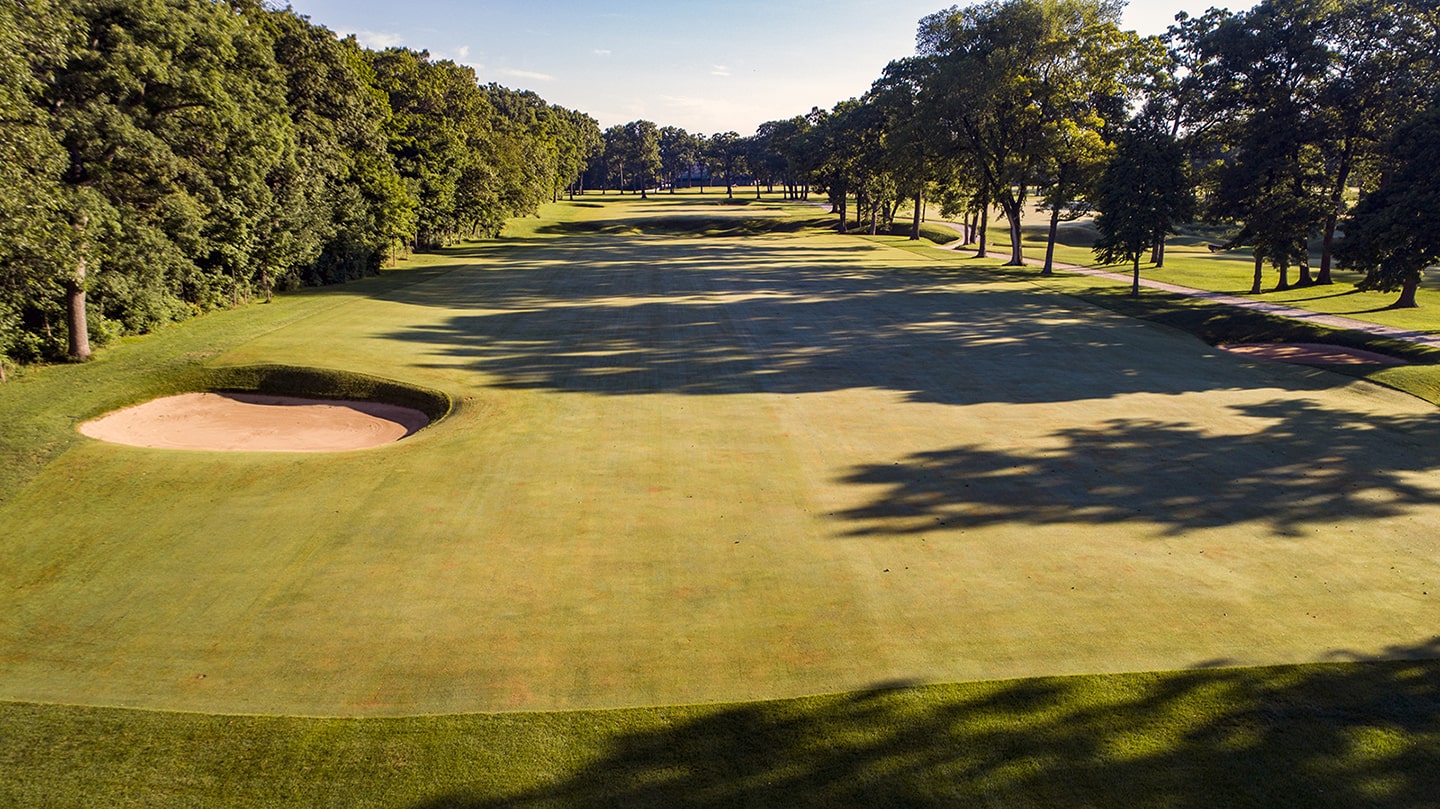
The 5th
-
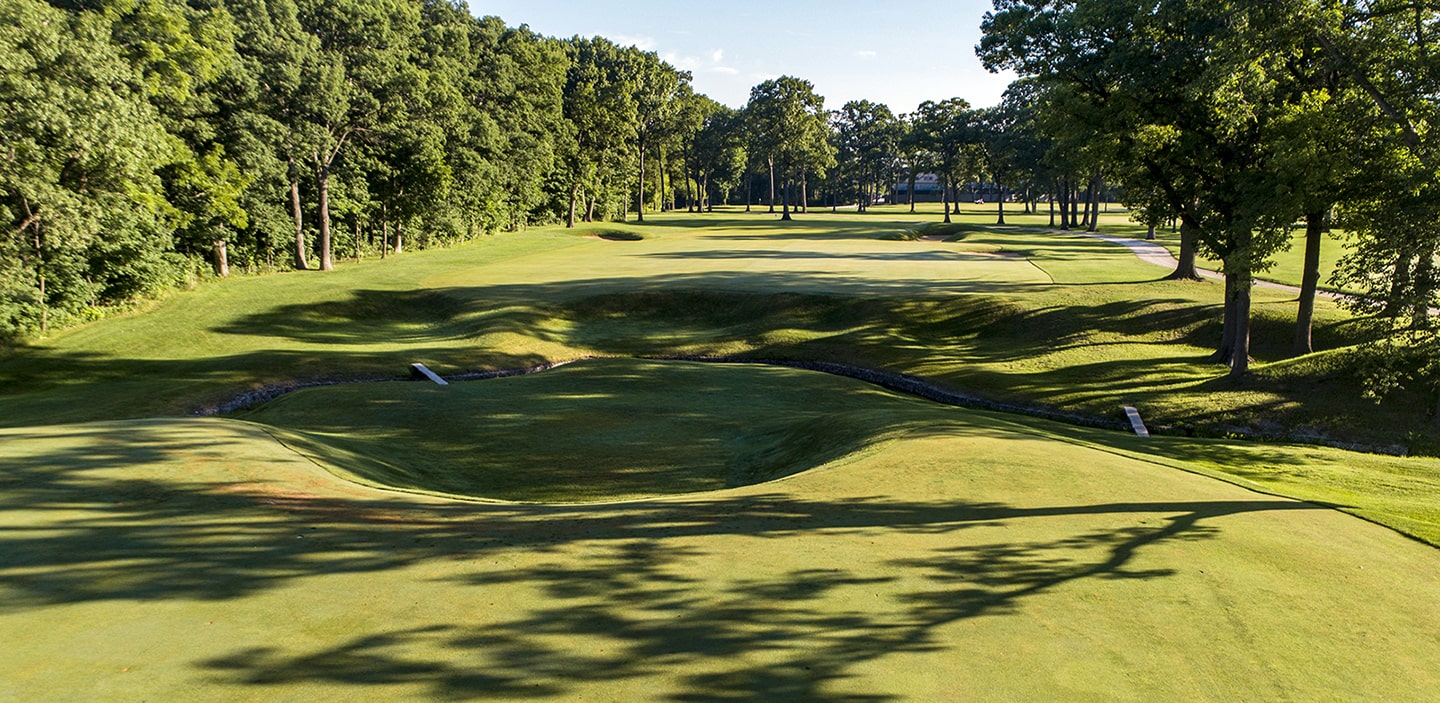
The ravine that splits the 5th fairway
-
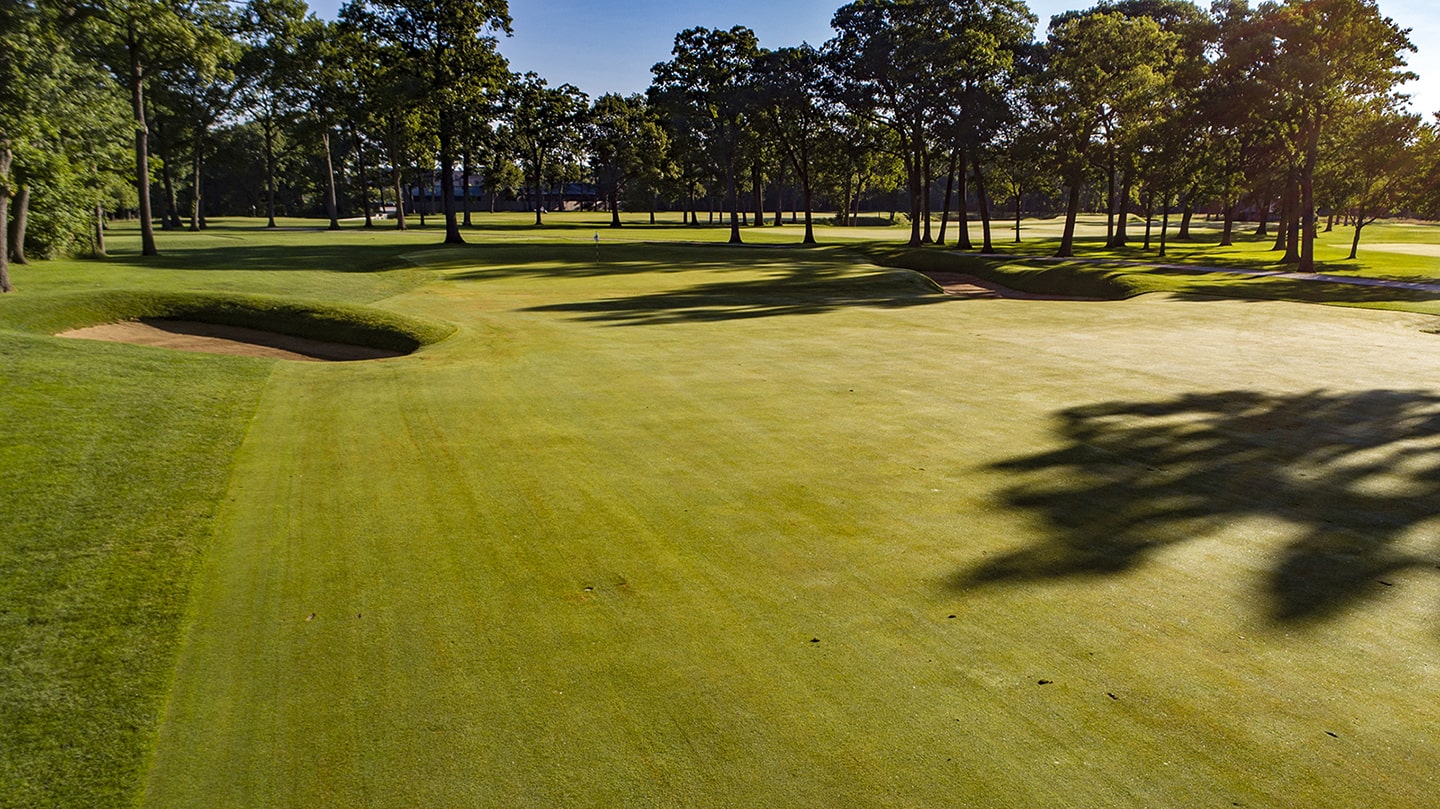
5th green
-
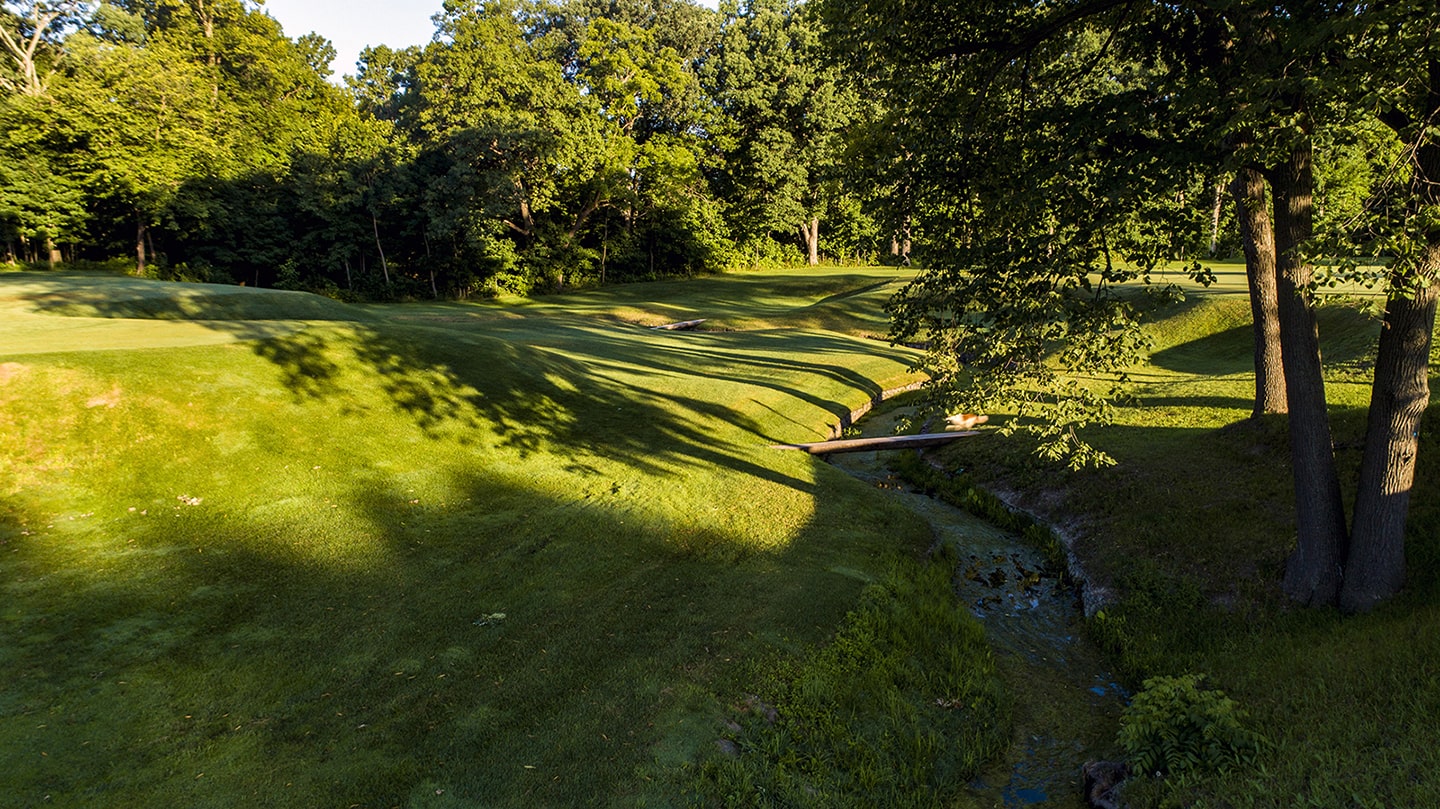
In the 5th ravine
6th hole – par 3 – 214 yards
The 6th is situated on another flat and ravineless part of the property. Again, Raynor employed a bold feature to fill the void. The 6th is Shoreacres’ Biarritz hole, a massive green complex that features a 60 yard long green that’s bisected by a six foot deep swale. The green depth allows the hole to play anywhere from 170 to 230, and orients due east with a cool lake breeze often making it even longer.
-
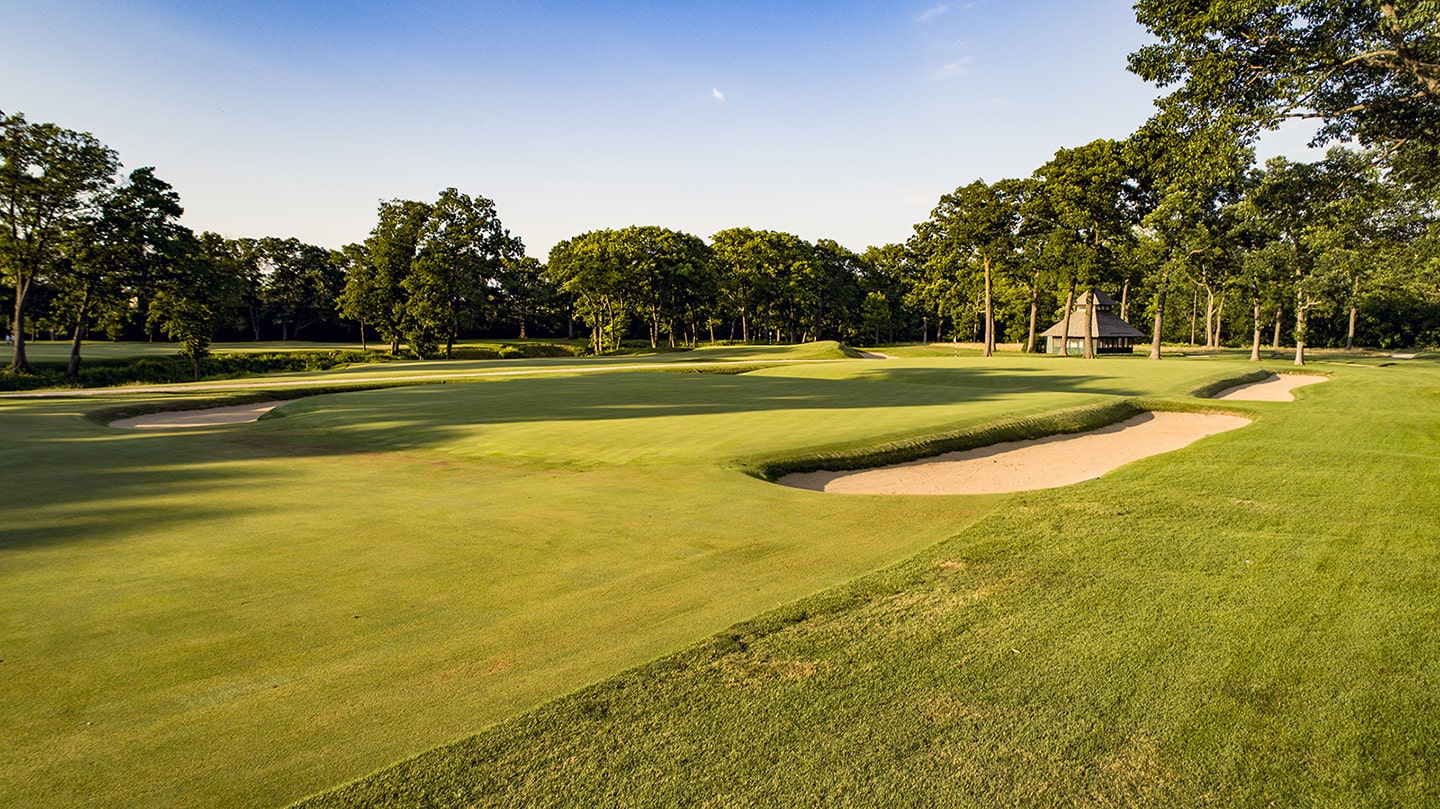
The biarritz 6th
-
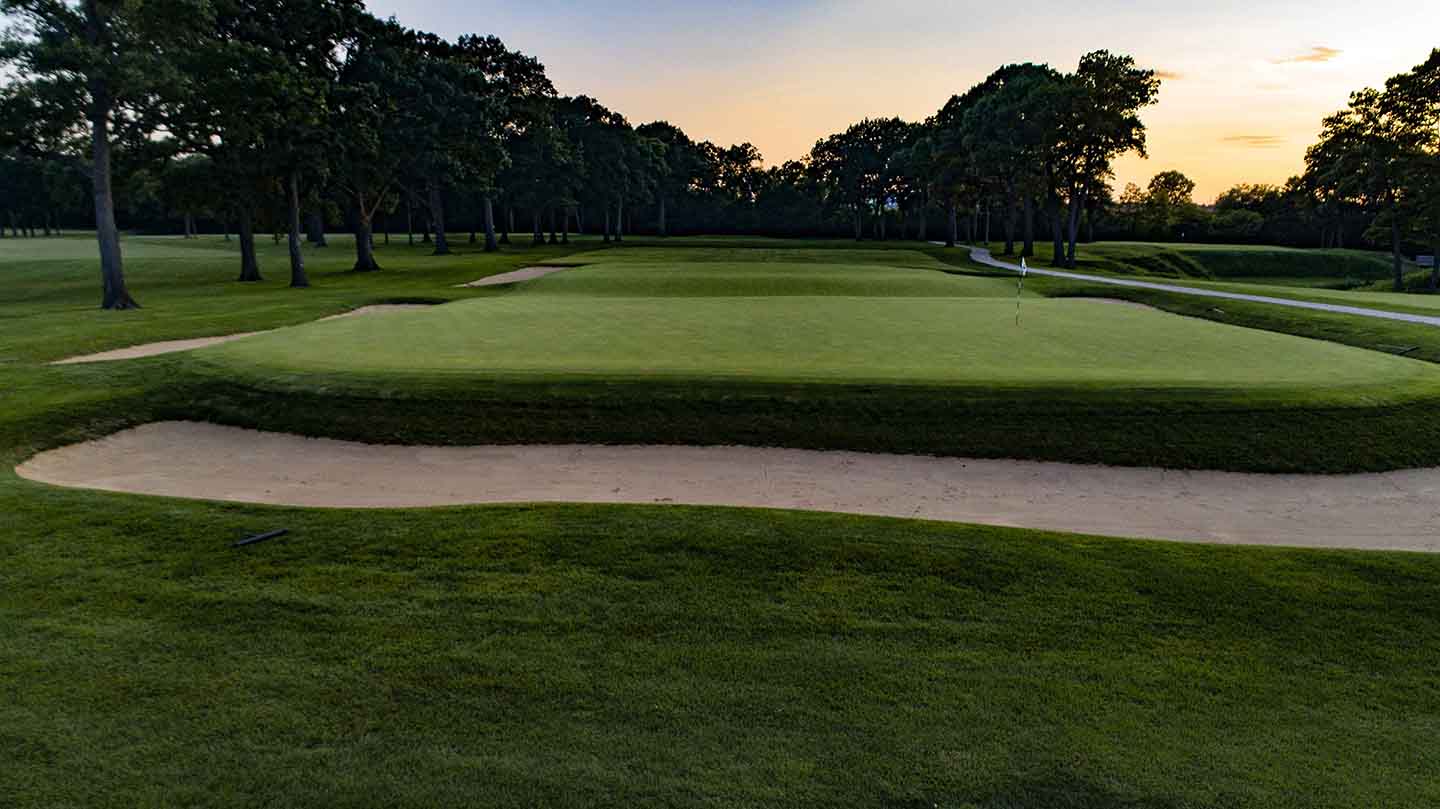
6th green from behind
-
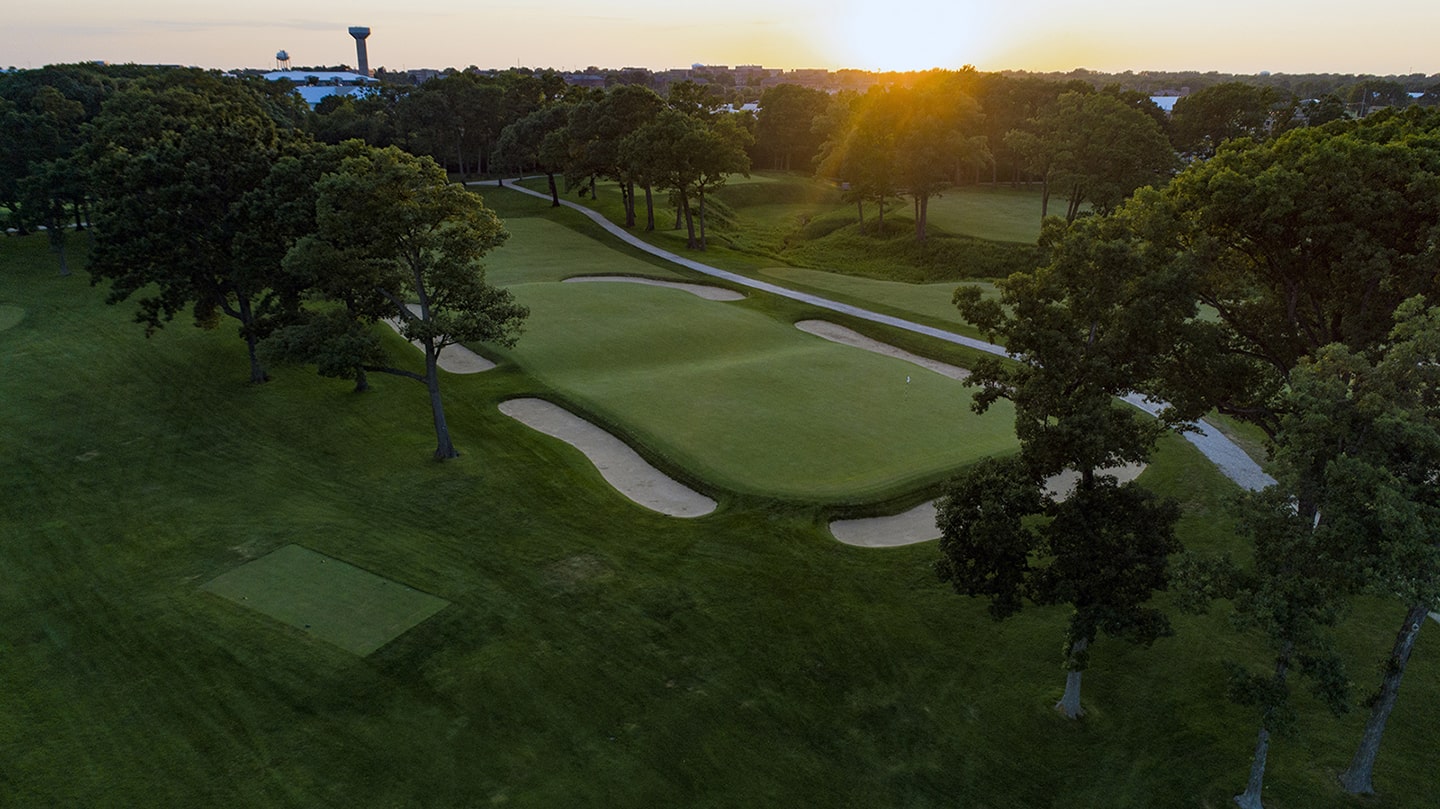
Behind and left of the 6th
-
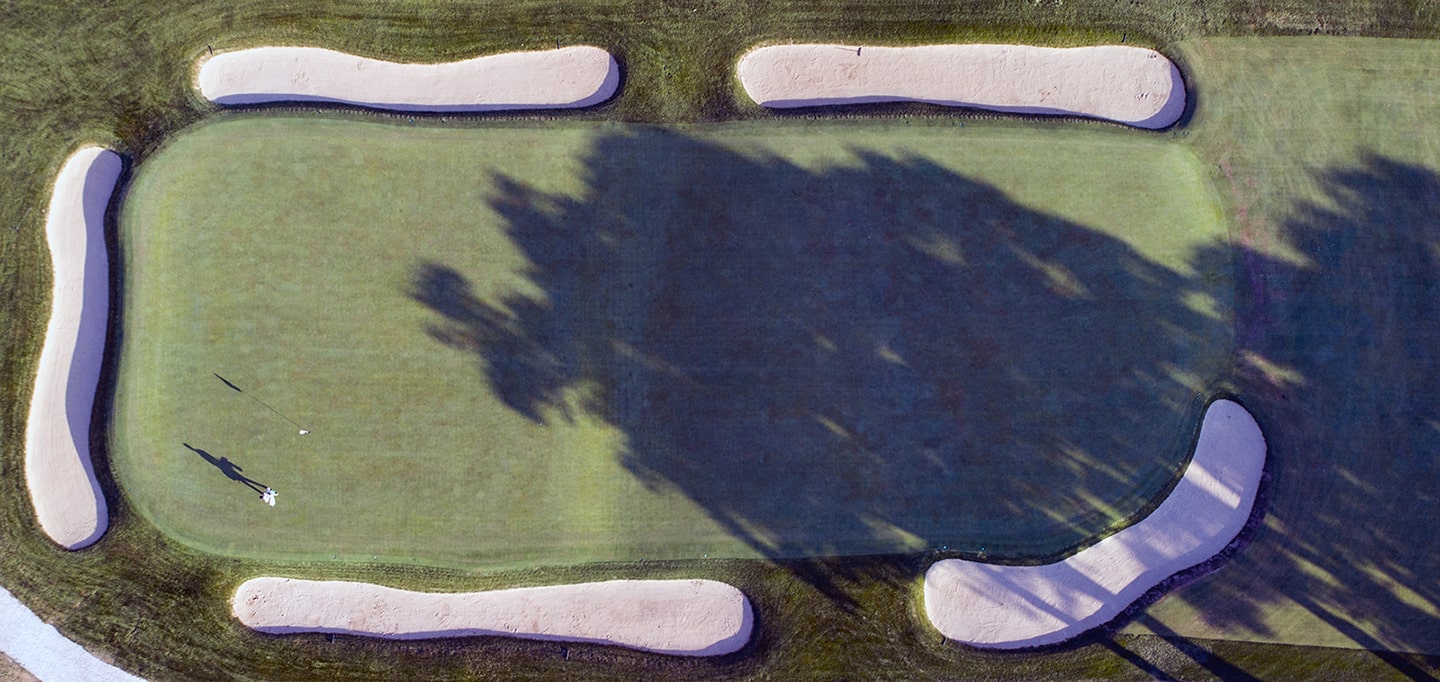
Aerial of the 6th green
7th hole – par 4 – 487 yards
The long par-4 7th tees off over the ravine which runs up the right side. The fairway is abundantly wide and allows a tactical player to set up an angle for their long-iron approach. The 7th is Shoreacres’ Double Plateau green, with its three distinct sections. The front right is the most accessible and sits at ground level. The back right is the smallest section and guarded by bunkers on either side. The most difficult pin to access is the front left pin – it’s guarded by a deep bunker and sits on a plateau. To get a long iron close a player must play up the right side of the fairway.
-

7th tee
-
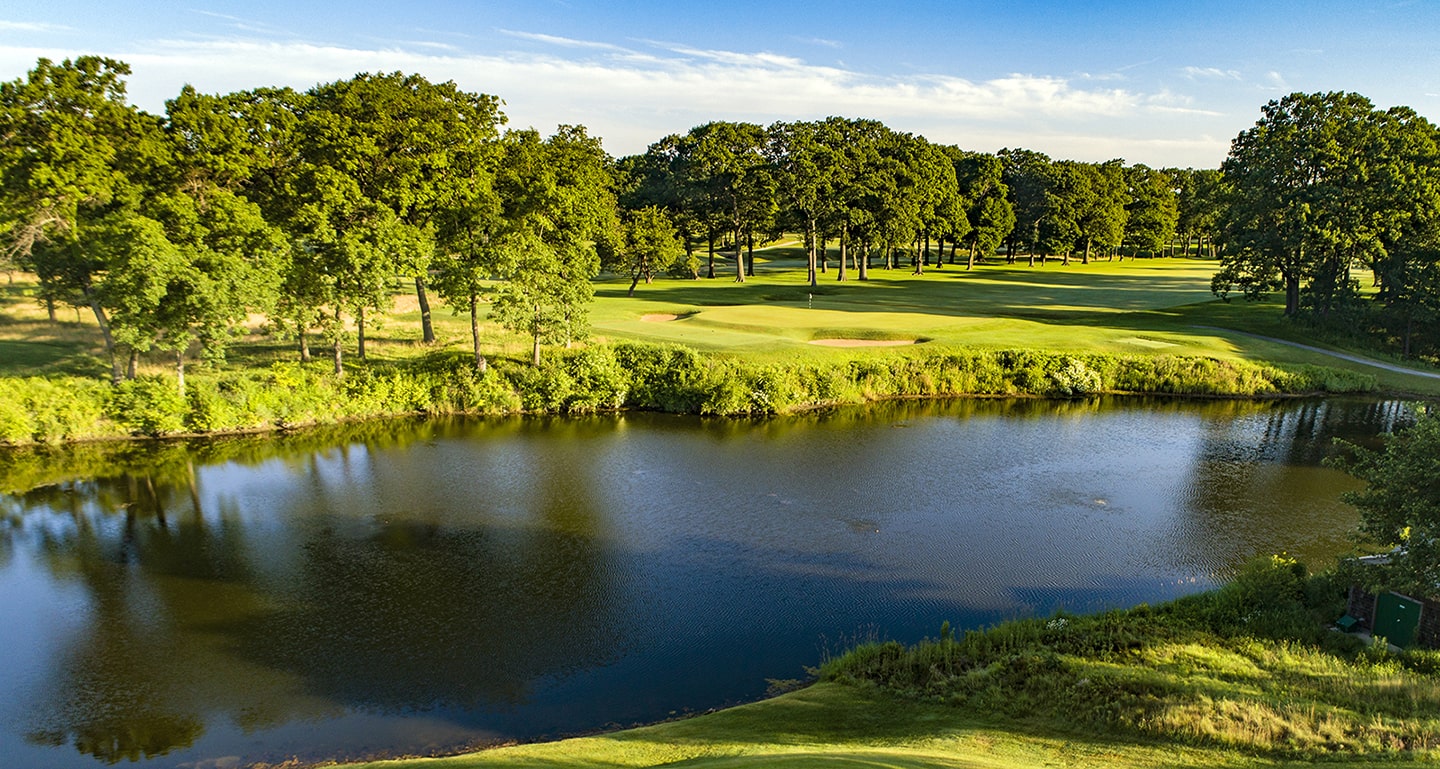
Looking back at the 7th green
-
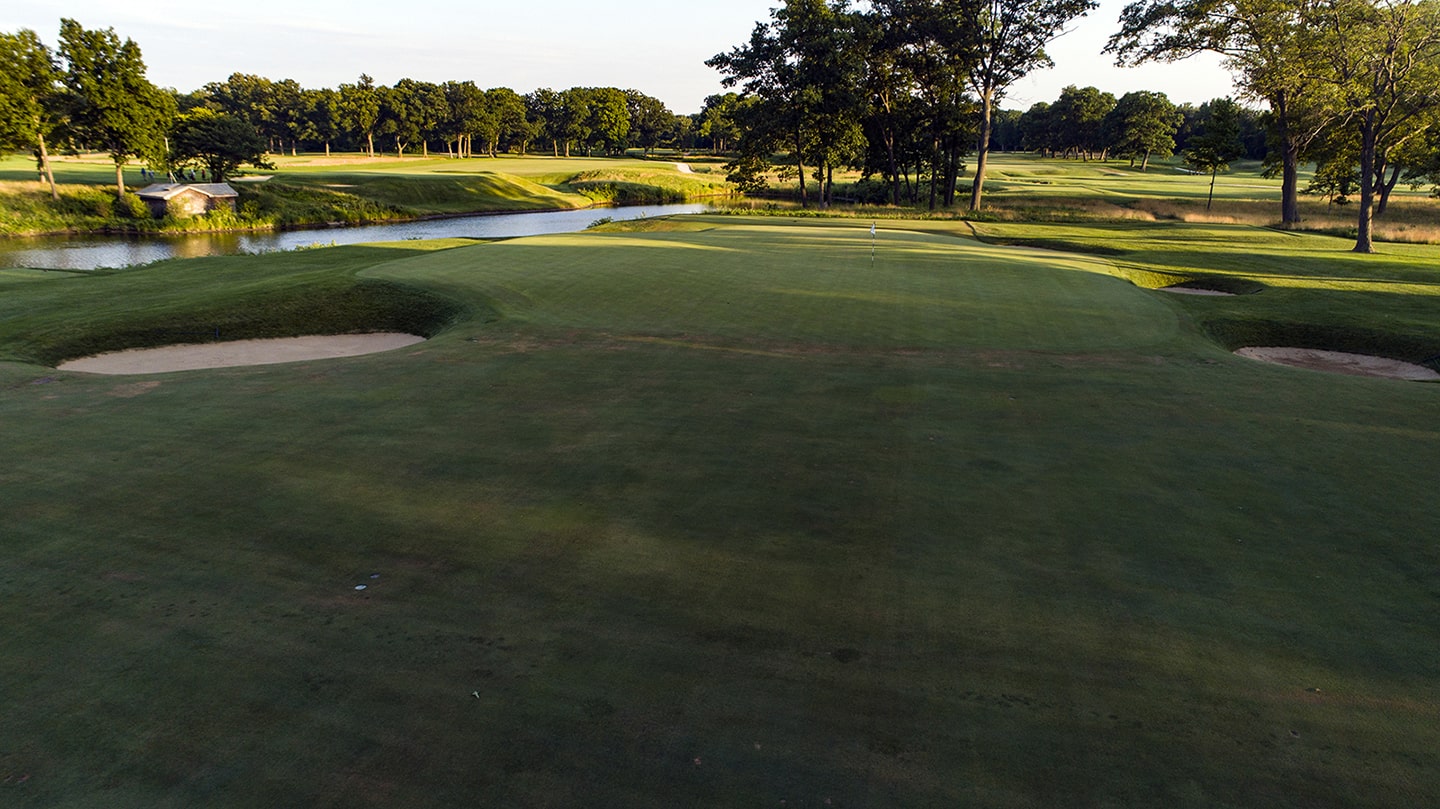
In front of the 7th green
-

Behind the 7th
8th hole – par 3 – 196 yards
Shoreacres turns back east for the par-3 8th, their version of the Eden Hole. Today, the 8th plays over a pond but originally it was the ravine. The pond was damned for irrigation purposes in the ‘60s. For aesthetic continuity, it would be tremendous to see the ravine restored one day. The mid-length par three presents an intimidating shot to the perched and severe green which slopes from back to front and has a subtle false front to repel balls down the apron and into the rough.
-
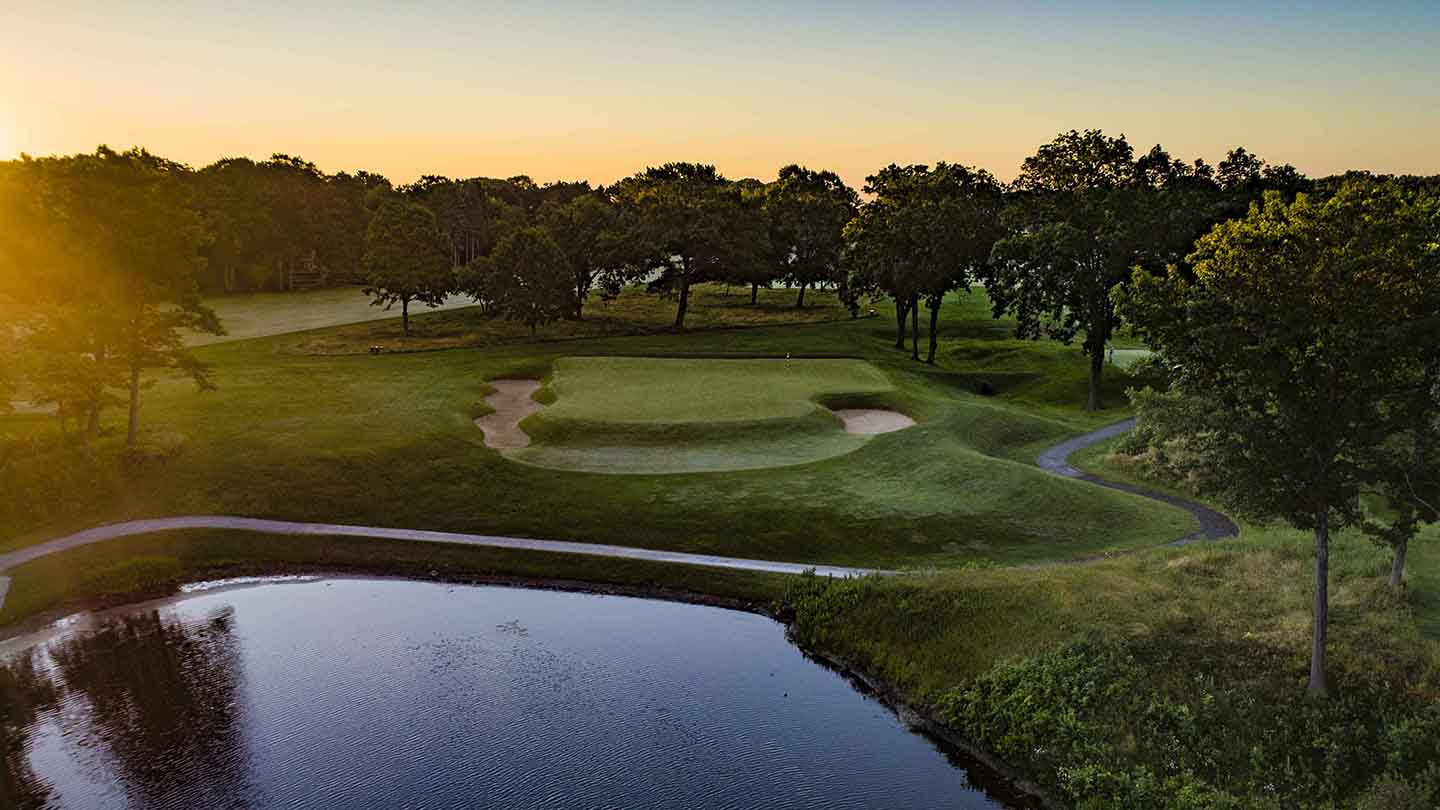
8th tee
-
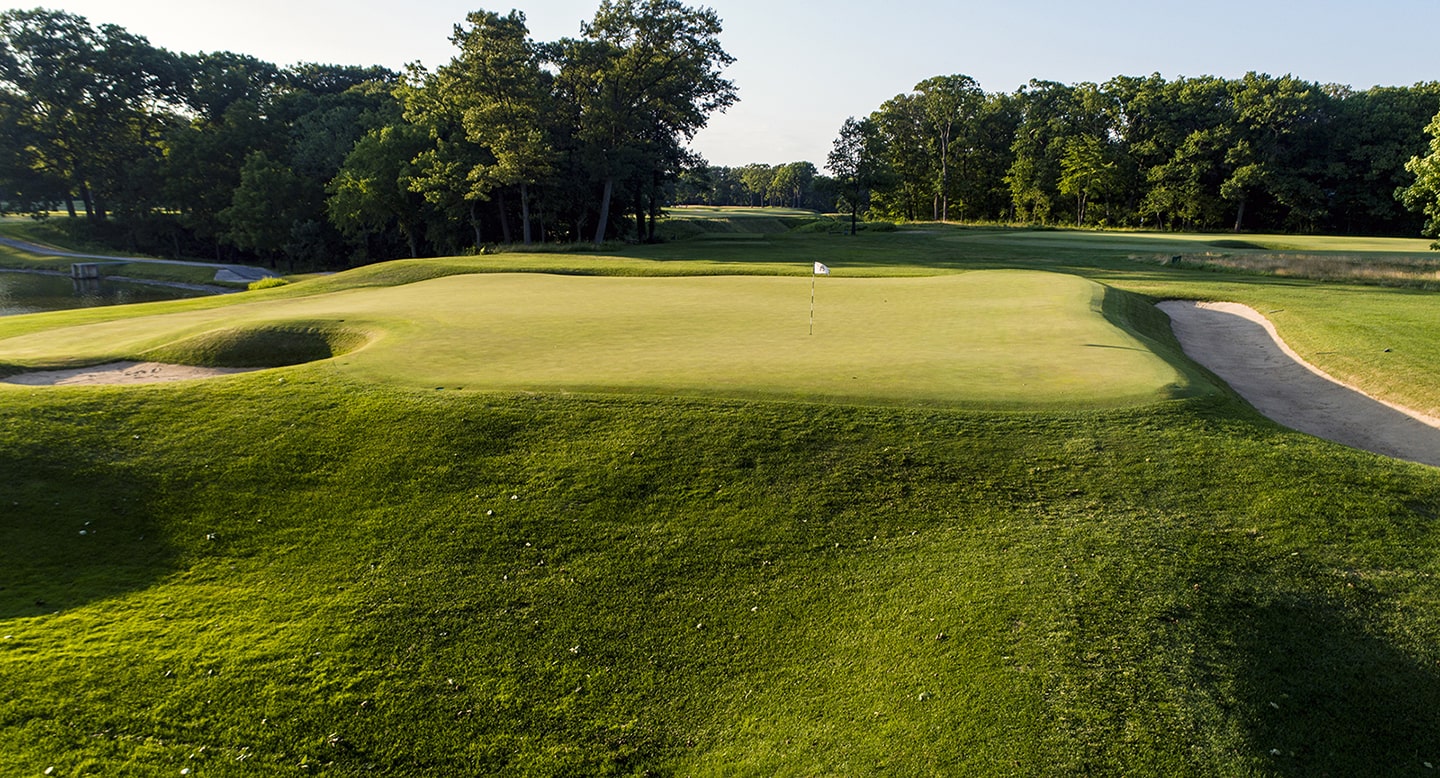
Right of the 8th green
-
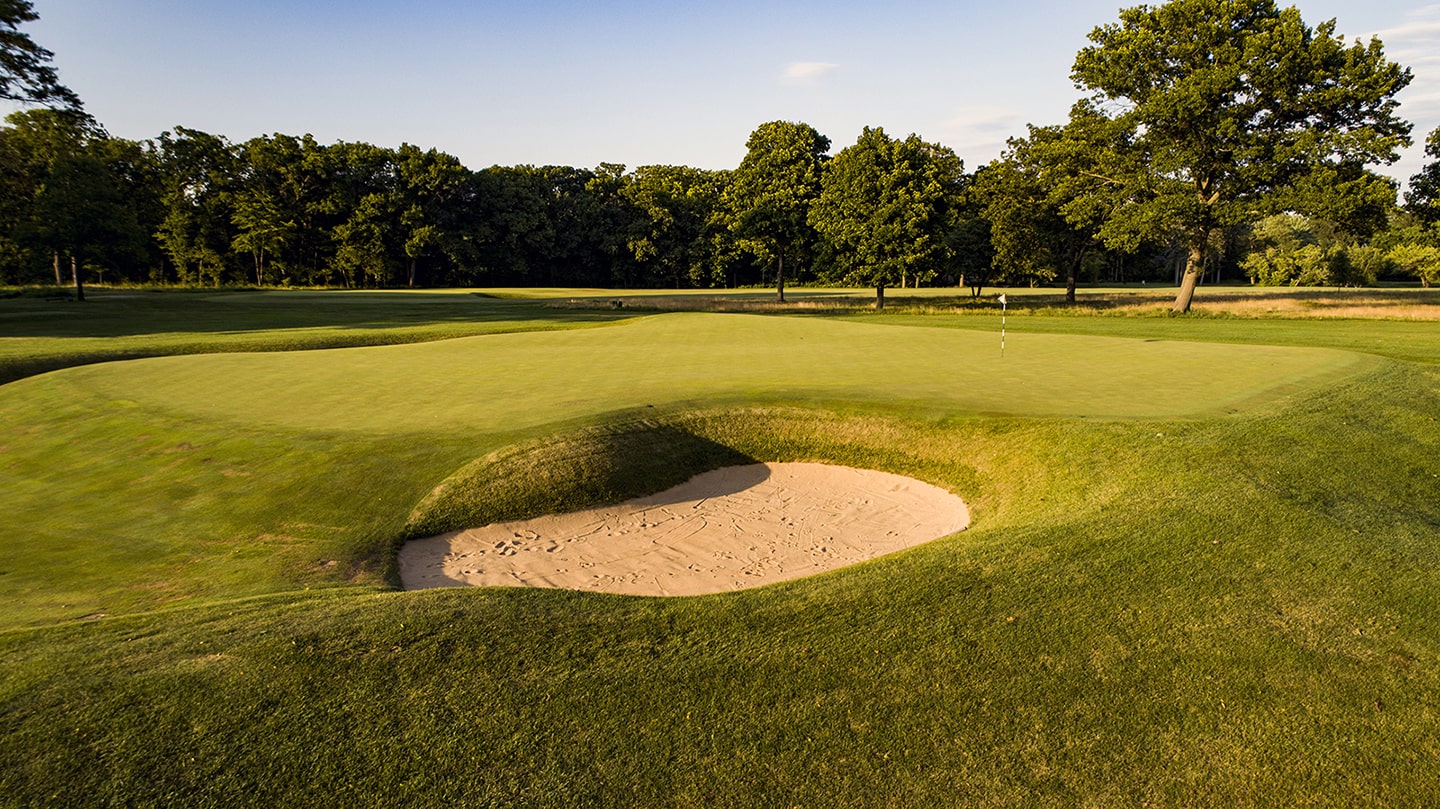
The 8th, Eden
-
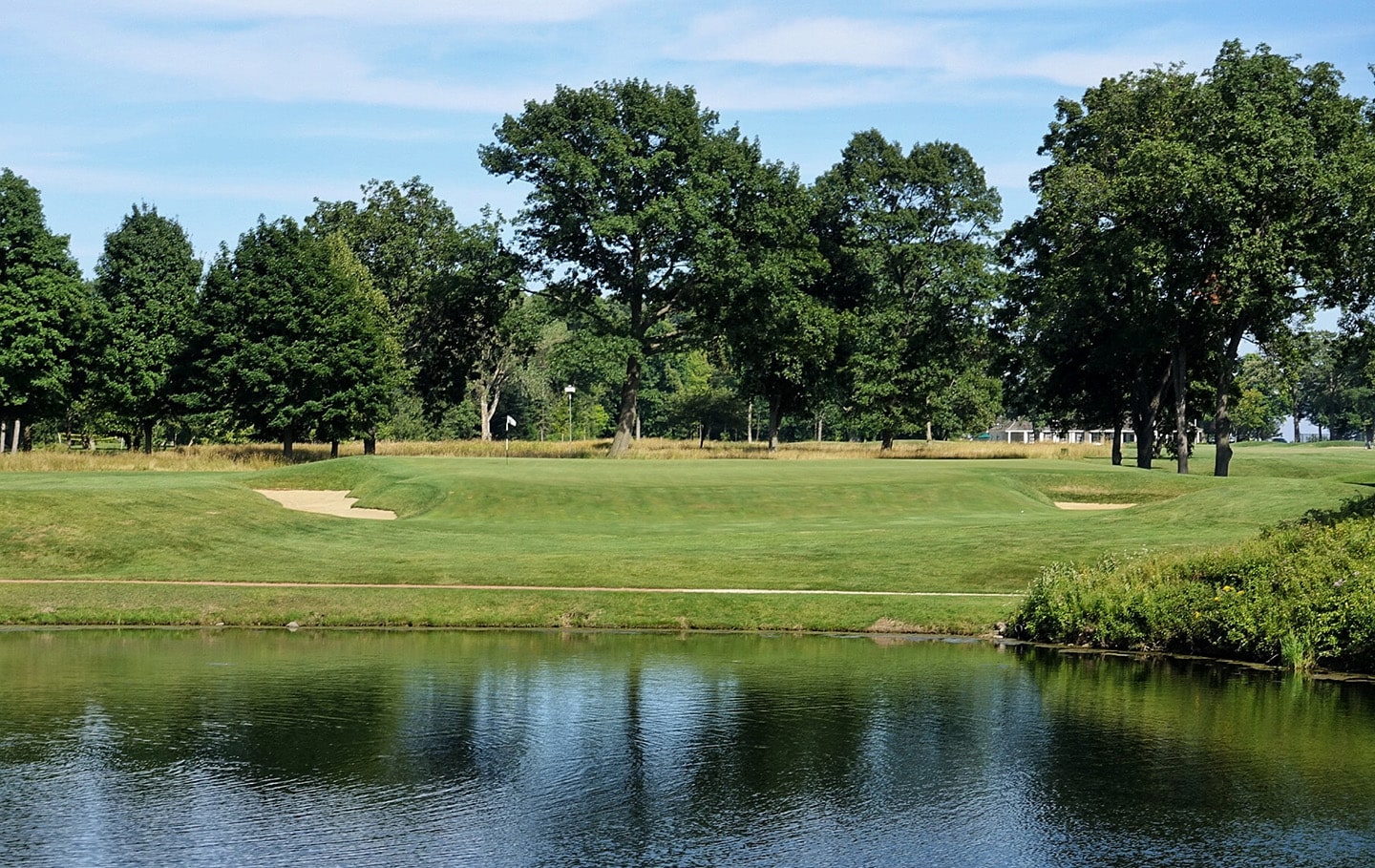
9th hole – par 4 – 388 yards
The 9th continues east and away from the ravine. It shares a fairway and dramatic bunkering with the neighboring 18th. There is abundant room to the right to miss but it leaves a longer approach shot from a disadvantaged angle. The ninth is often overlooked but its green evokes discomfort and can sneak up on players.
-
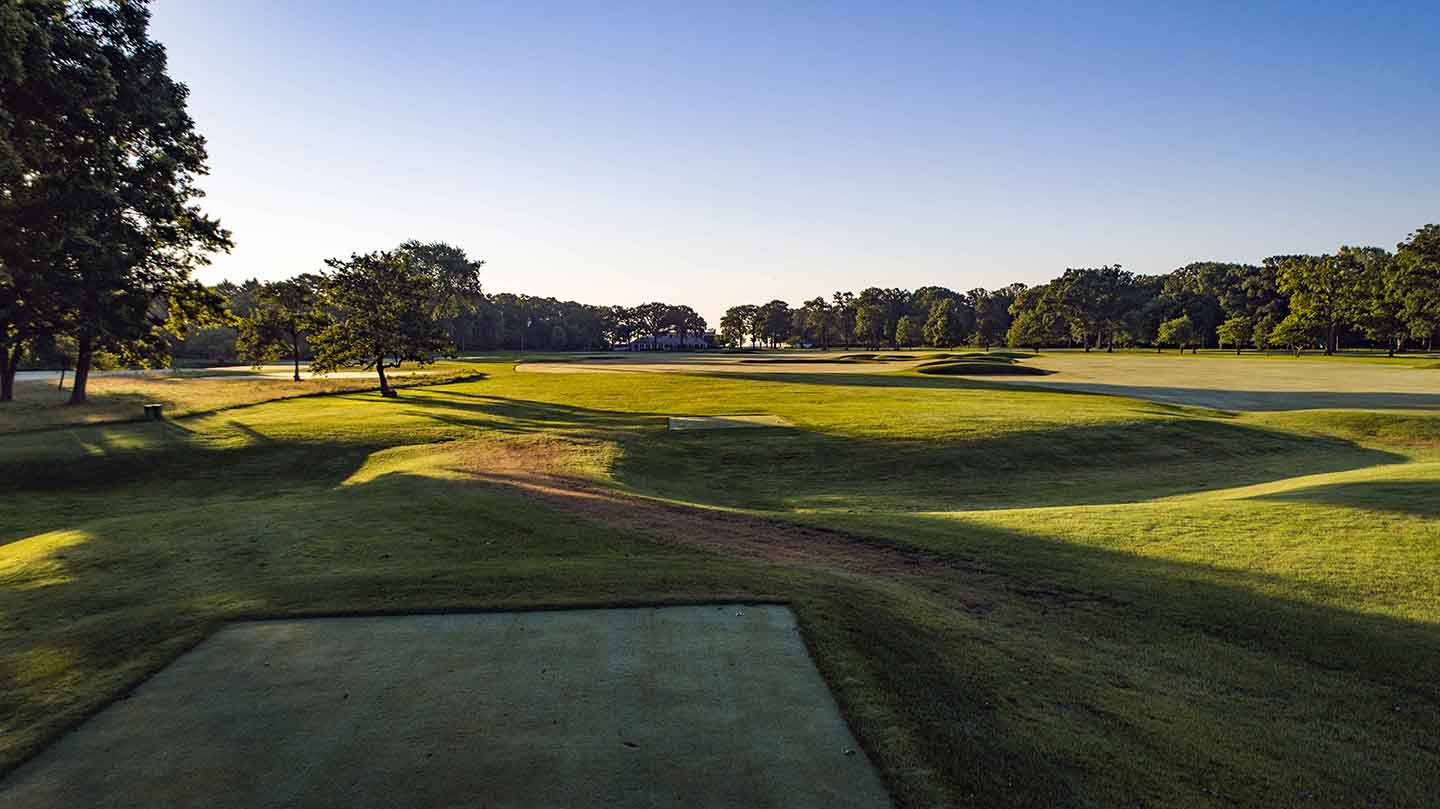
The 9th tee
-
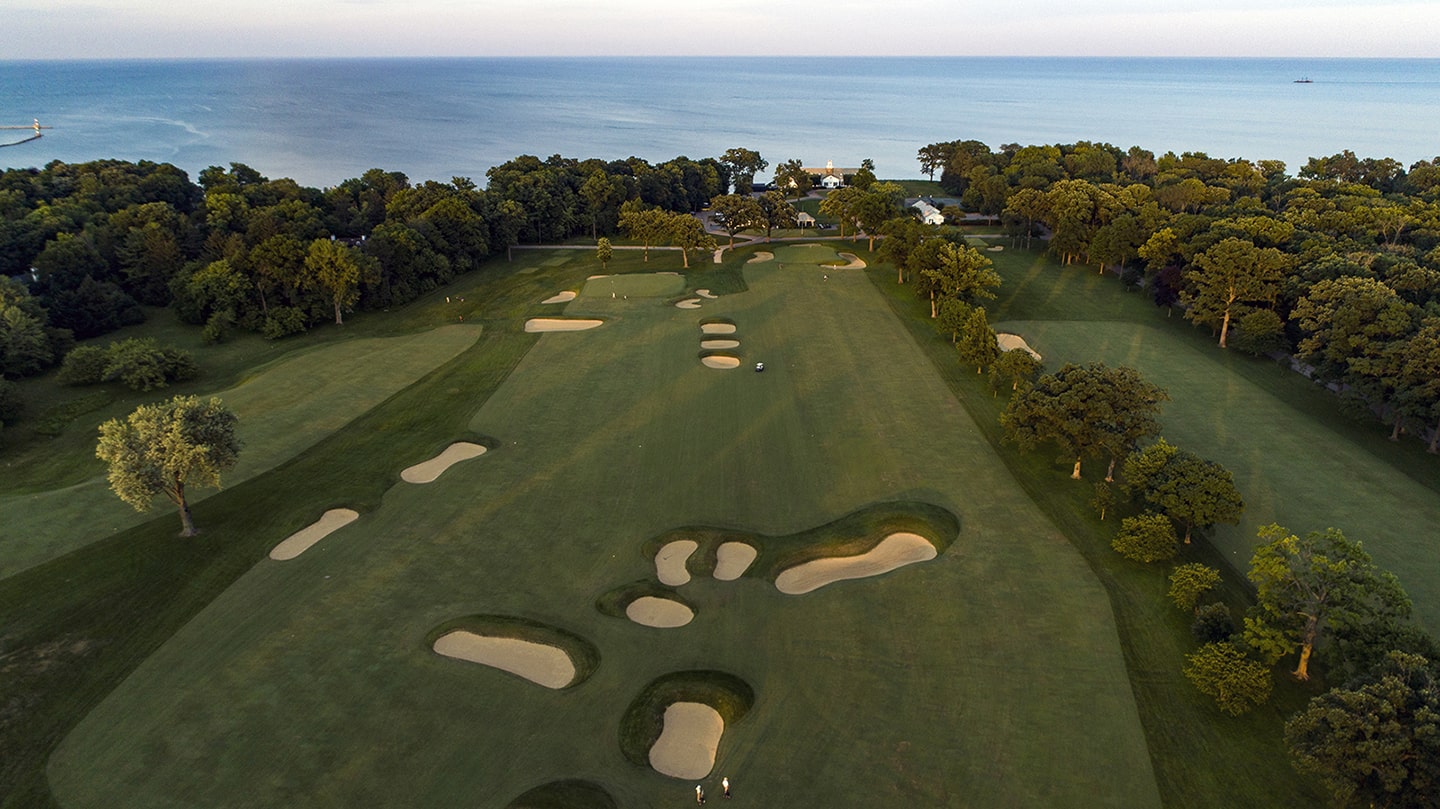
The 9th on the left shares a fairway with the 18th
-
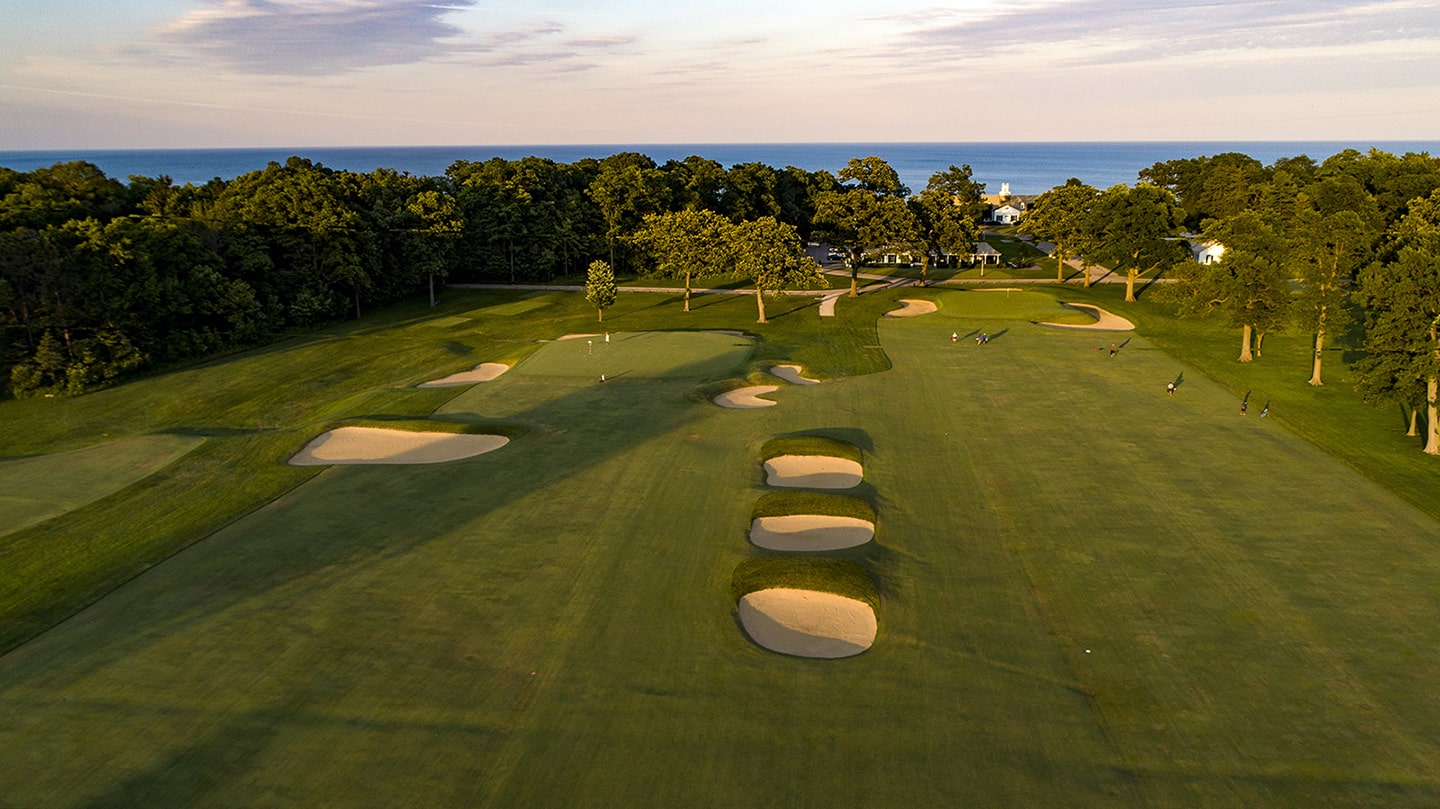
The 9th green on the left
-
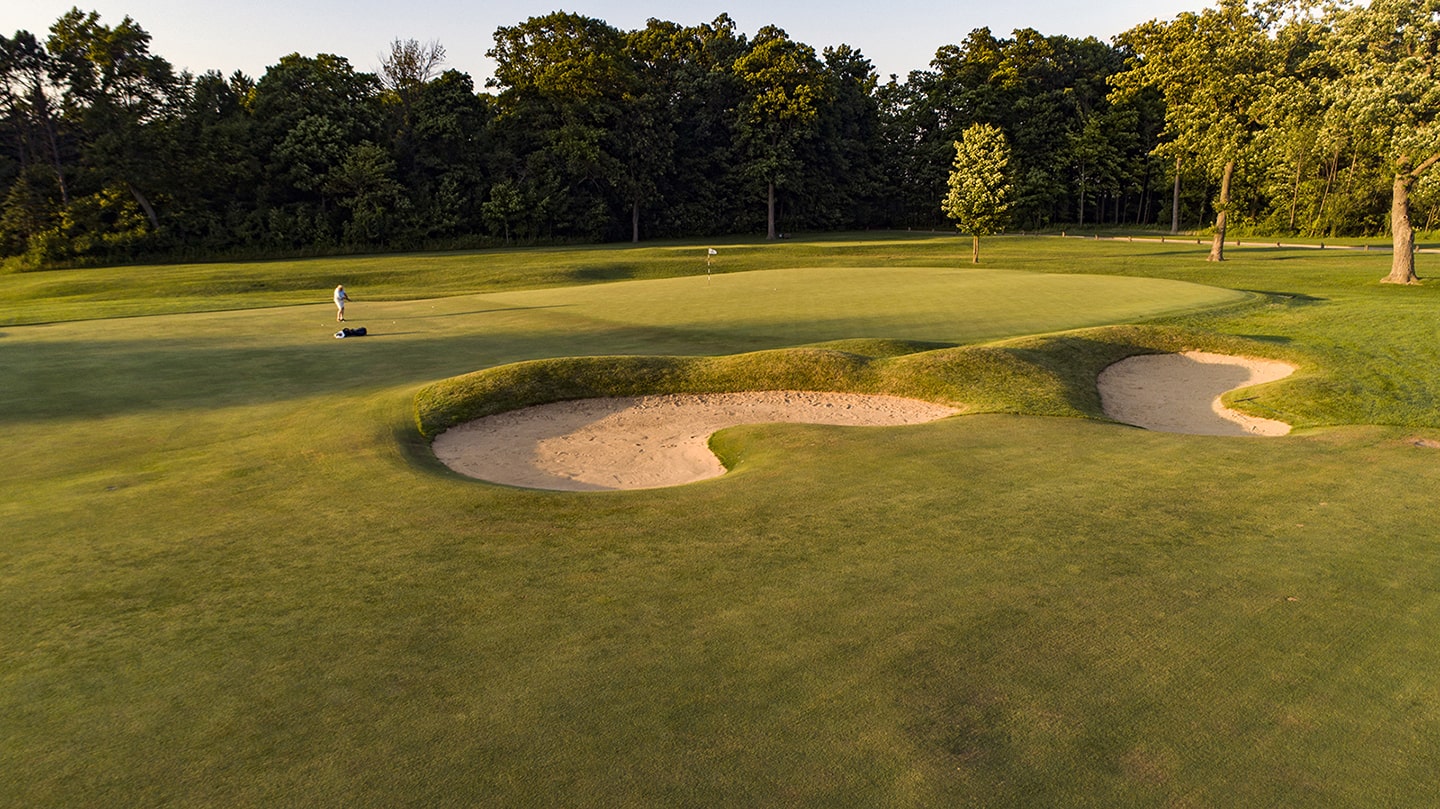
10th hole – par 4 – 467 yards
The round turns and heads back out to the ravine-scape for the back nine. Kicking things off is perhaps America’s finest rendition of the Road Hole. This brawny par-4 asks players to bite off as much as they can chew from the tee. The primary hazard is a ravine that cuts diagonally up the right side. A daring player who takes on the ravine is rewarded with the ideal angle into the difficult green complex. The green has a severe false front and a deep front left bunker guarding approach shots. It is quite shallow, leading to over-aggressive players finding the back bunker. The 10th is one of the finest holes in America.
-
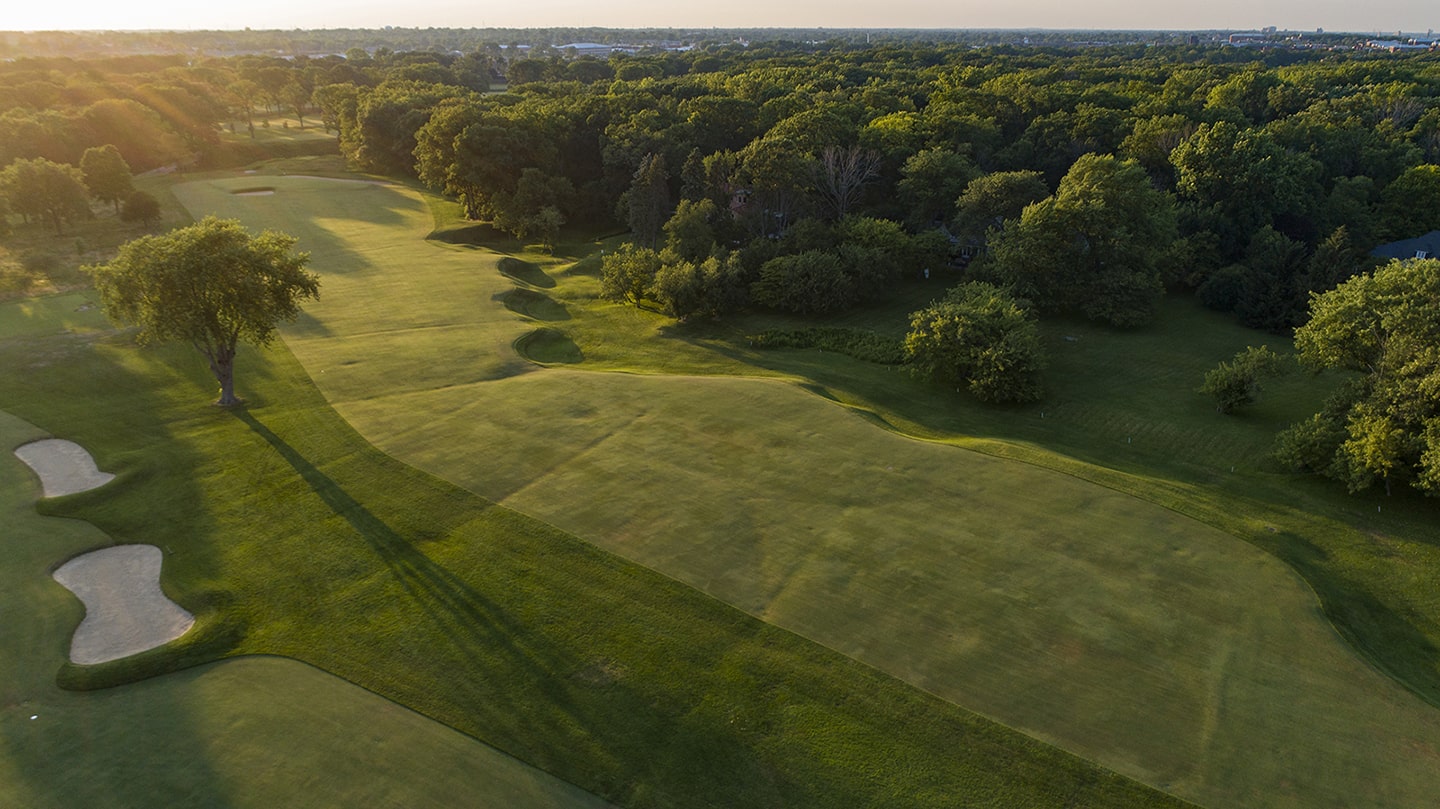
10th hole
-
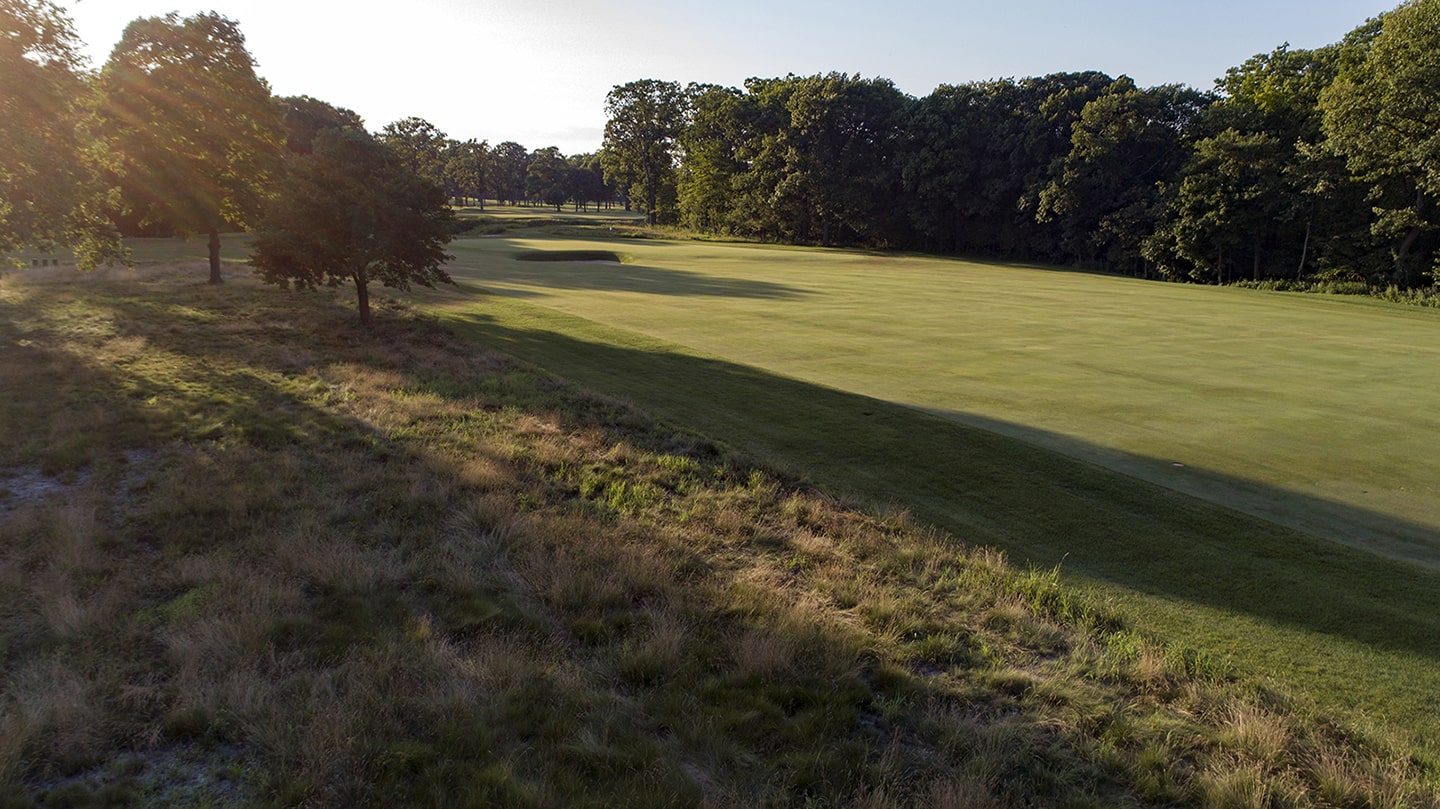
-
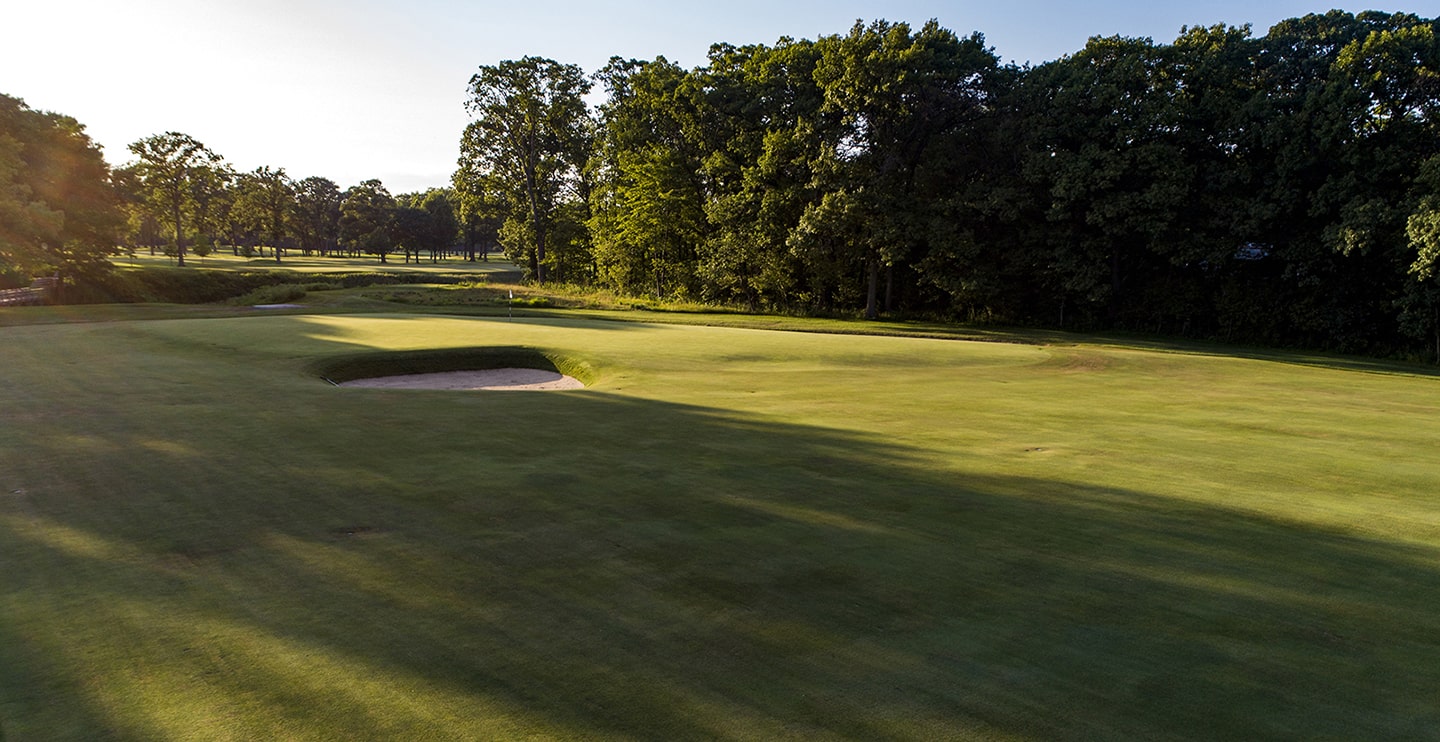
-
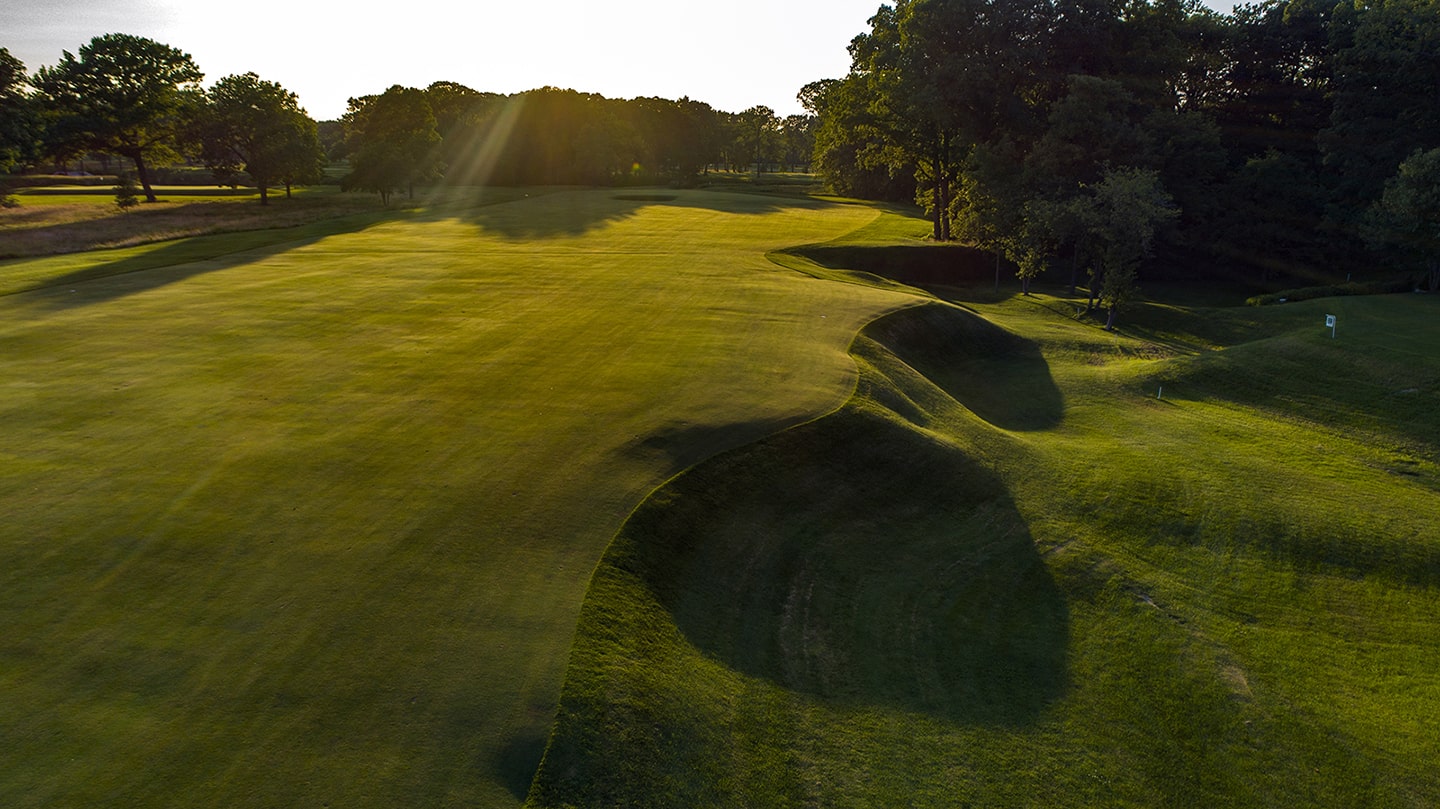
-
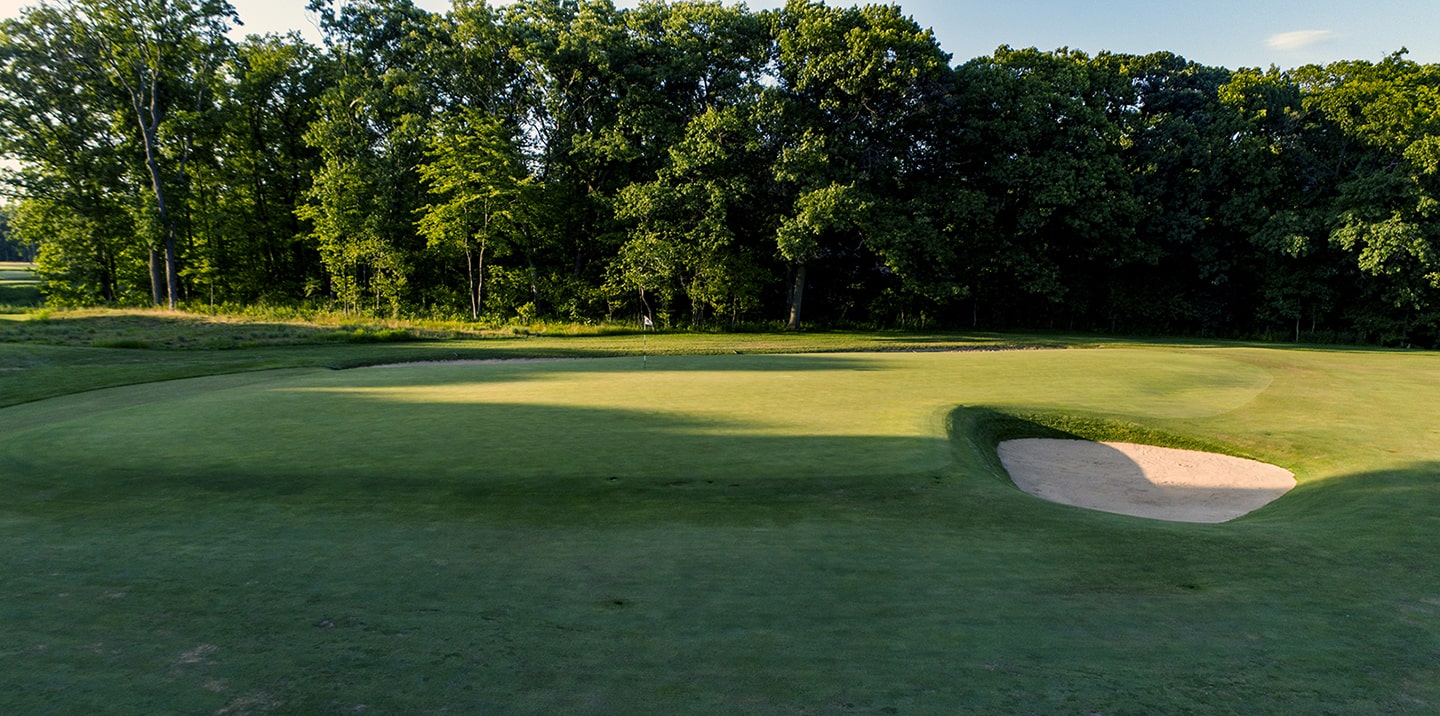
-
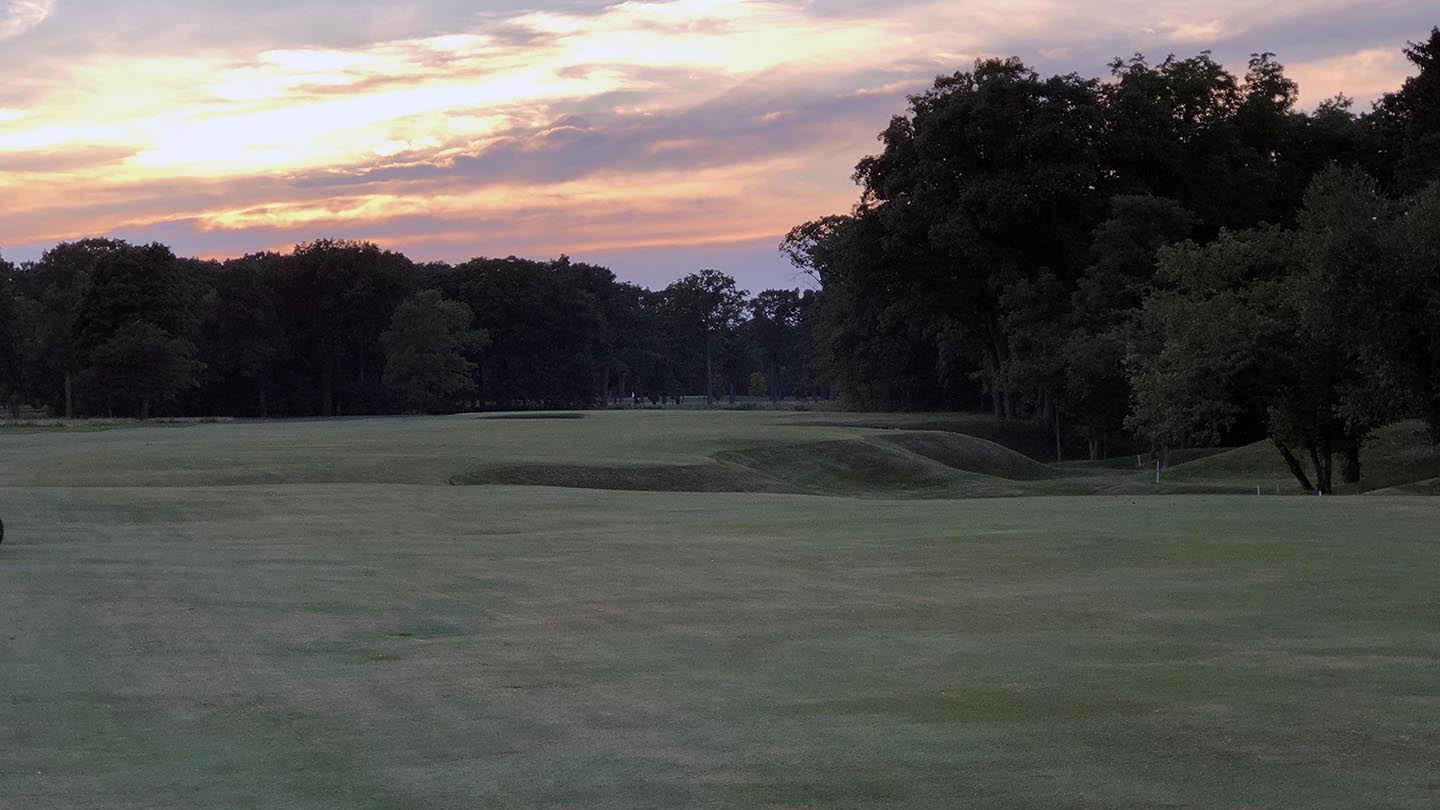
11th hole – par 4 – 371 yards
After the 10th, Raynor hits his crescendo in the routing with the jaw-dropping 11th. Critics of Raynor often claim “a lack of creativity and over-dependence on templates.” The stretch of 11-15 is Raynor’s counterpoint to those critics. The 11th is what I would call a “found golf hole”. The great ravine which stretches across the property traverses in front of the tee, down the right side and back in front of the green. It’s as dramatic of an inland hole that exists in golf. It calls for a long-iron or fairway wood off the tee. The ravine cuts out and back in, making the right side far more narrow than it appears from the tee. The short-iron approach is forced to carry the ravine onto a green with a big false front that slopes from right to left. If the 11th doesn’t get your juices flowing, I would suggest finding another hobby.
-
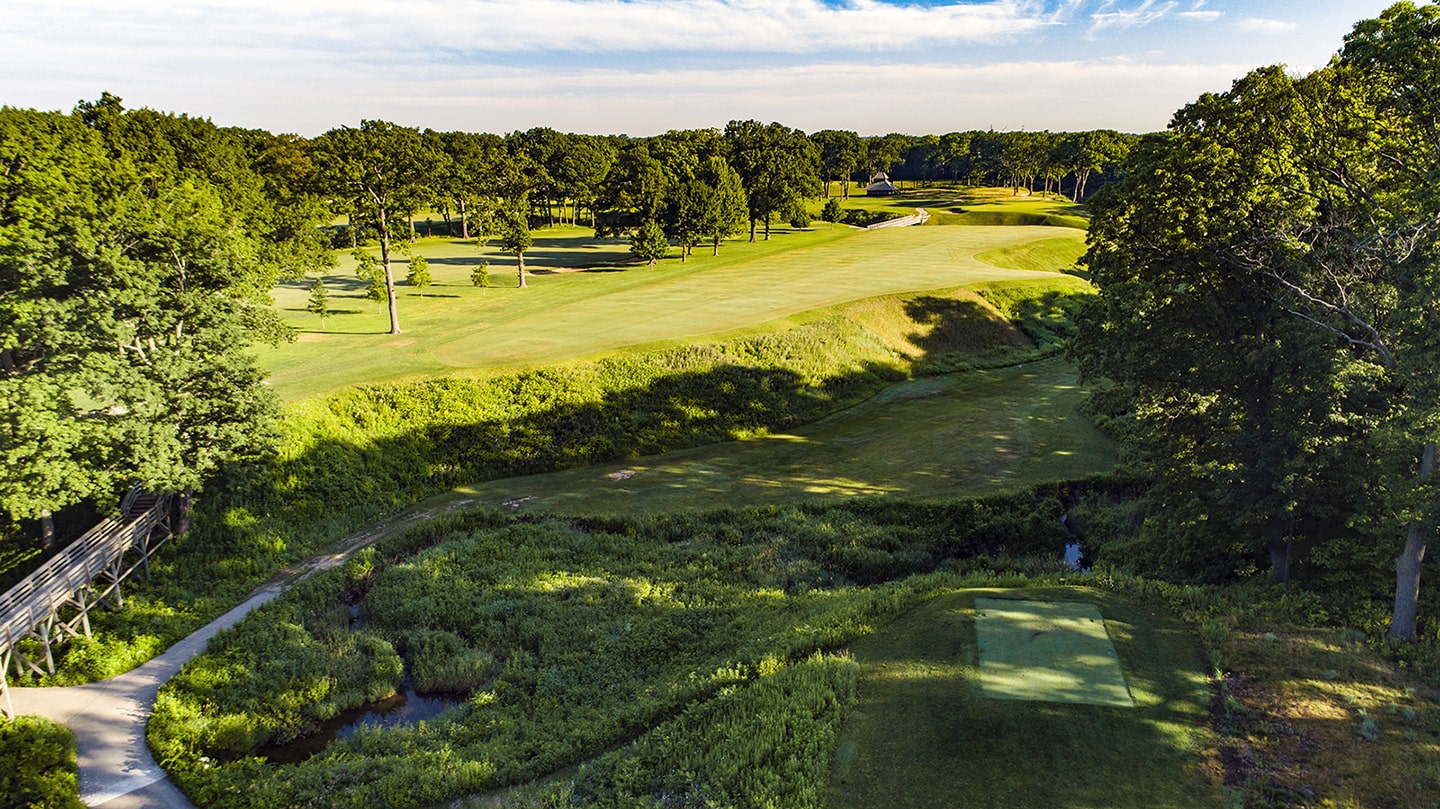
The 11th from the tee
-
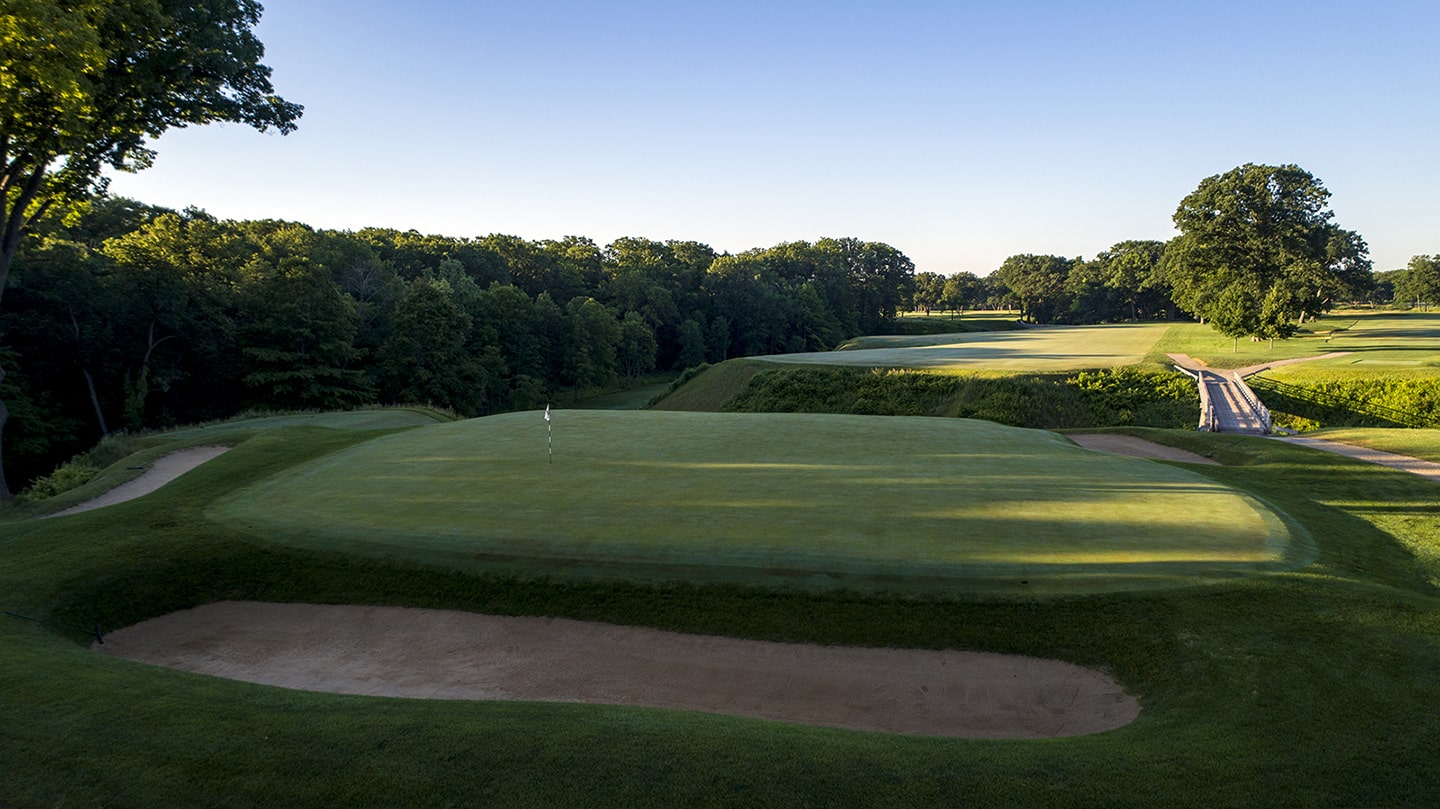
The 11th from behind
-
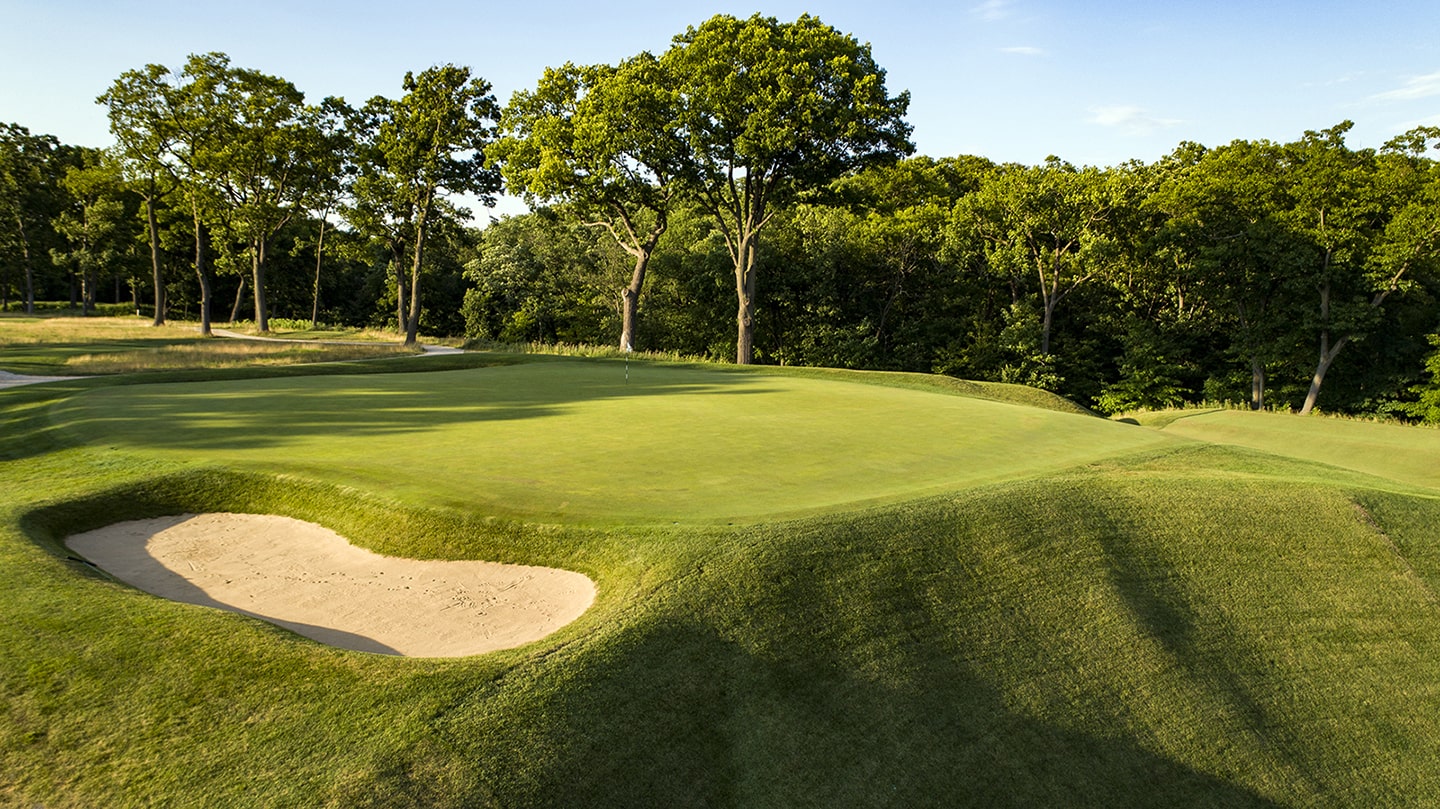
The 11th green
-
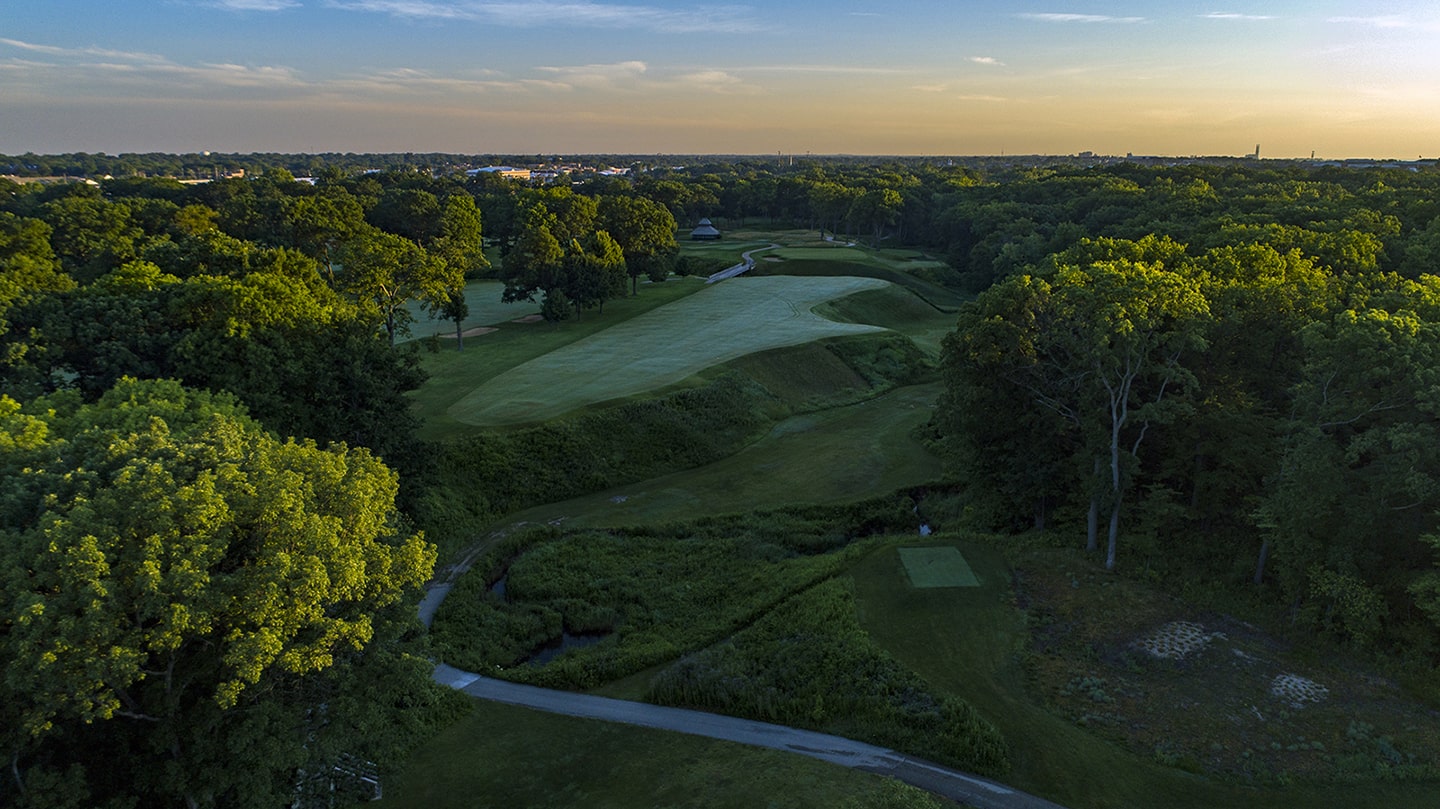
-
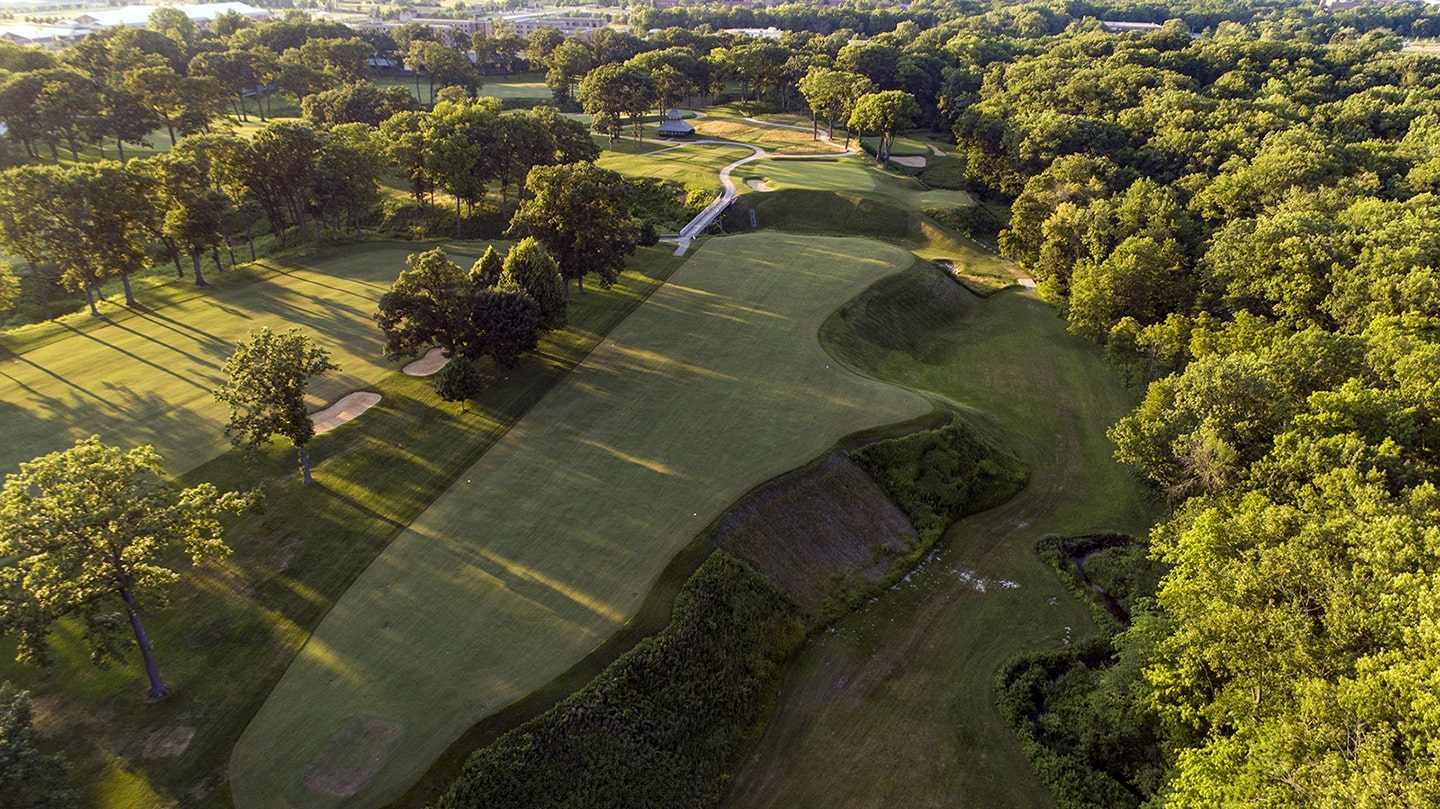
Aerial shot of the 11th
-
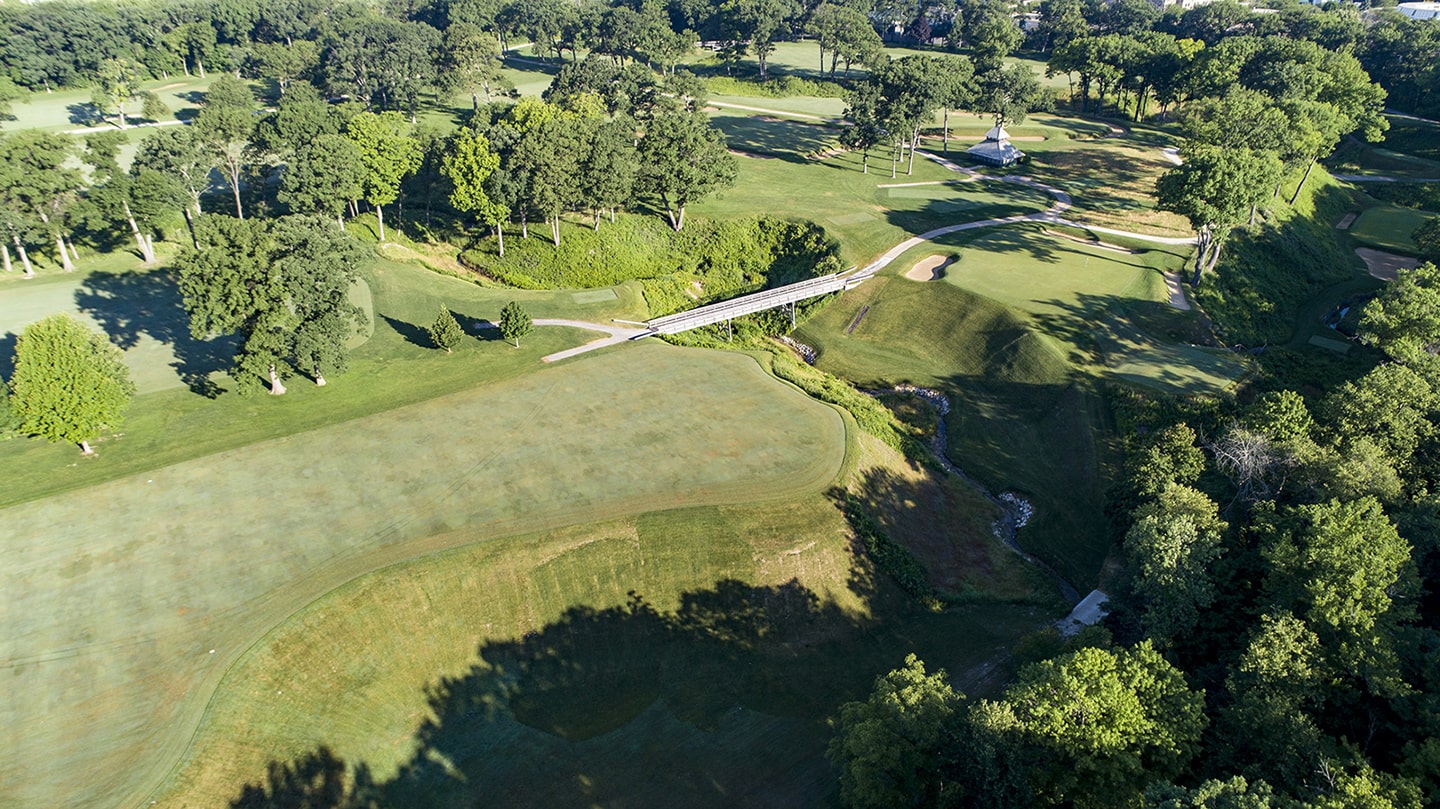
-
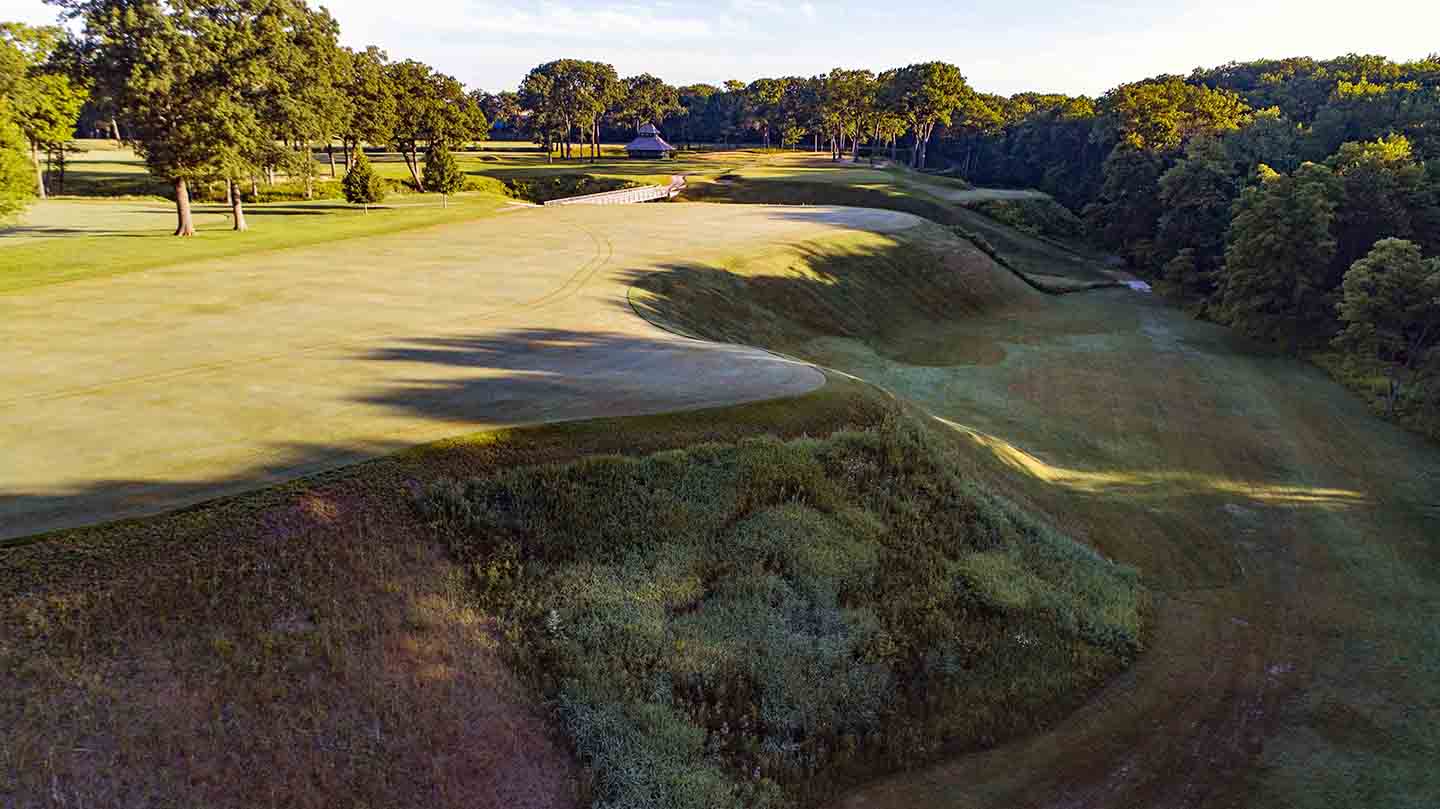
The approach shot to the 11th
-
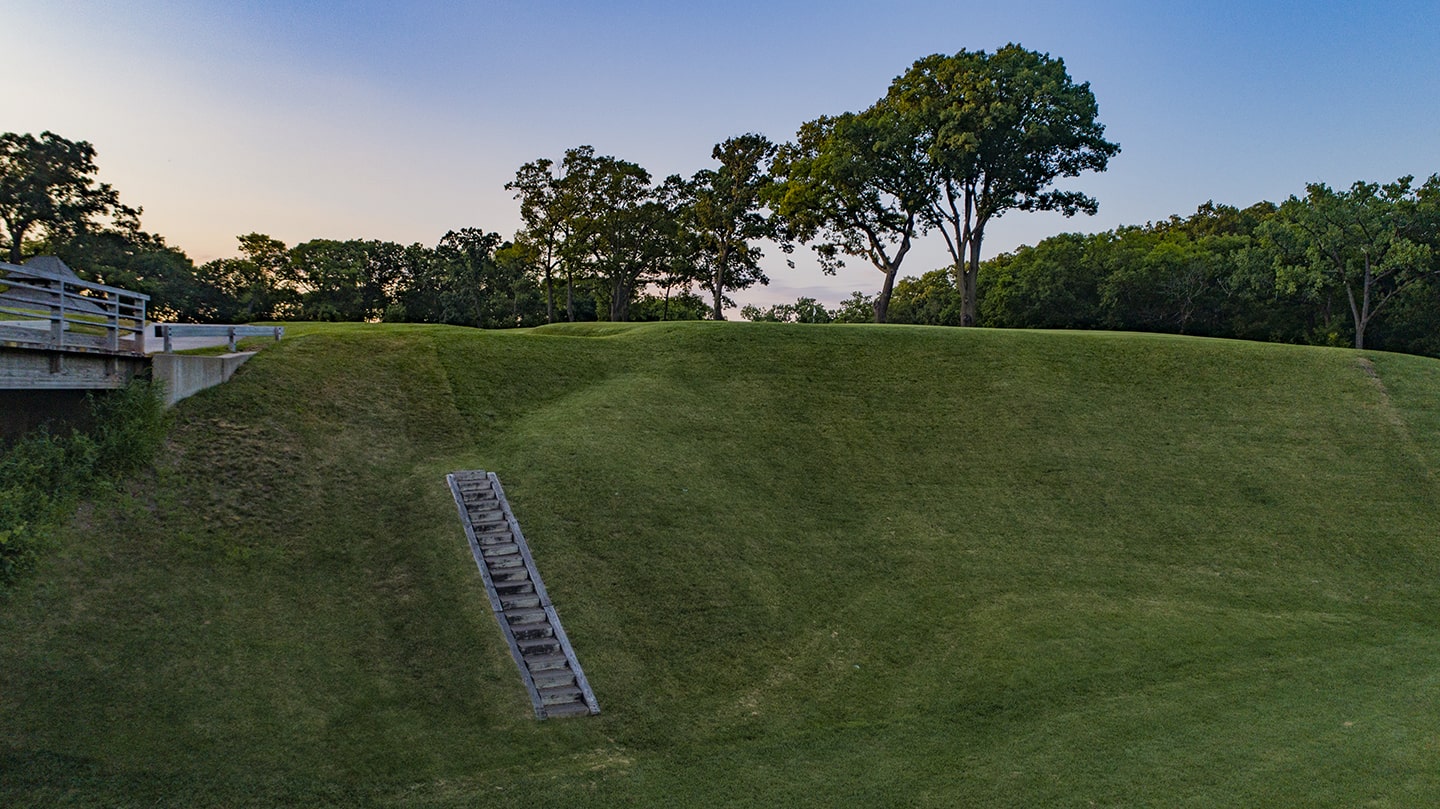
In the ravine in front of the 11th green
-
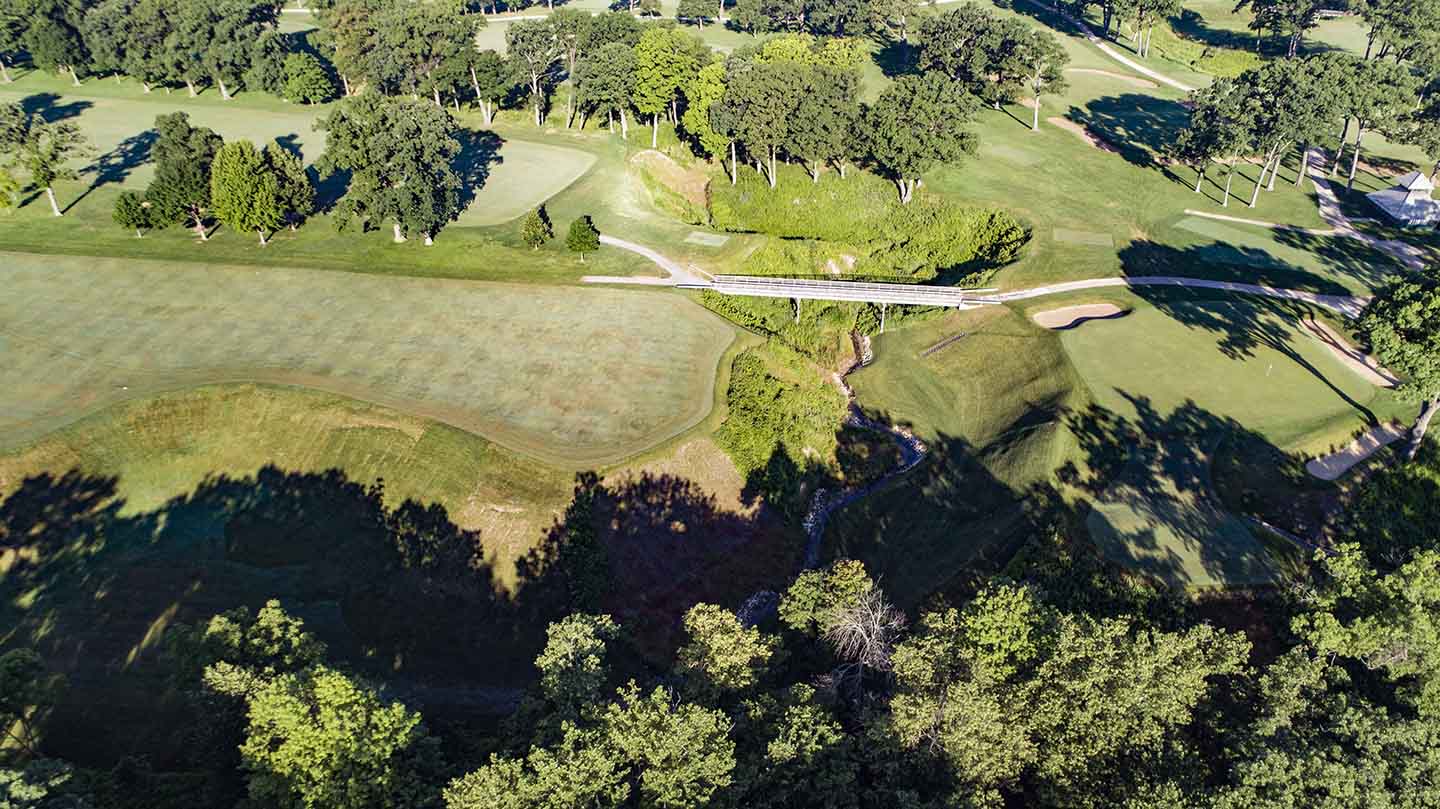
The dramatic approach to the 11th
-
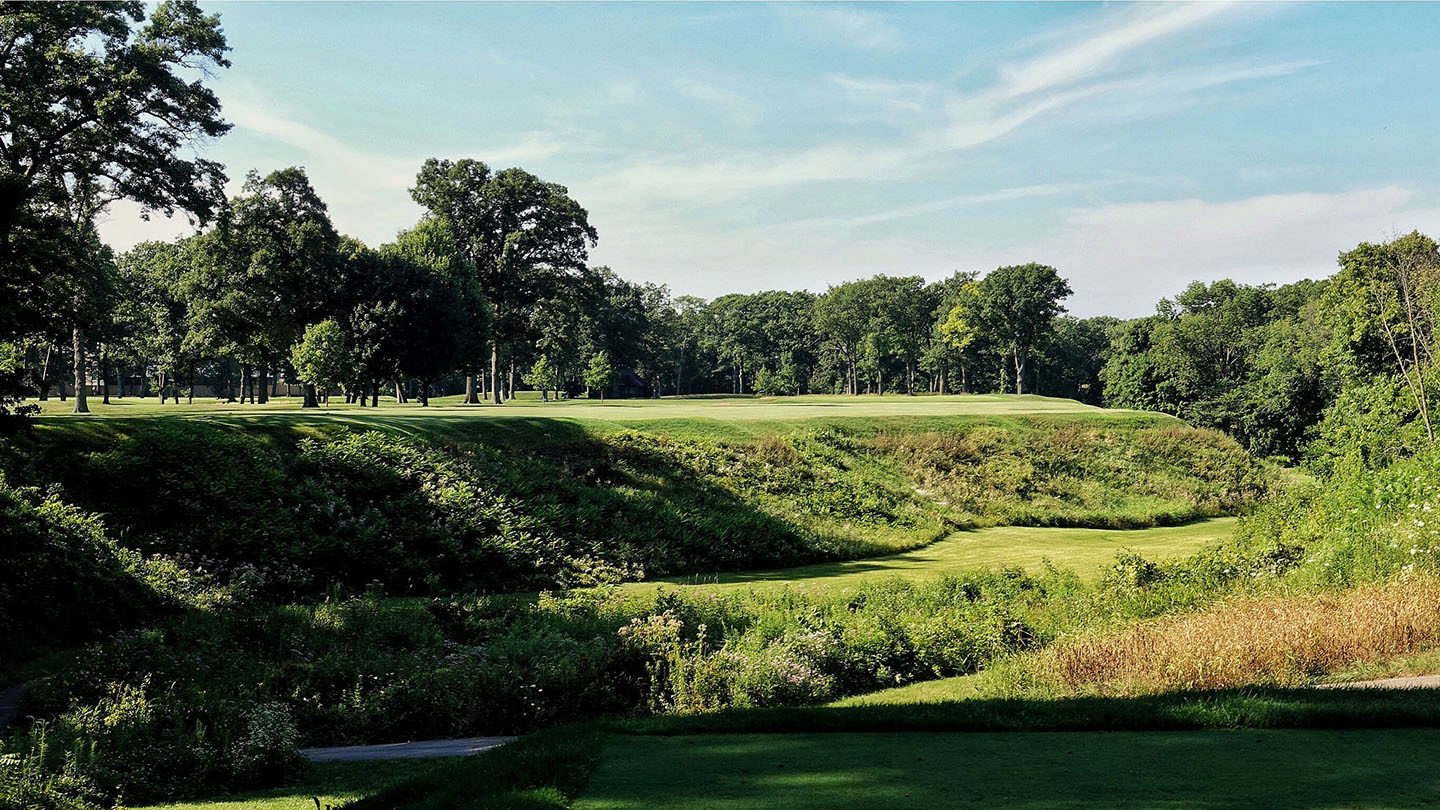
12th hole – par 3 – 136 yards
The routing moves on to the most photographed hole at Shoreacres, the Short par-3 12th which plays down into the ravine. Further illustrating the variety of the routing, on the 8th, Raynor asked players to play over the ravine, now they play into. The downhill shot and trees make it difficult to judge the wind and distance into the terrifying green. The false front is quick to send shots inches short of perfection back into the bunker. Any approach that’s slightly past the pin faces a slippery putt and missing pin high will leave a swinging birdie putt. Nothing good happens to those who miss long. The 12th is as equally maddening to players as it is beautiful.
-
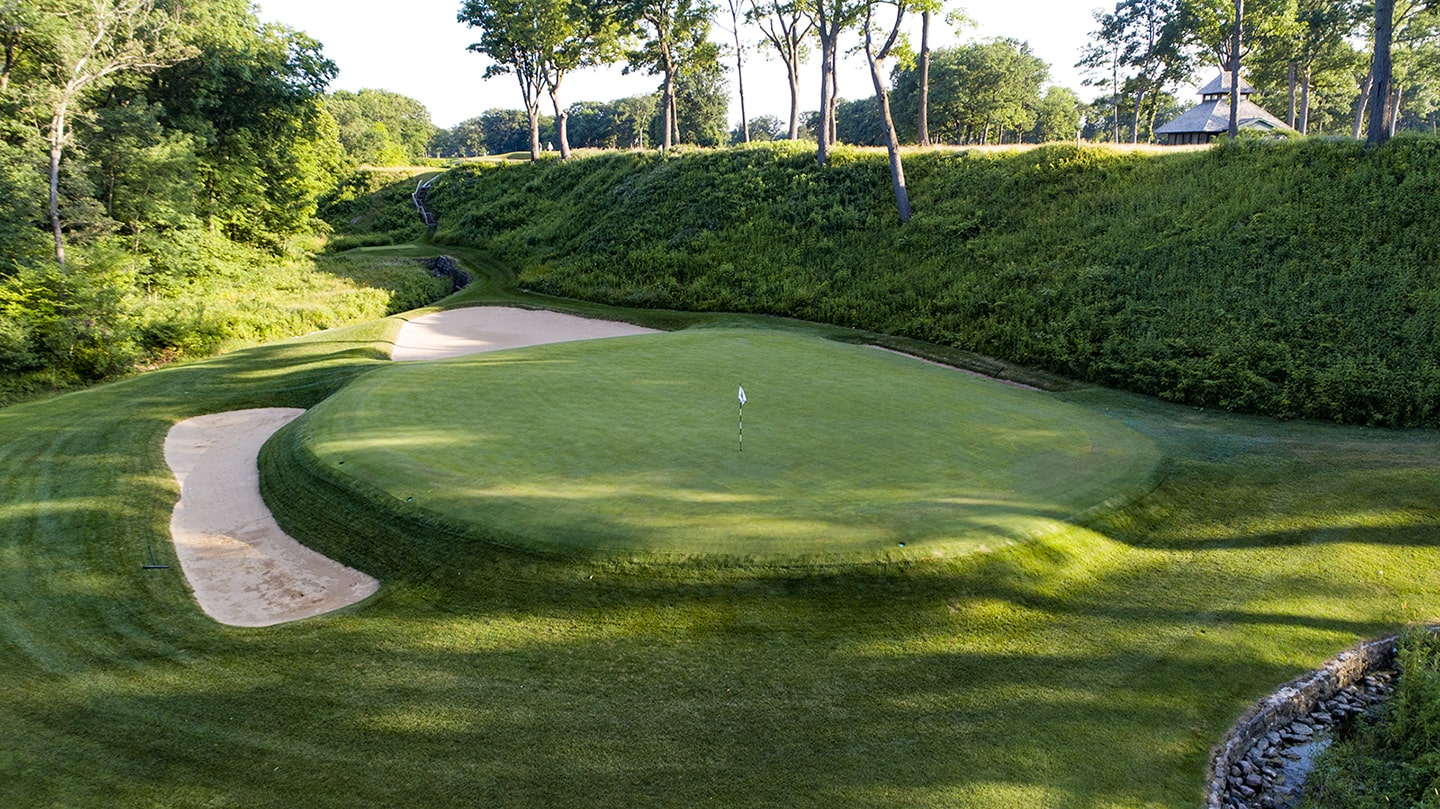
The 12th
-
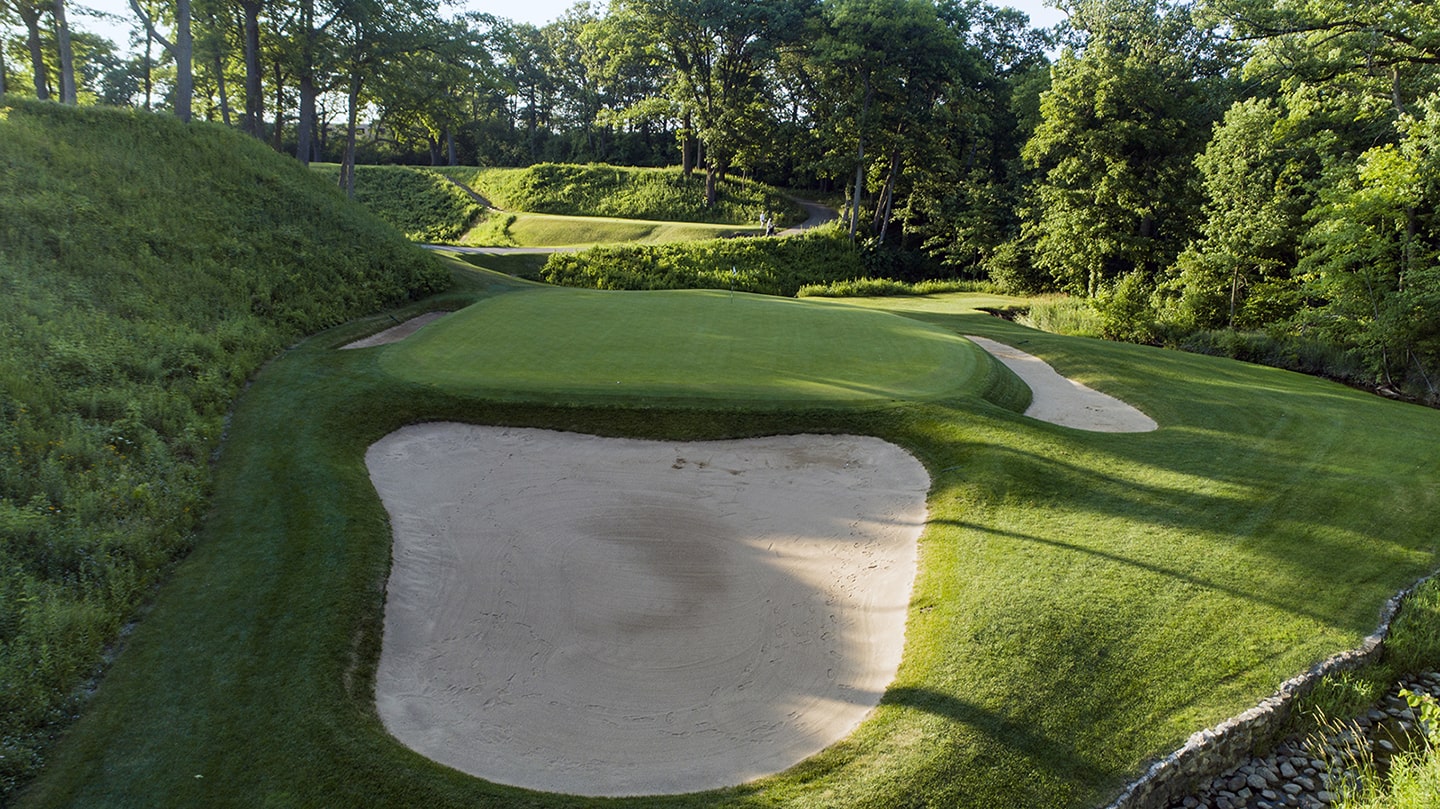
From the front
-
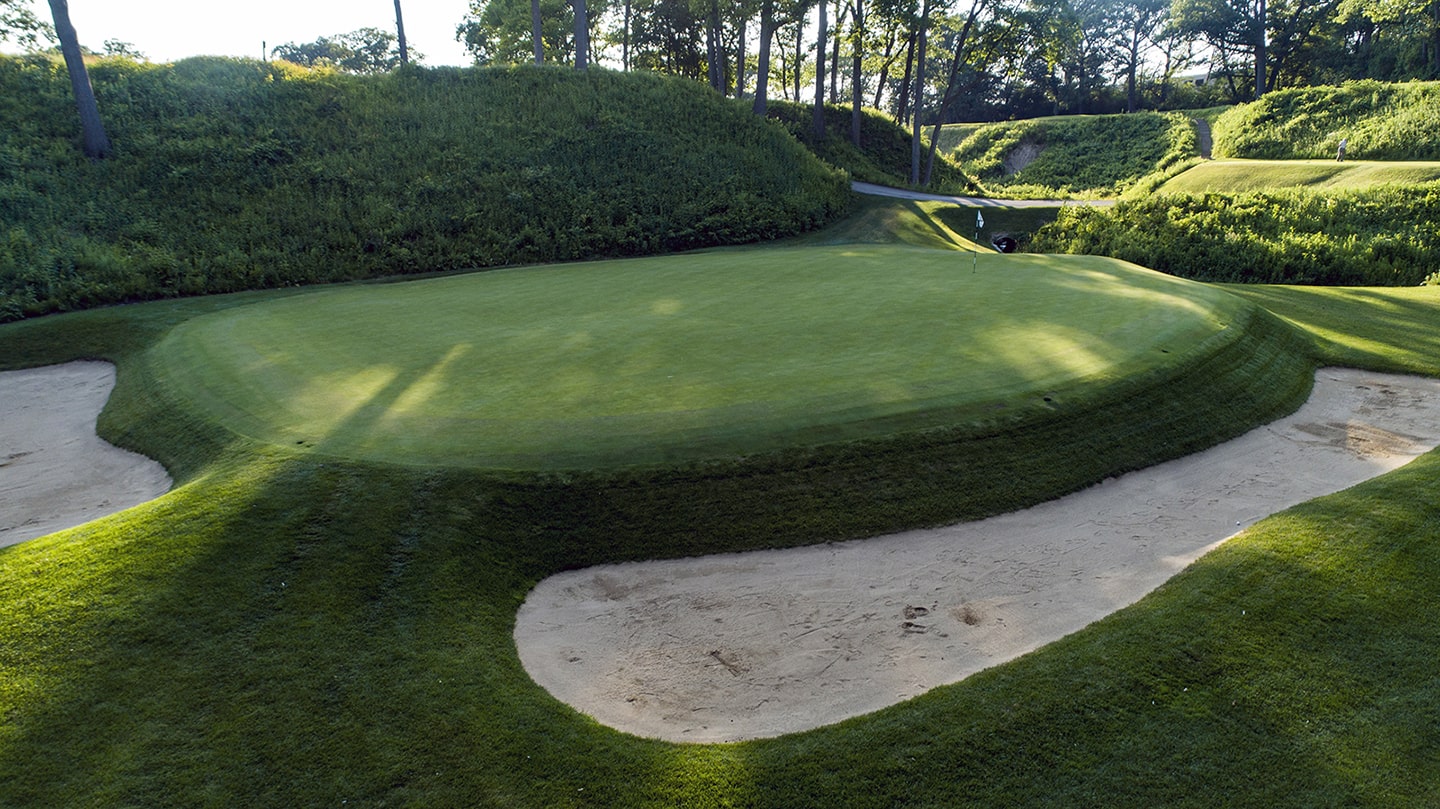
-
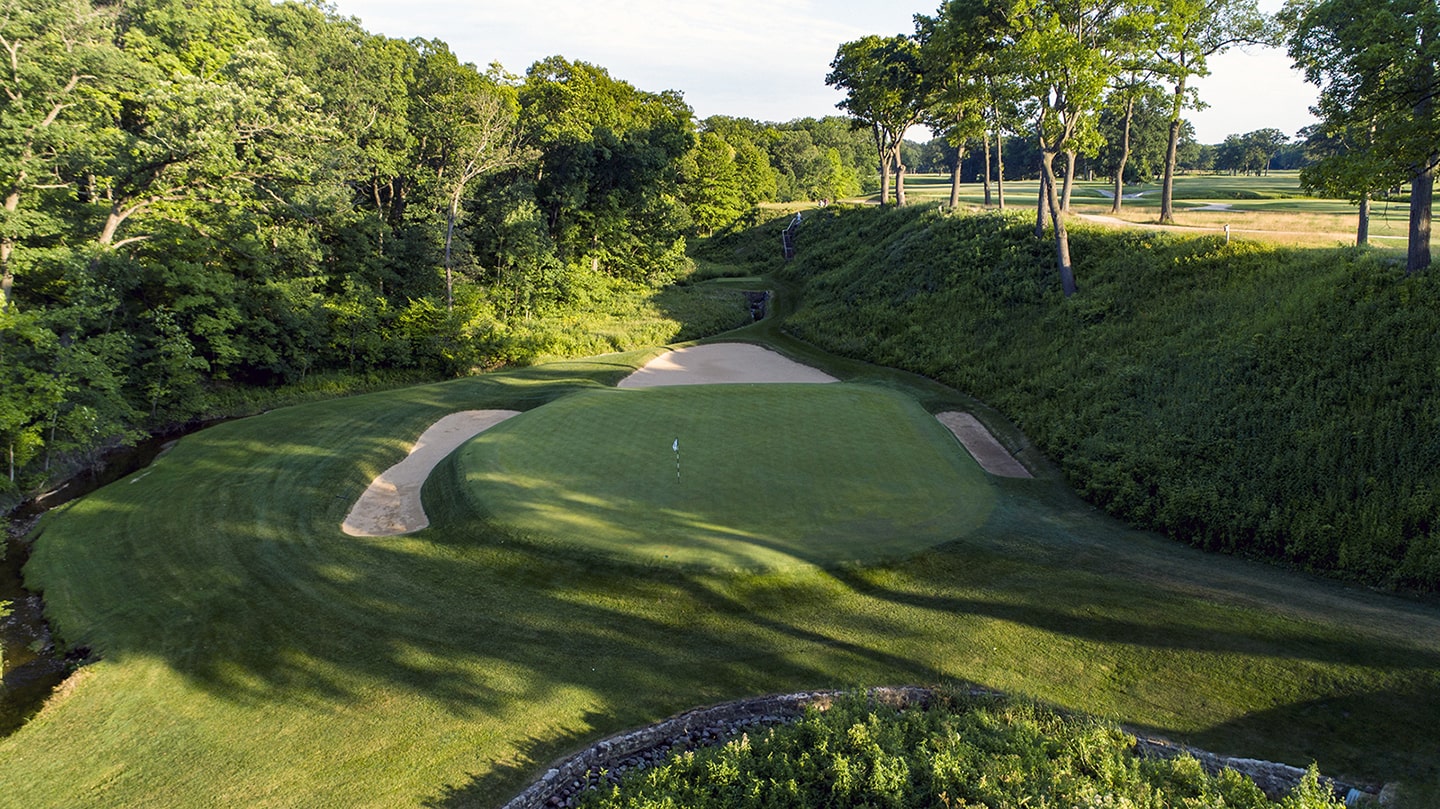
-
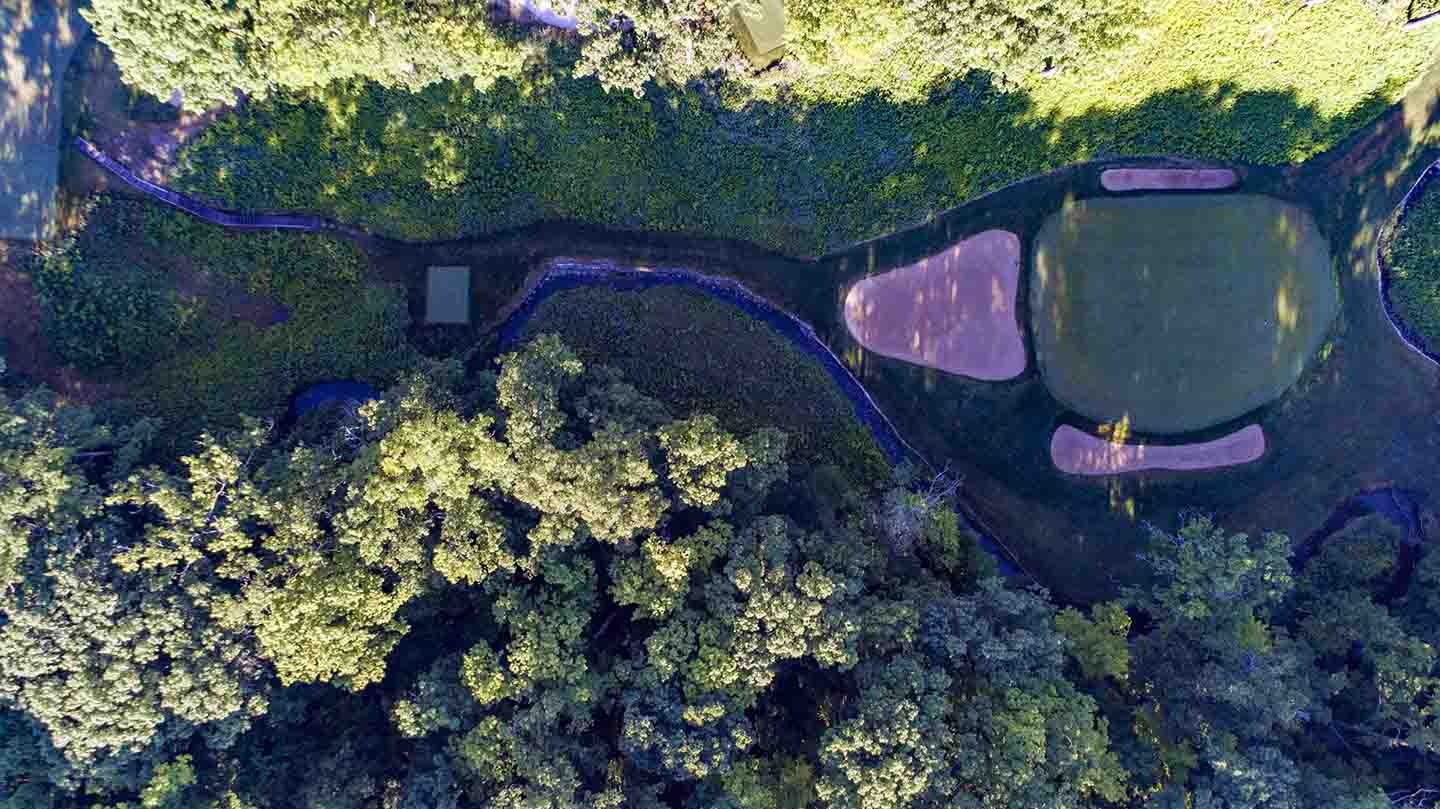
A straight down look at the 12th
-
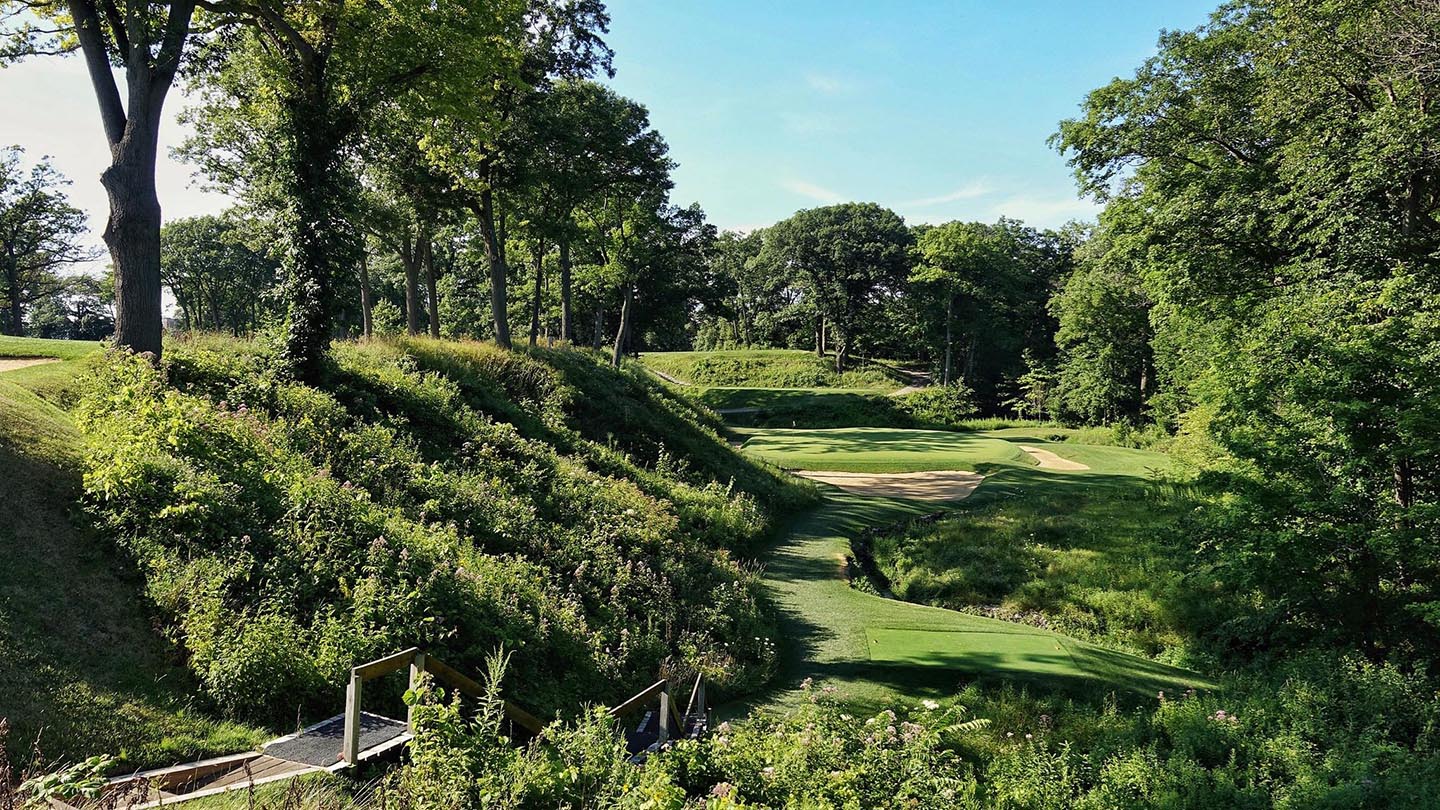
-
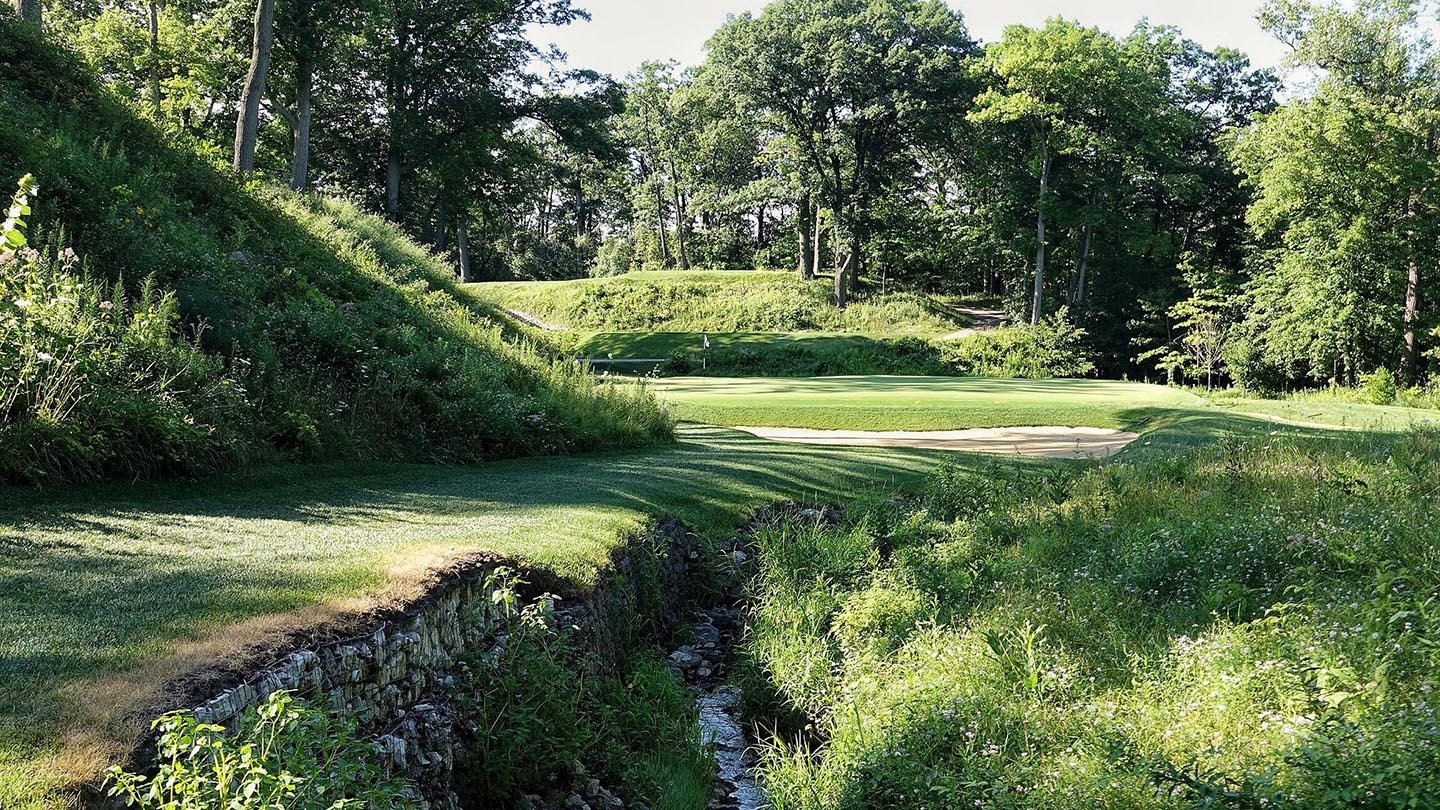
13th hole – par 4 – 323 yards
Many architects would have avoided going back into this corner of the property for fear of not being able to get out. Not so with Raynor. His routing is at full octane on the short par-4 13th where players hit out of the ravine. The blind tee shot calls for a long-iron and will leave a short-iron or wedge approach shot. The ravine runs up the left side of the hole and again cuts across the front of the green forcing players to hit over it on their approach. Finding the fairway is a must at the 13th because of the vexing green complex. The 13th has the most severe false front that takes up the front quarter of the green. The approach shot tests players’ distance and spin control. Shots too strong find a back trench bunker and shots a few feet too short will be rejected by the front.
-
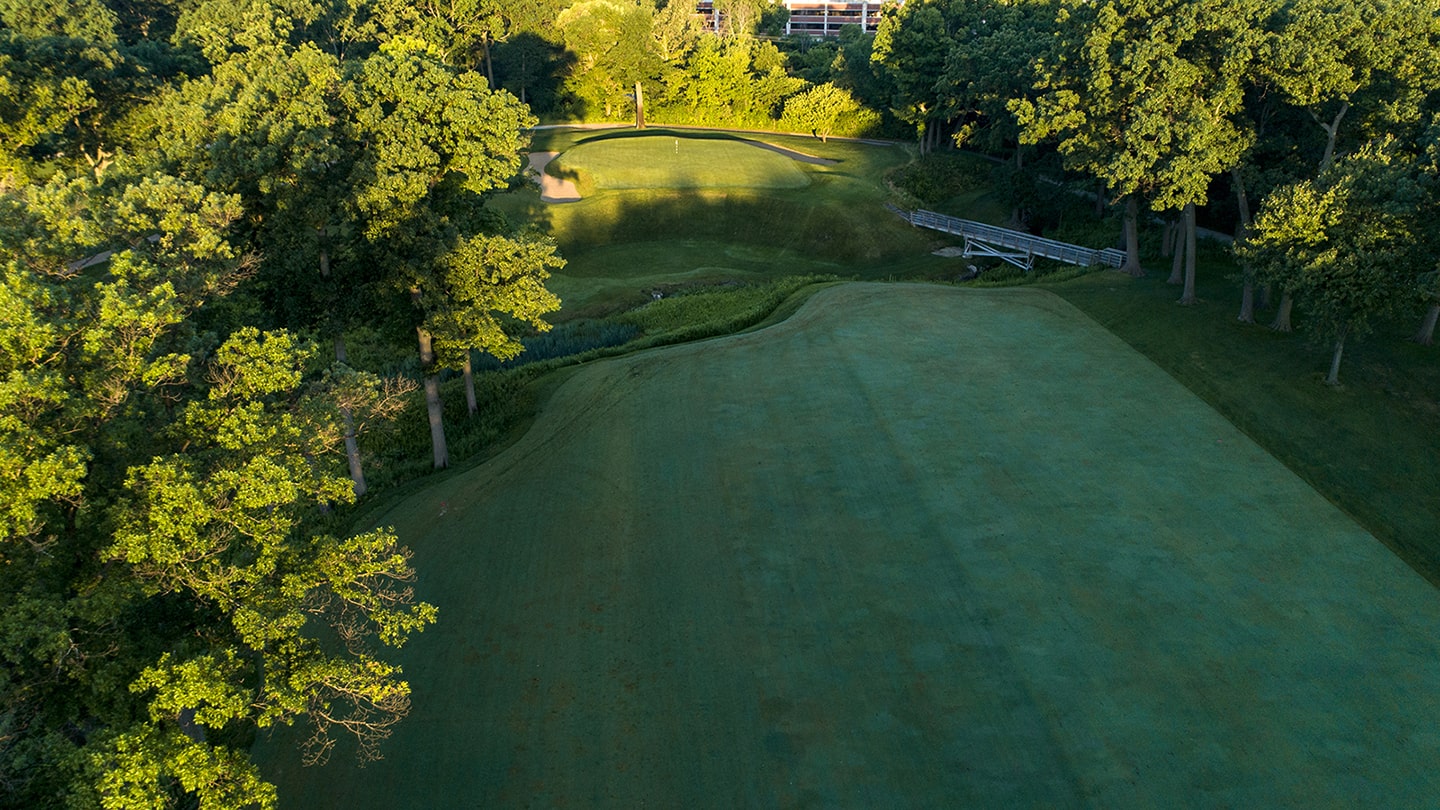
The 13th fairway
-
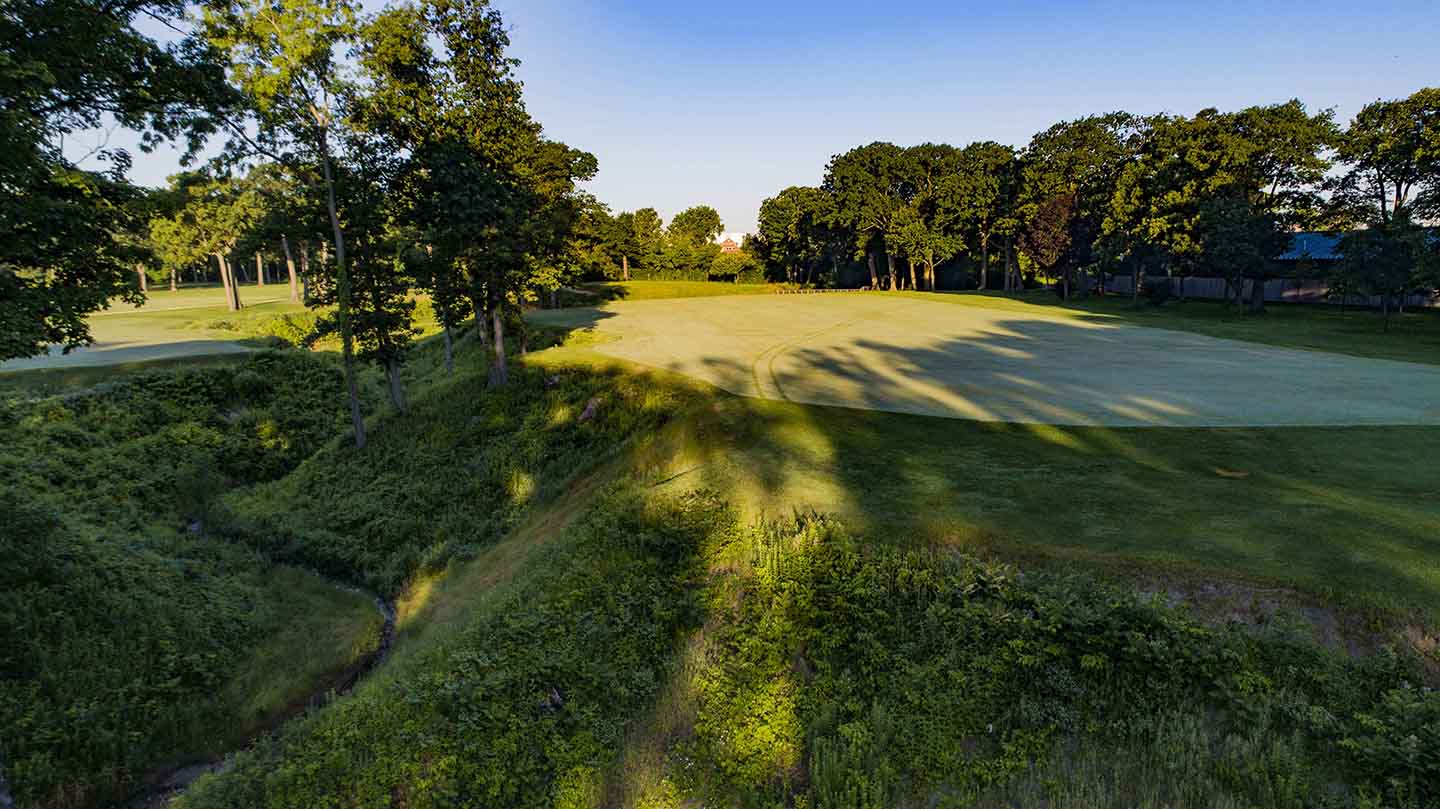
Front of the fairway at the 13th
-
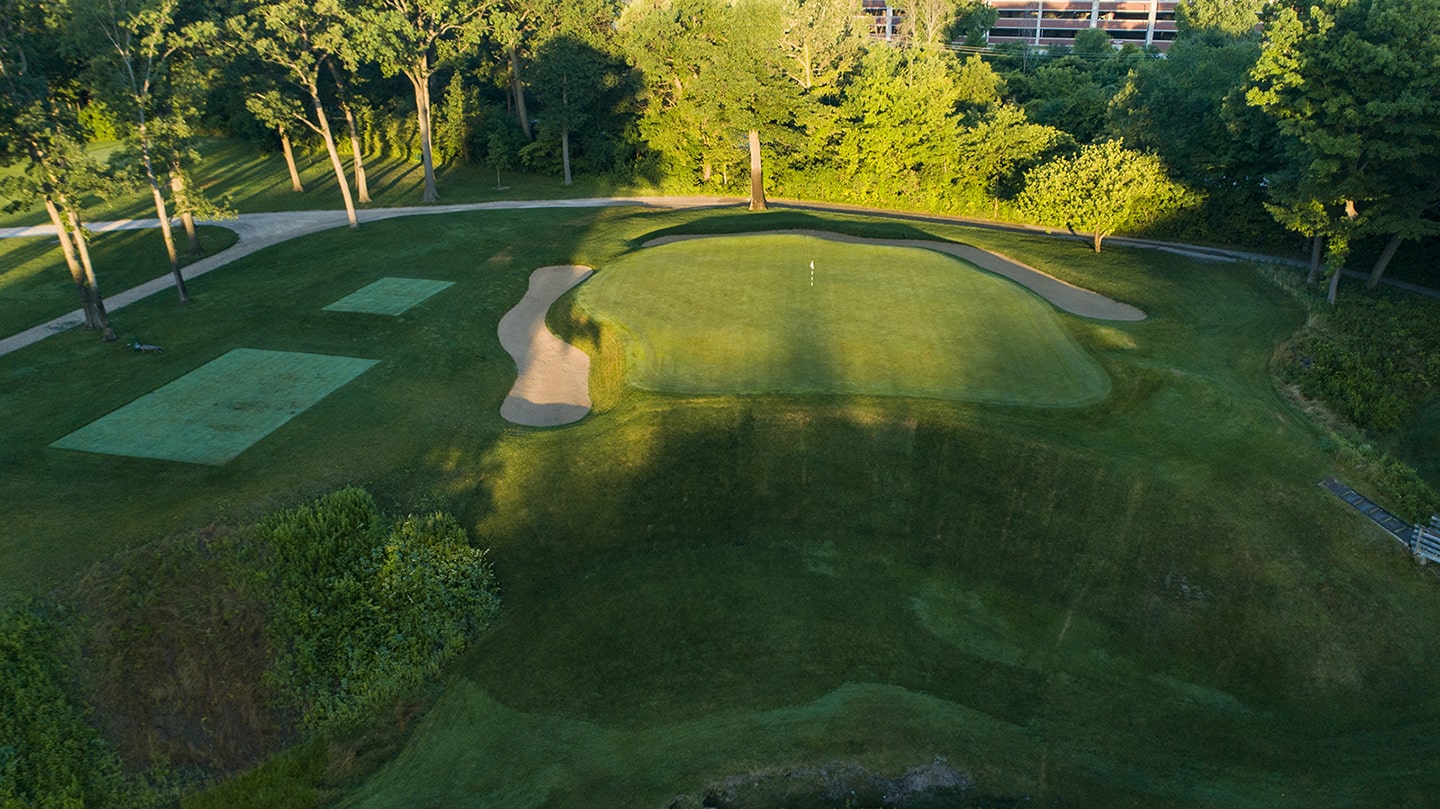
Aerial above the 13th green
-
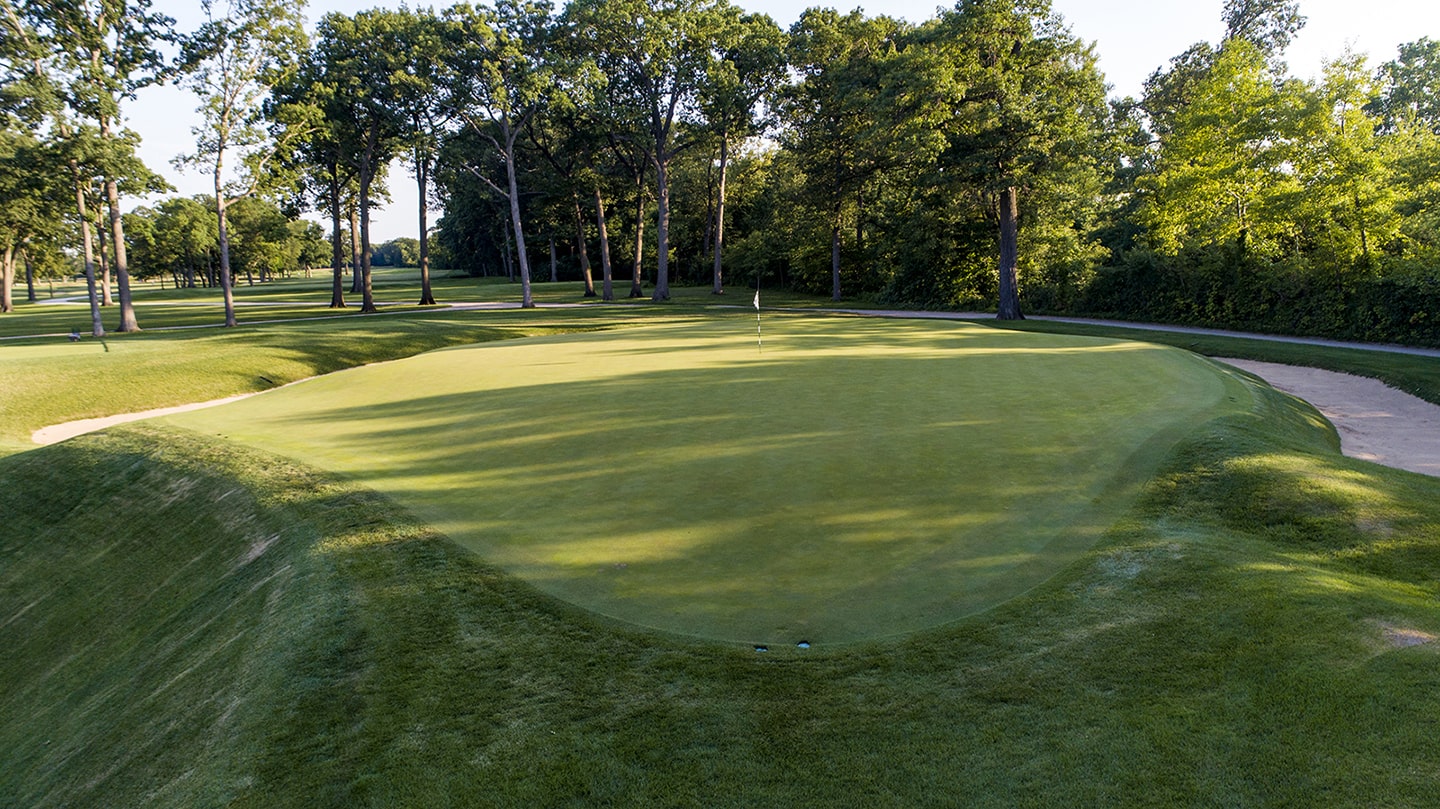
13th green
-
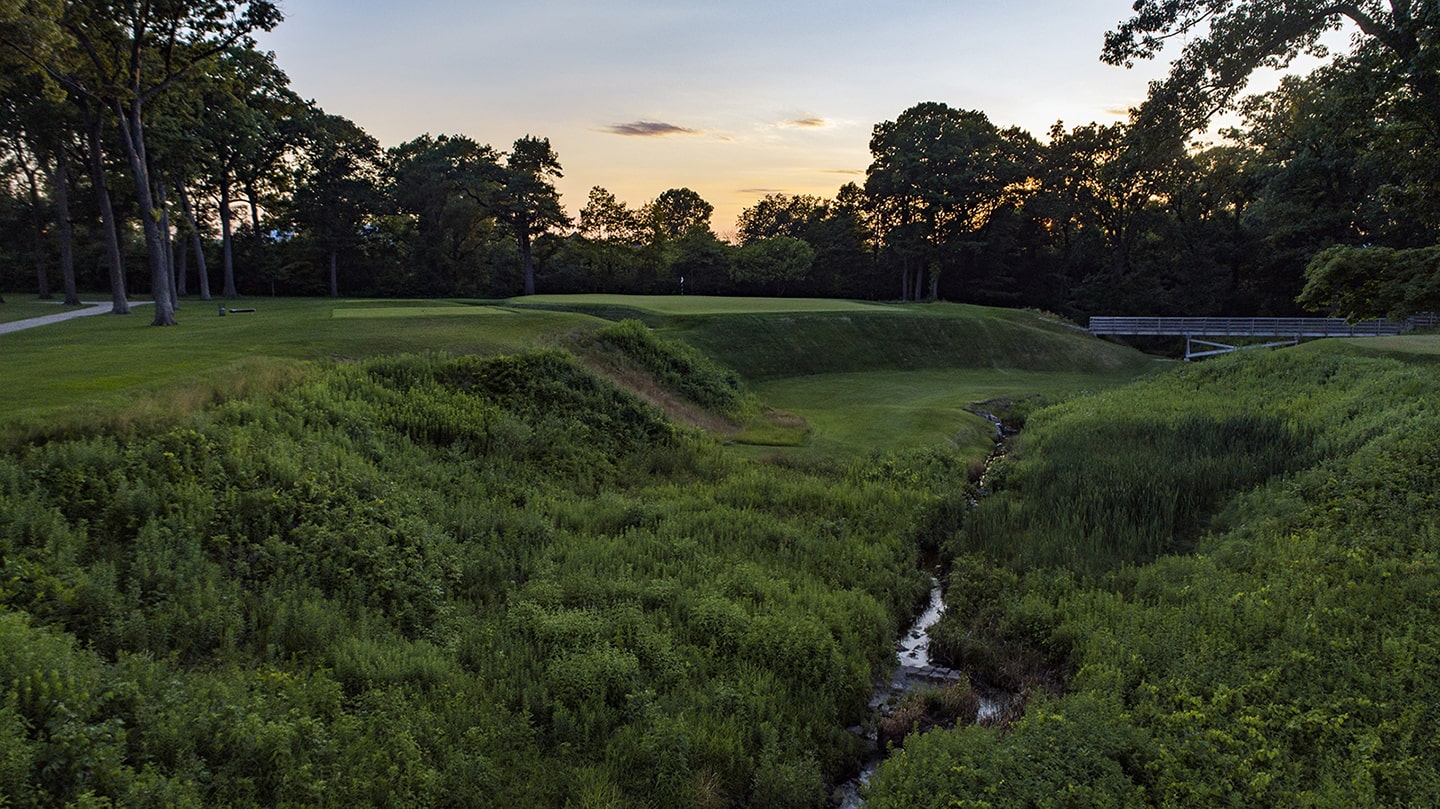
The 13th ravine at sunset
-
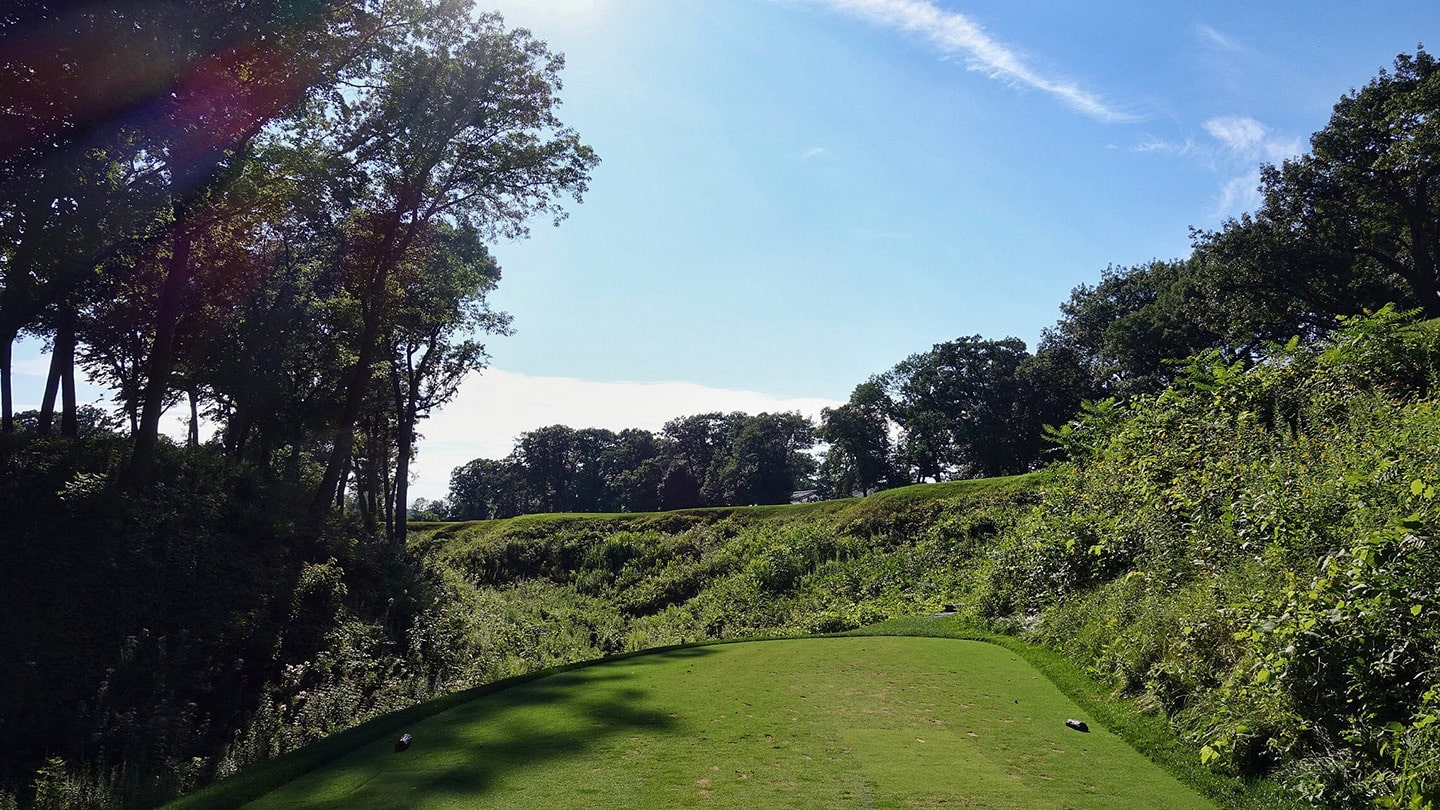
14th hole – par 3 – 216 yards
The par-3 14th plays parallel to the 6th and is Shoreacres Redan Hole. The ravine cuts in front and along the left side, very much in play for a player who overcooks a draw. The green slopes hard right to left and front to back. An ideal shot will find the front right of the green and feed back to the pin but comes with the risk of a miss long (dead) or short (awkward).
-
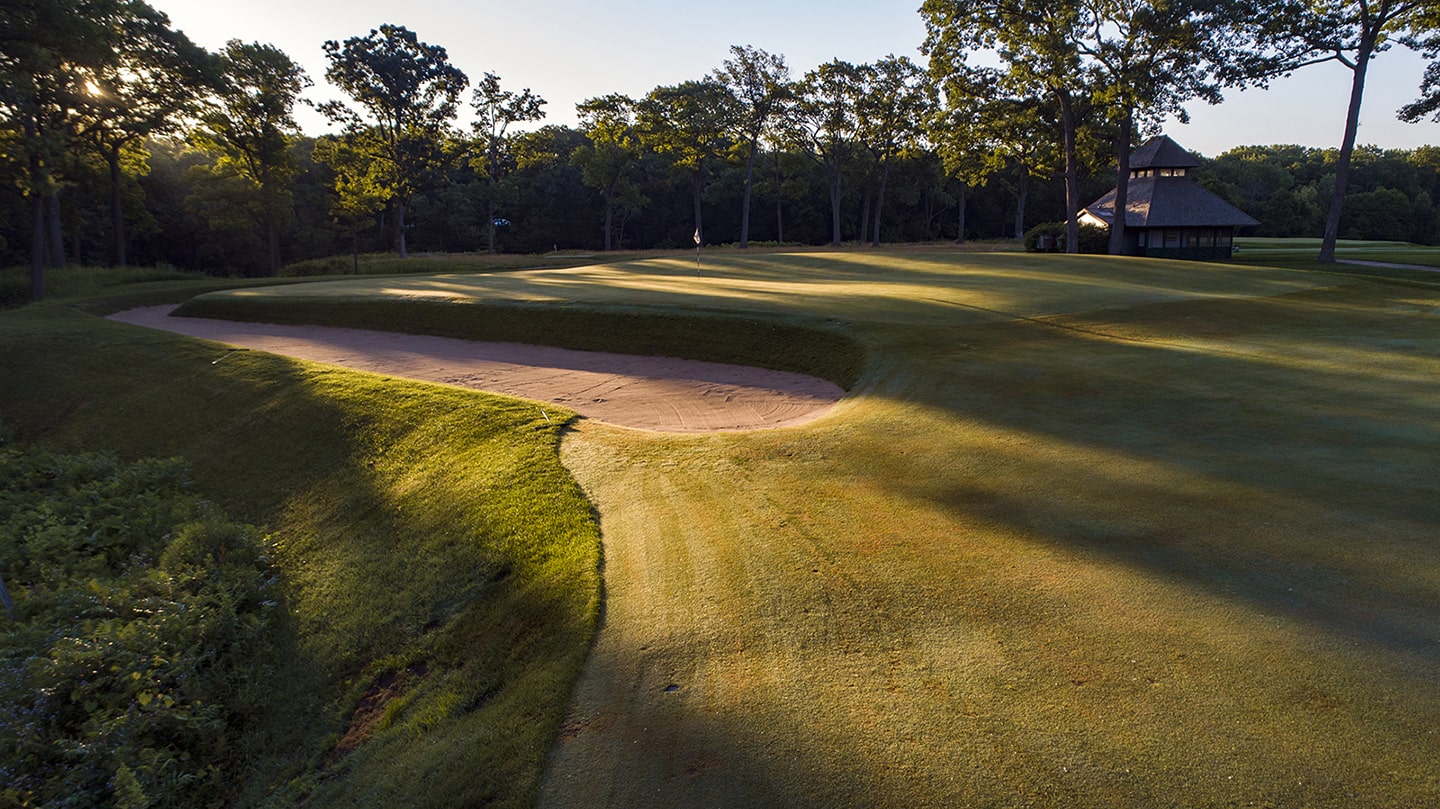
The 14th
-
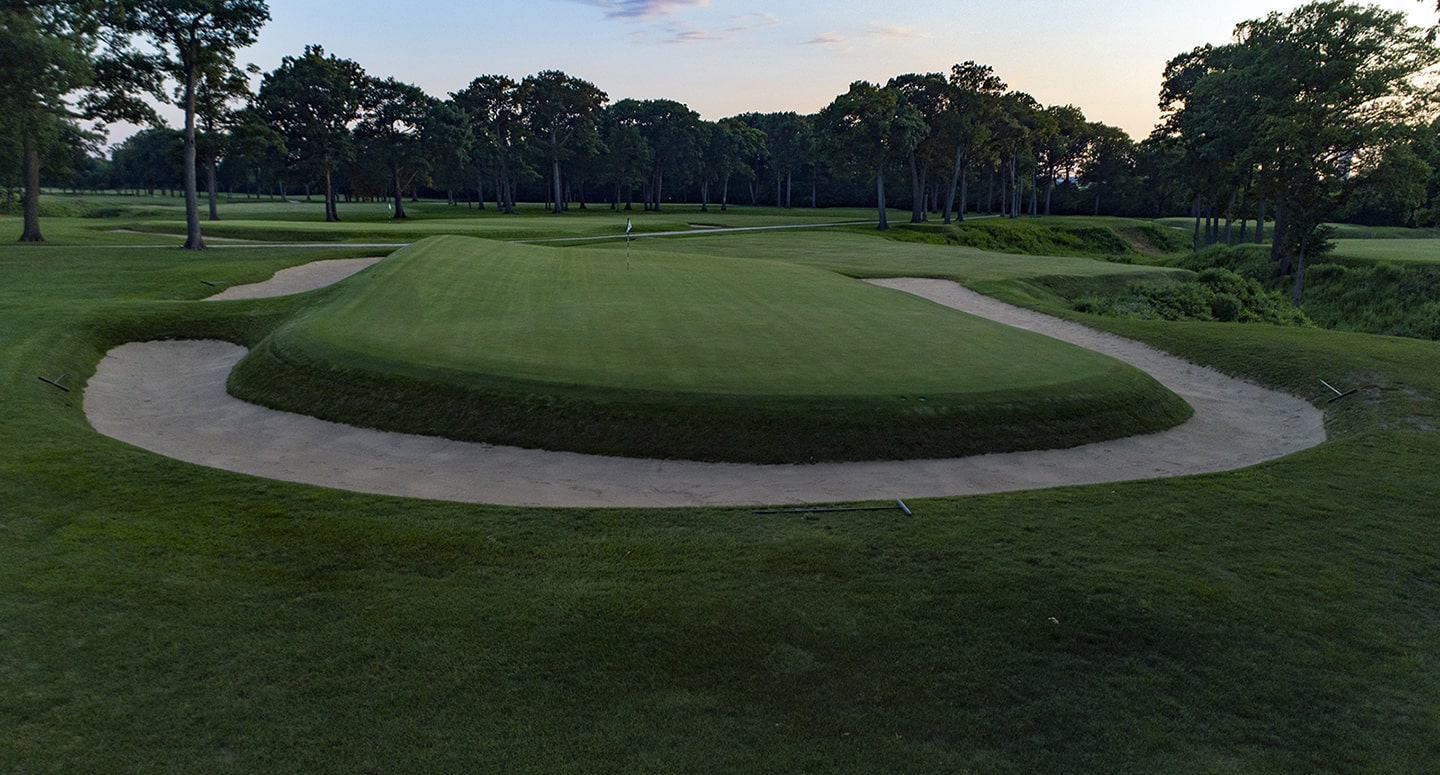
The 14th from behind
-
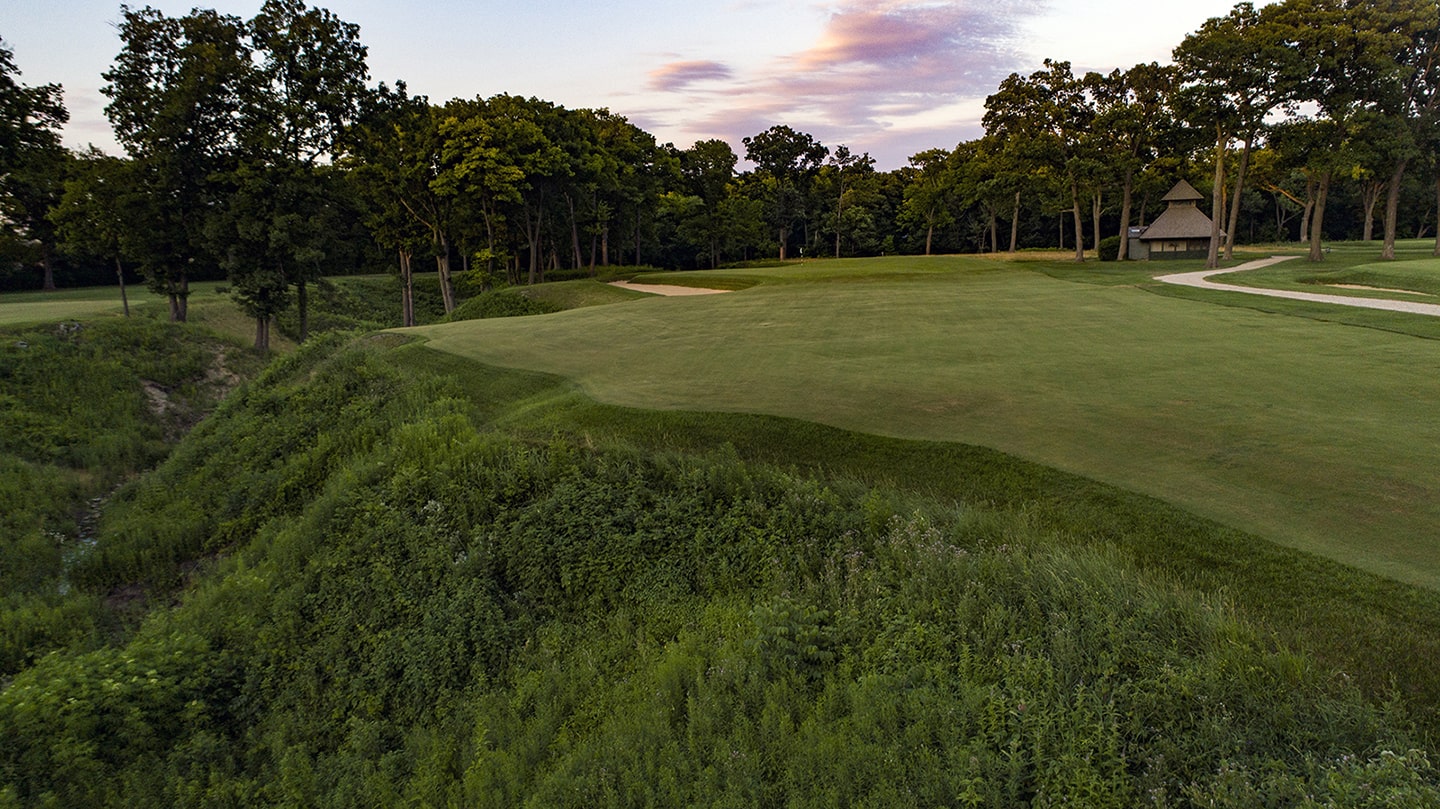
-
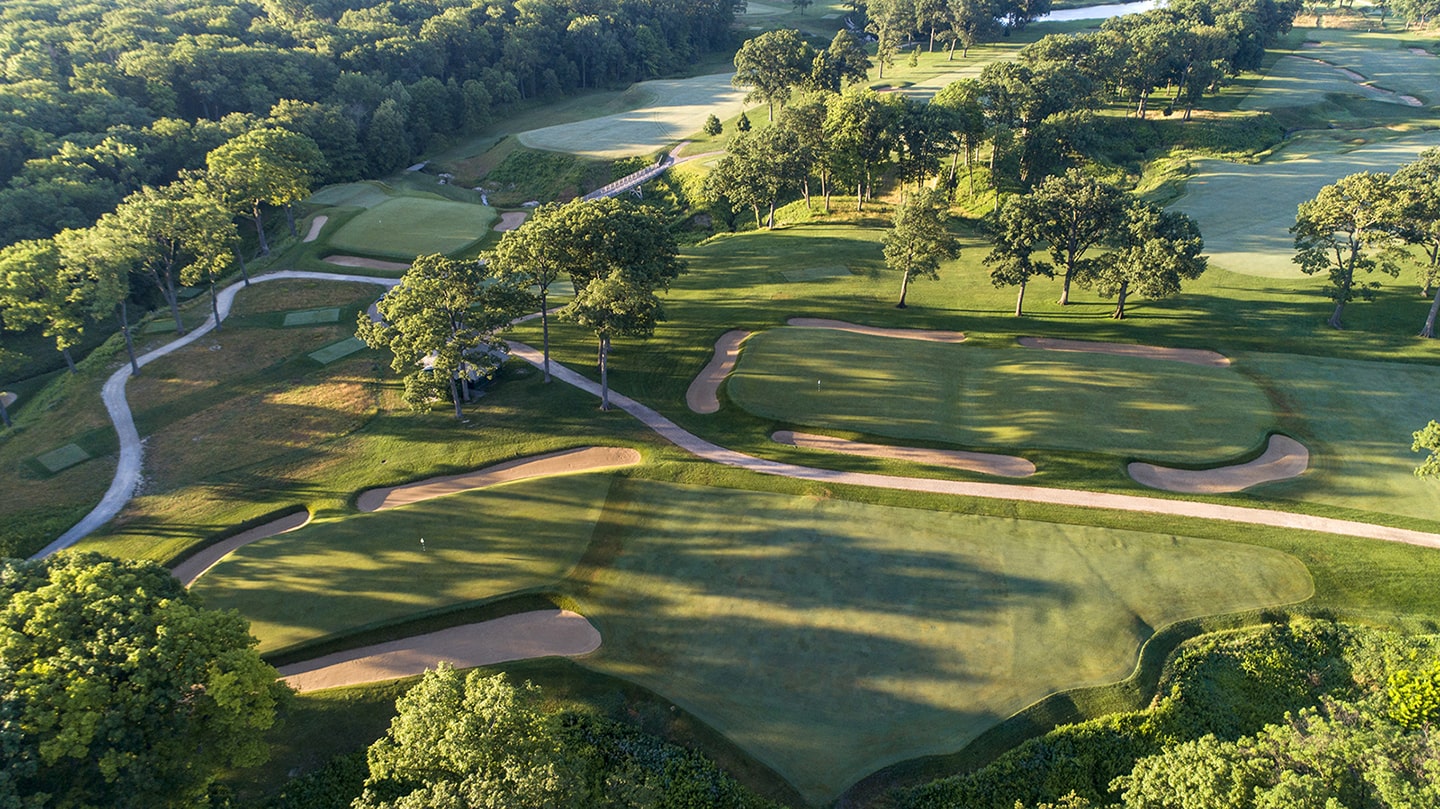
-

Above the redan
15th hole – par 5 – 529 yards
The fifteenth is the final hole on the most dramatic piece of the property and is one of the finest par-5s in all of golf. The tee shot tests a player’s appetite for risk. The par five doglegs around the ravine on the left side, giving those who take it up the left a far shorter approach for their second. The ravine then cuts across the fairway setting up a heroic carry for the second shot. The fairway on the other side of the ravine is split into a right and left side by a series of centerline bunkers. Carrying the bunkers earns a player the reward of a downslope which will propel shots onto one of the course’s largest greens. The putting surface slopes from back to front and has a prominent back tier and difficult pin positions.
-
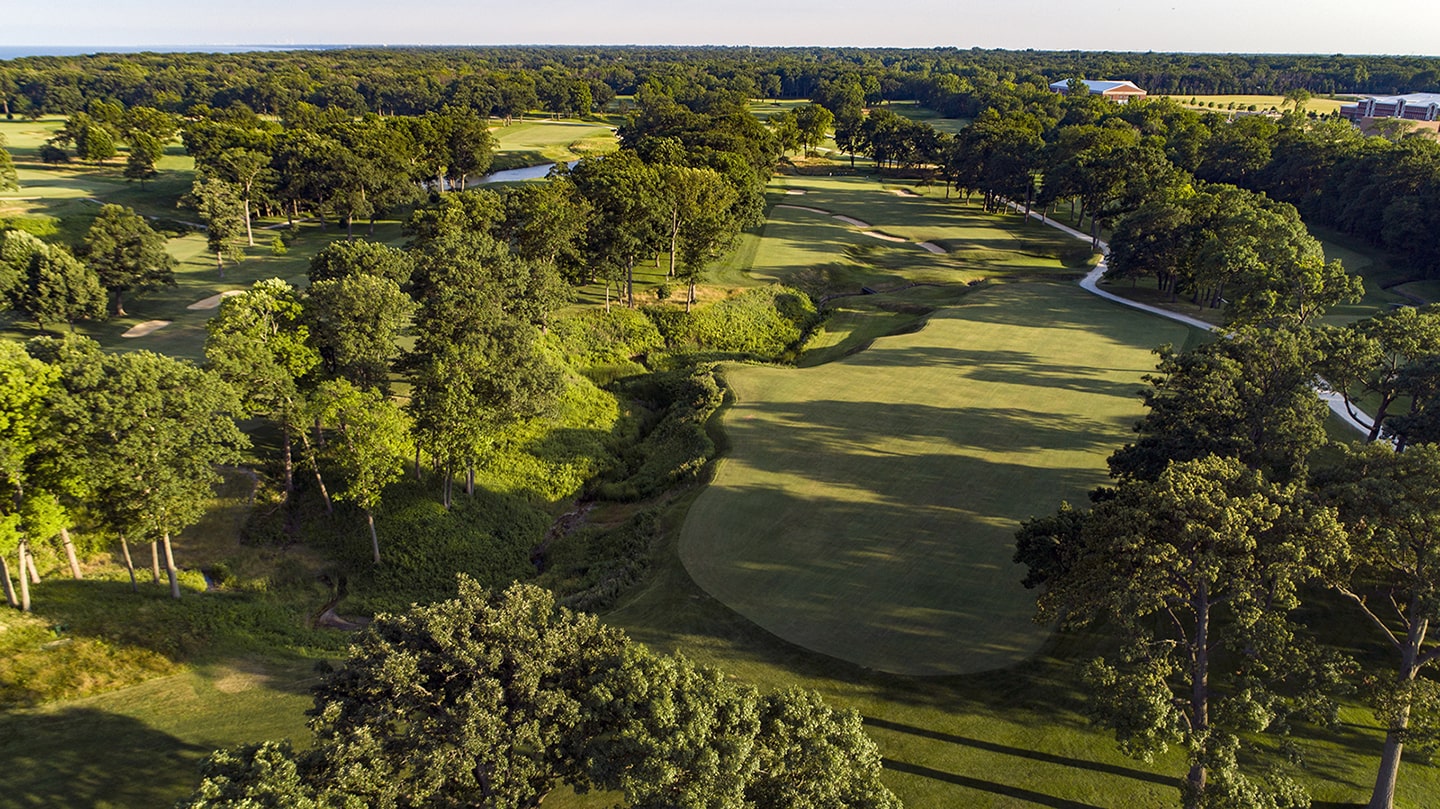
The 15th, high right
-
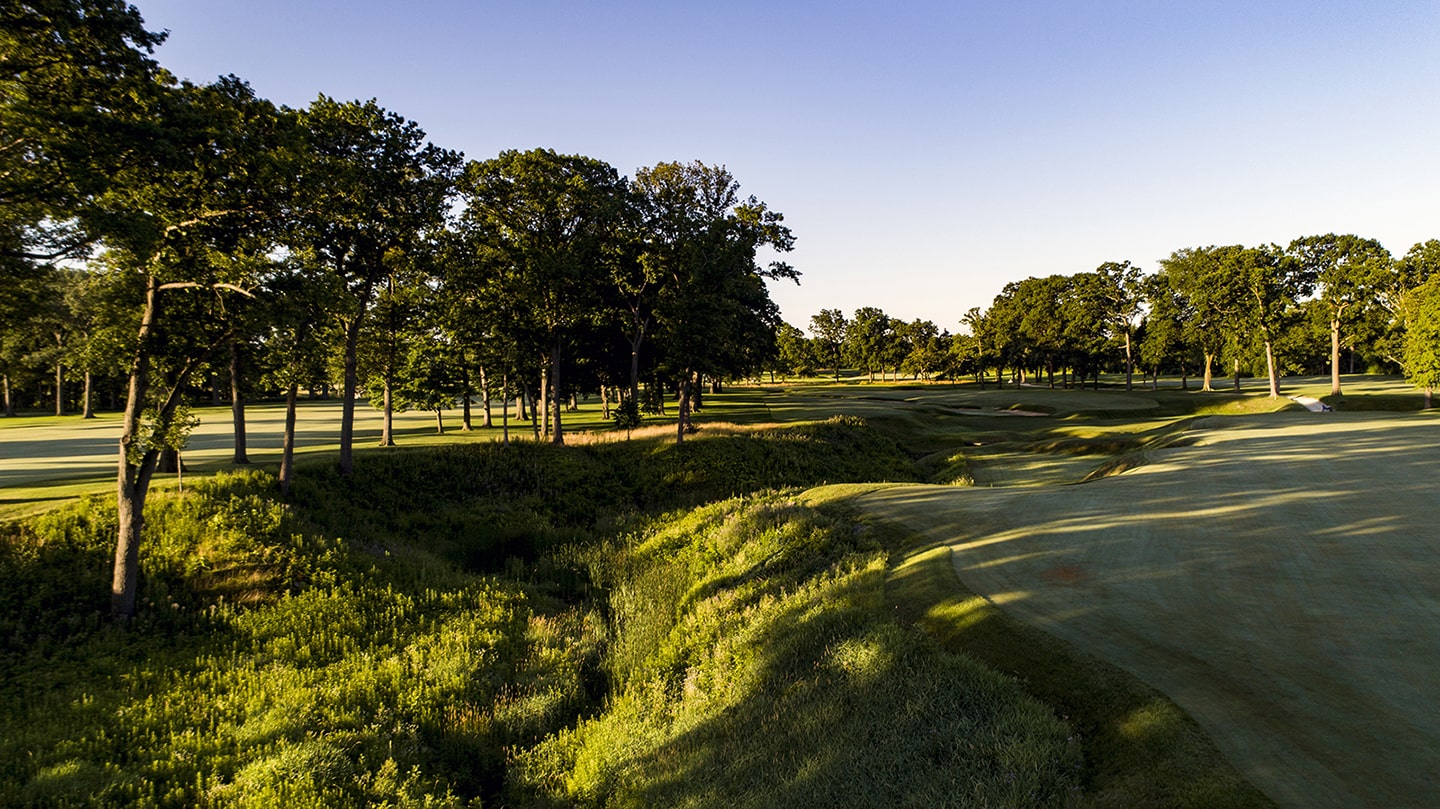
Ravine on the 15th
-
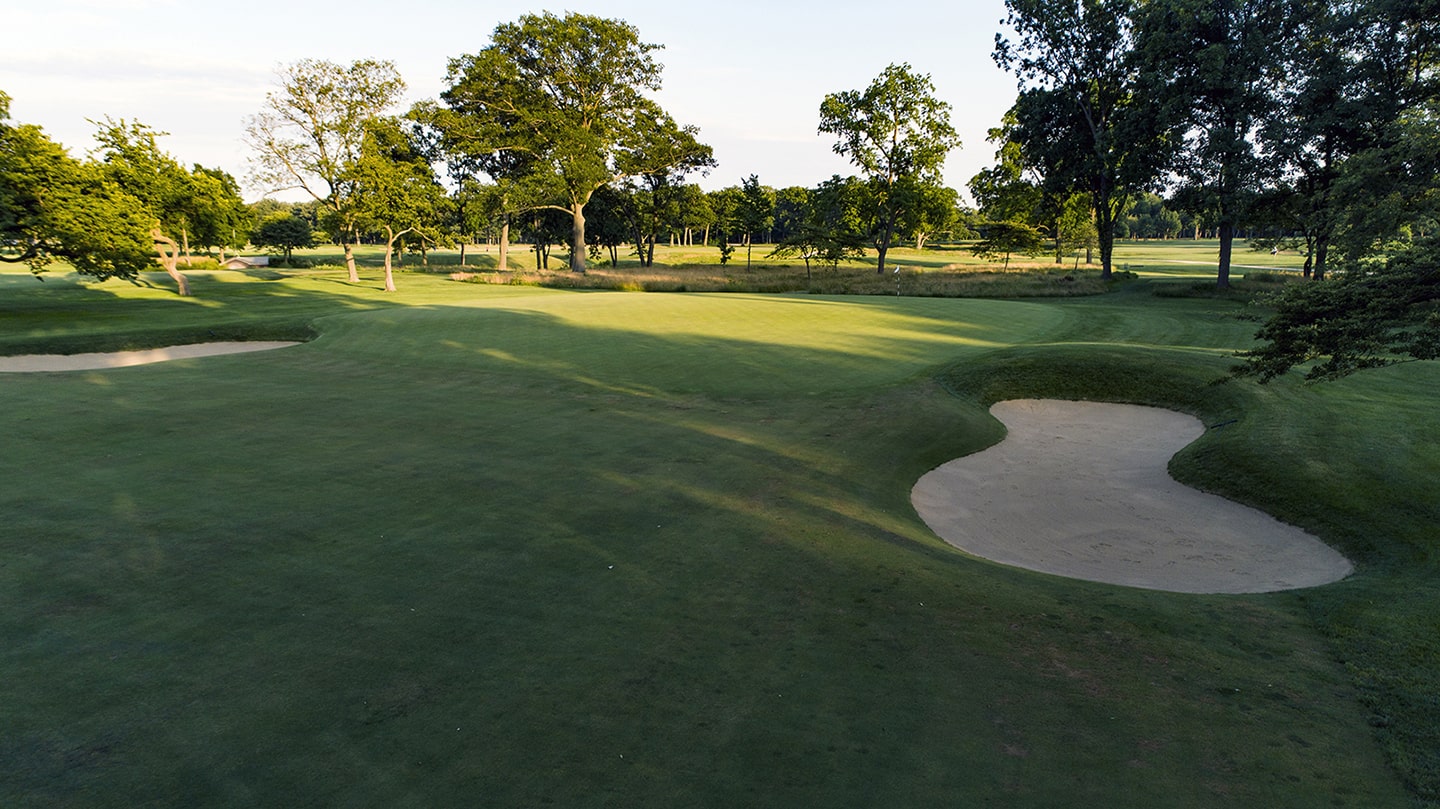
The 15th green, short right
-
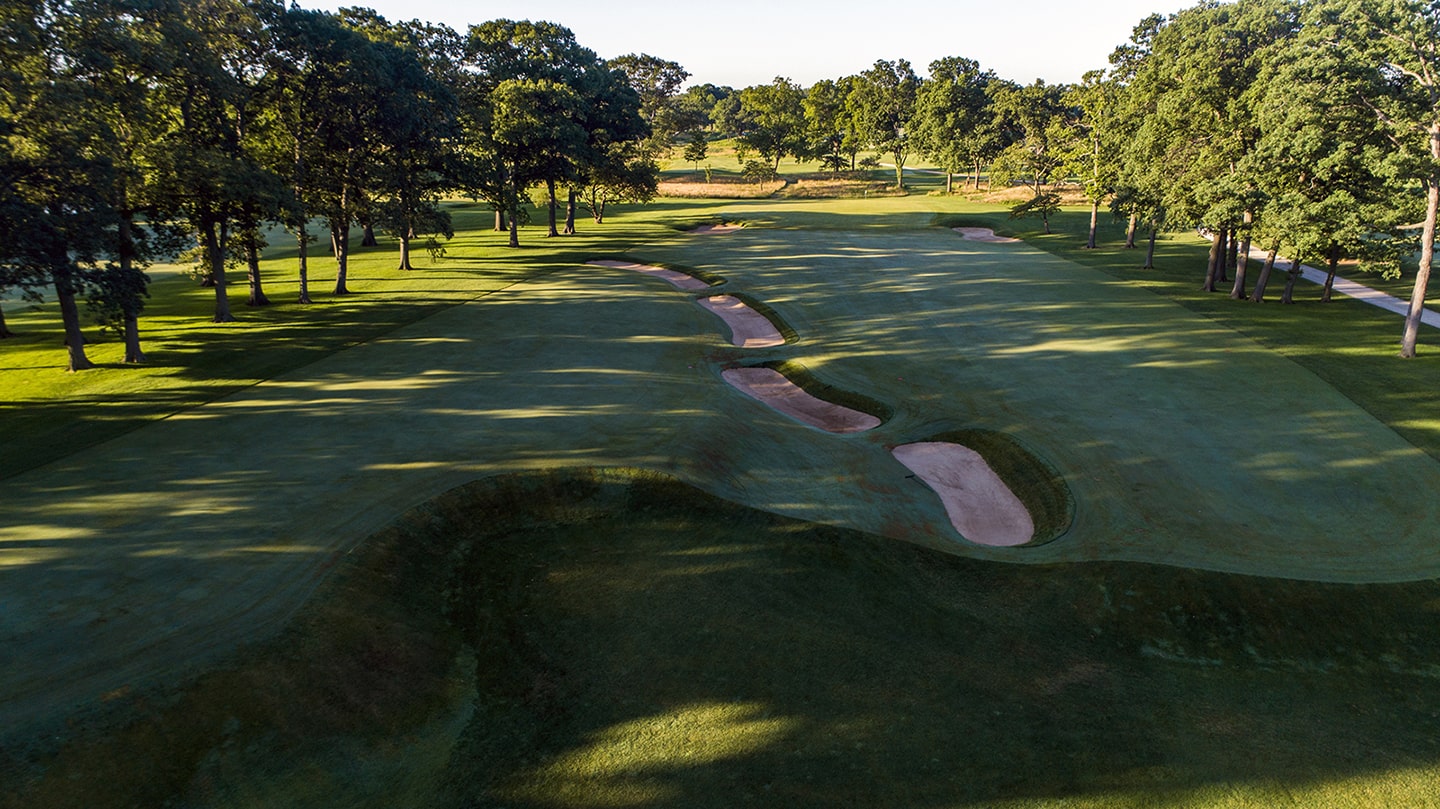
-
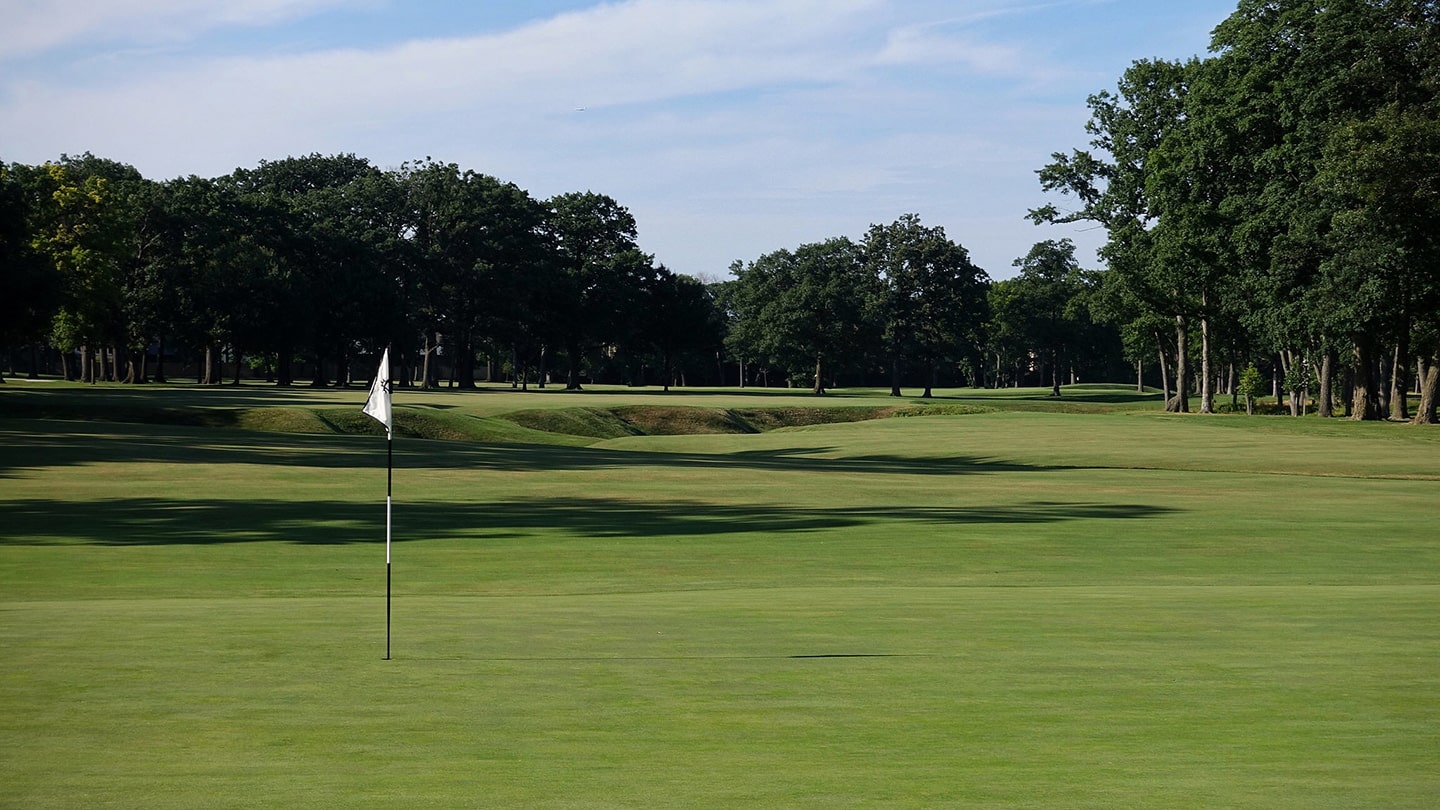
16th hole – par 4 – 463 yards
The 16th is Shoreacres final difficult par-4, with the ravine running in front of the fairway and up the right side. The landing area for tee shots is generous, but is followed by the challenge of a long second shot into the difficult and well-guarded green. Flanked by bunkers on the right and left, the small 16th green is perched and slopes from back to front. It’s welcoming to a run up shot but any miss will make for a tough up-and-down.
-
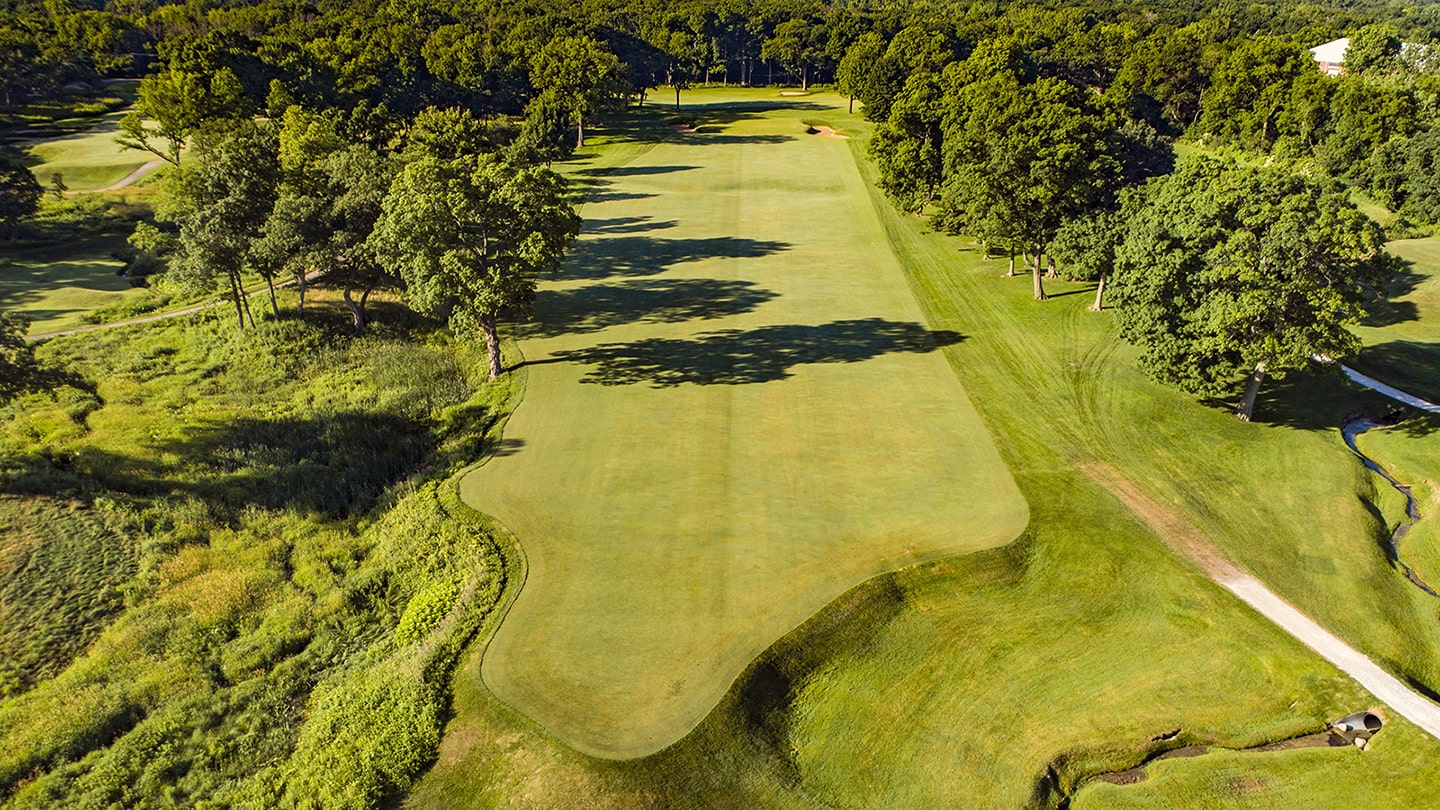
The long par 4 16th
-
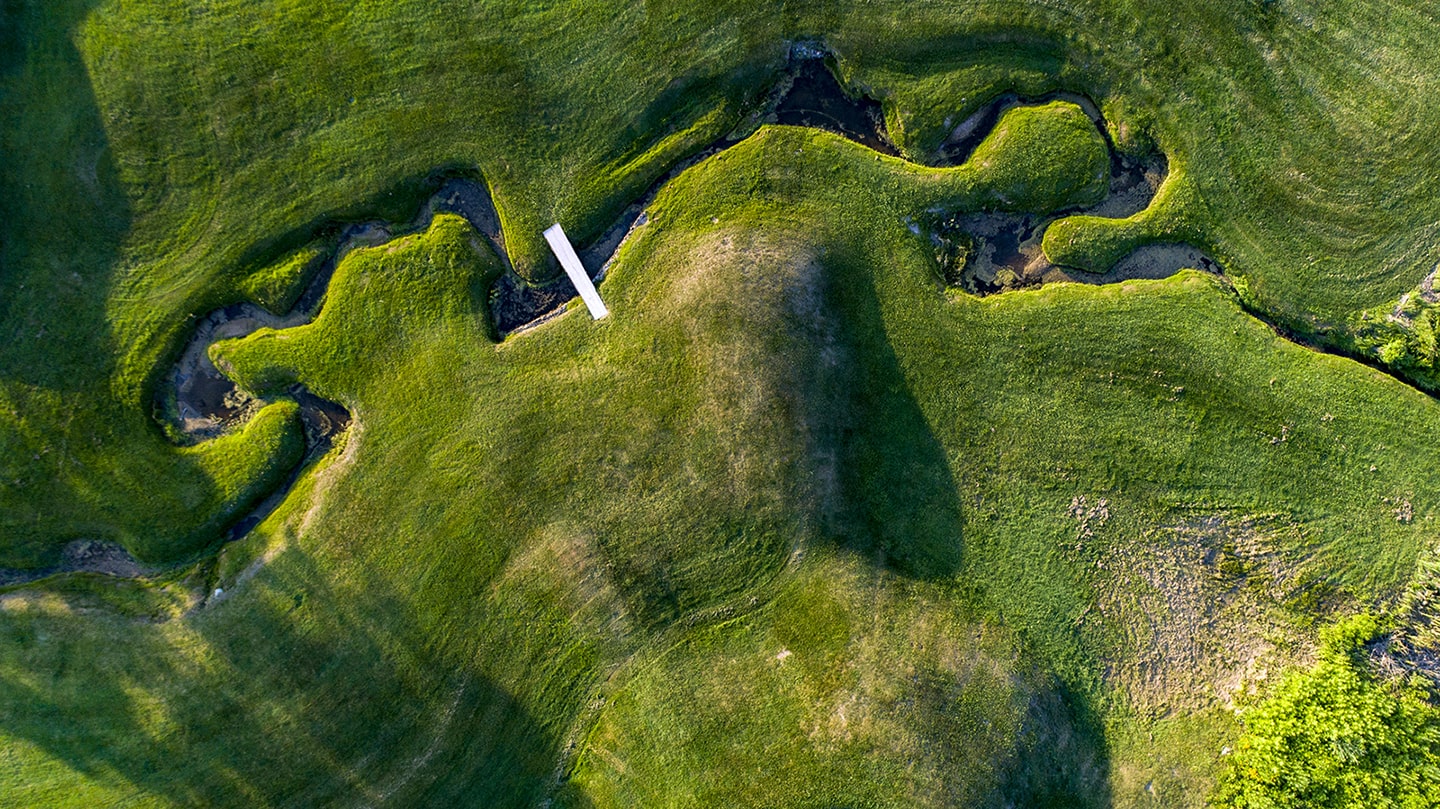
The creek in front of the 16th fairway
-
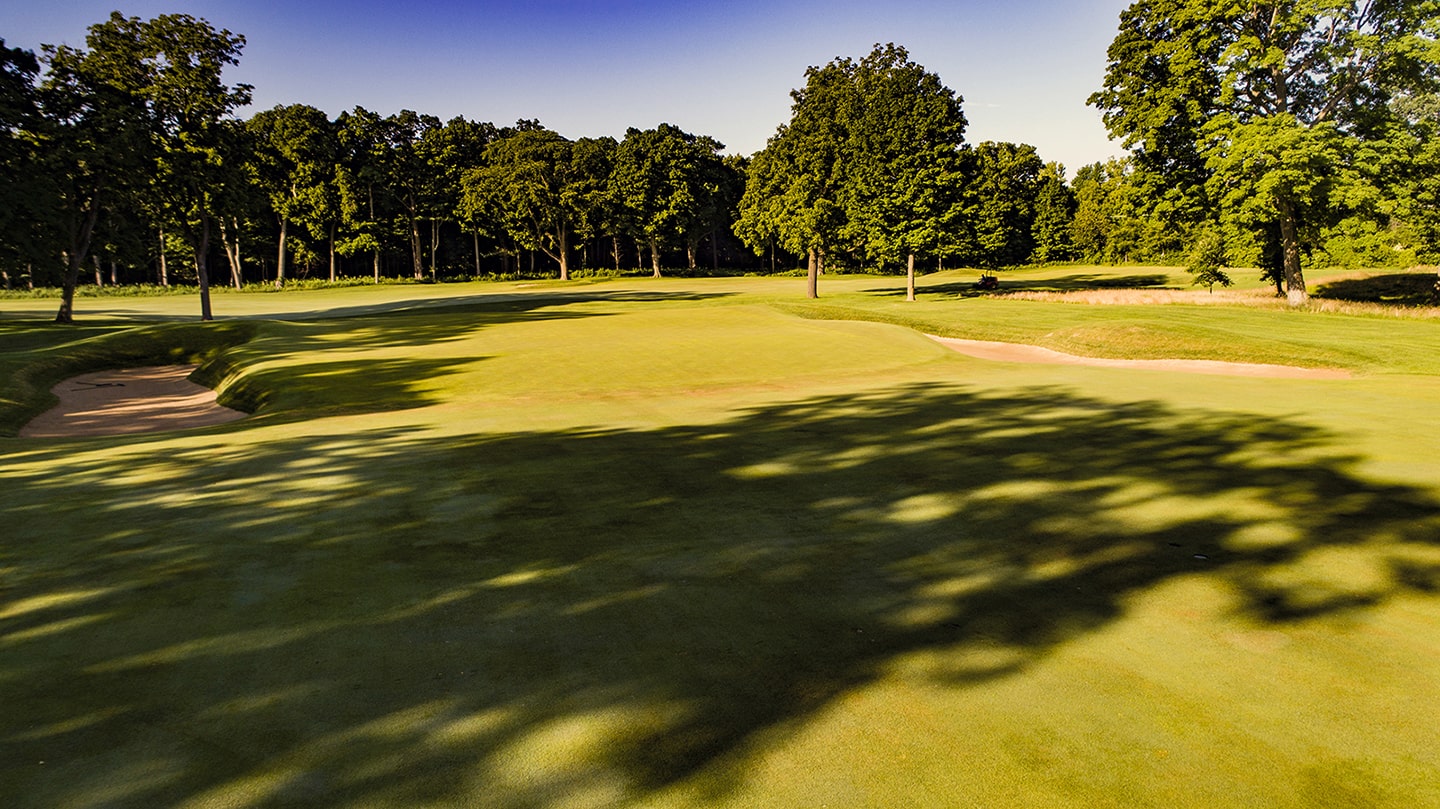
The 16th green
-
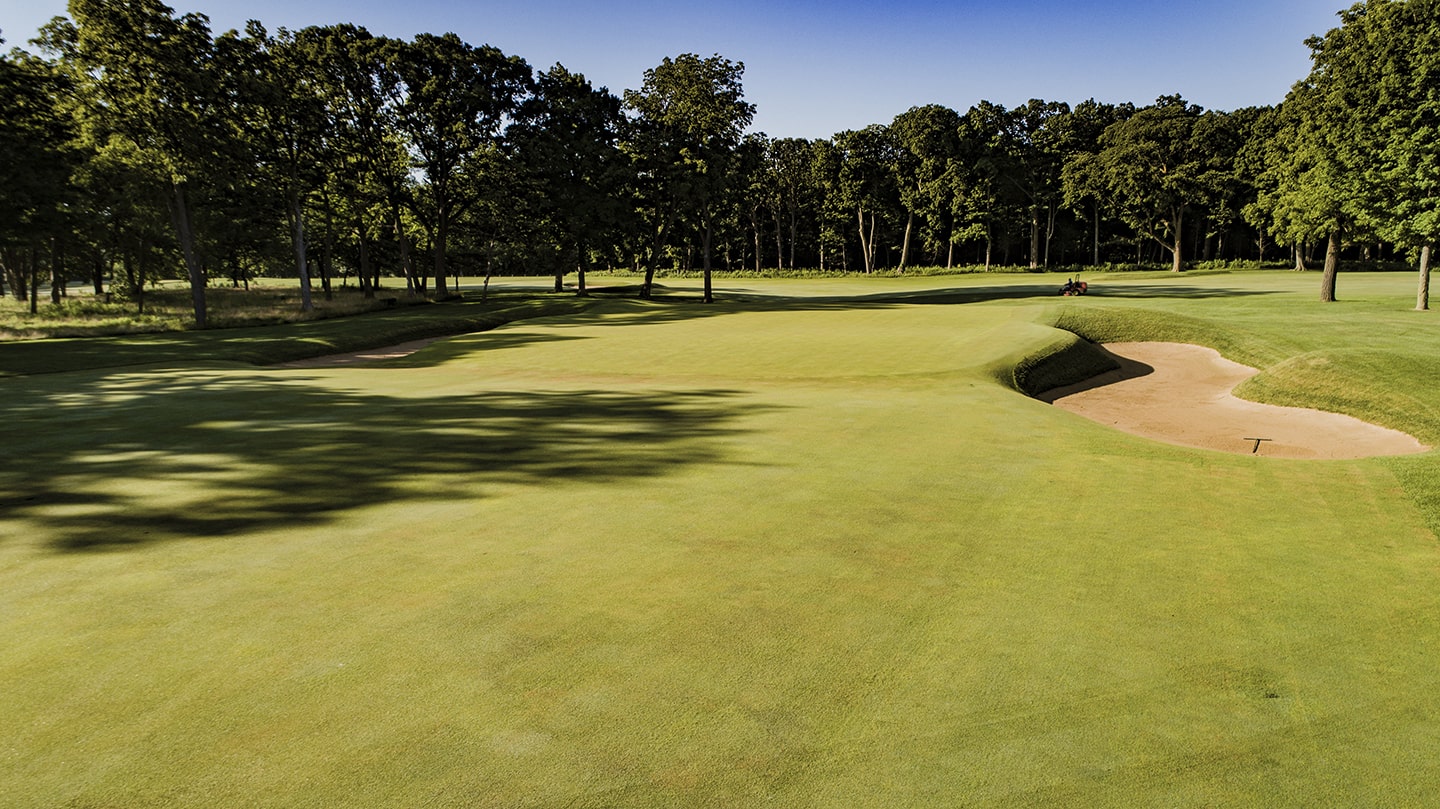
-
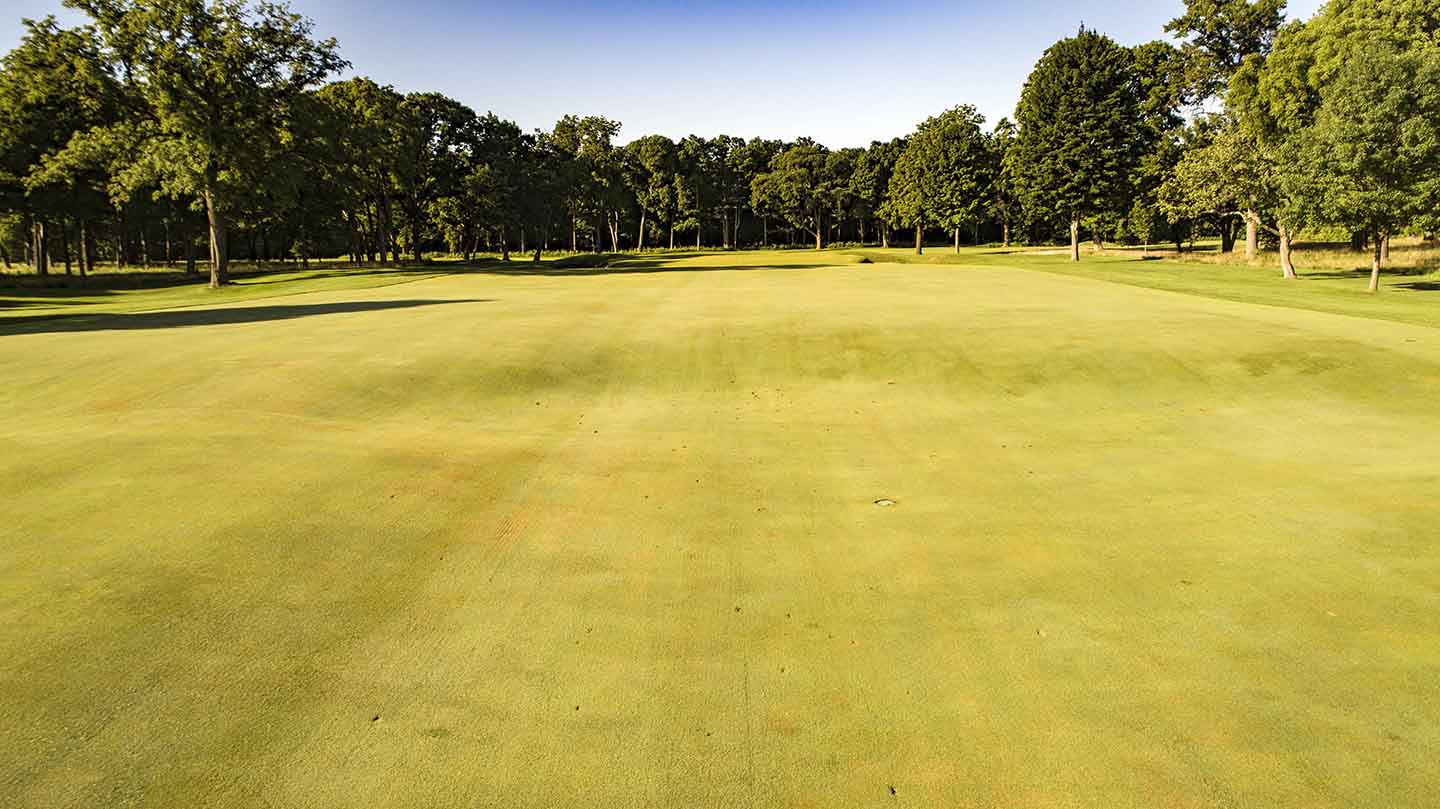
The approach from the 16th fairway
-
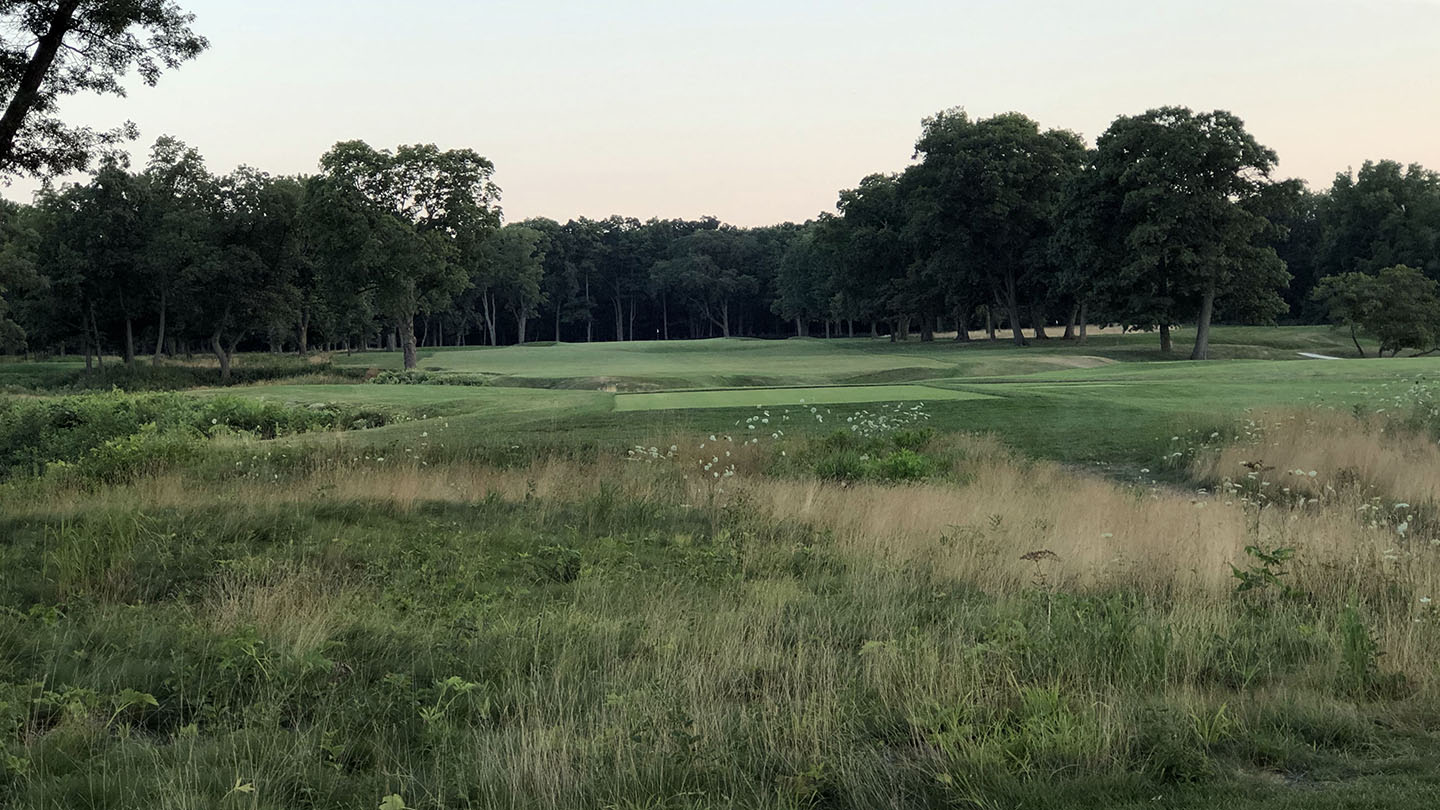
View from front of the 16th tee
17th hole – par 4 – 347 yards
The 17th turns back and signals the start of the jaunt towards the clubhouse. The short par-4 provides a number of options from the tee. The ravine again cuts in front and up the left of the hole, turning into the manmade lake that fronts the 8th. The 17th fairway sits on a slight angle that makes it play narrower the further a player advances their tee shot. A safe play is to layup to a good number in the 100-150 yard range. A long hitter could drive the green in the right conditions but faces the dangers of native grass right and the course’s deepest bunker on the left. The green is the star of the 17th. Heavily guarded by bunkers, the front section is narrow and makes for a difficult approach. The back portion has a right and left half – over the bunker left has some punchbowl tendencies while the back right offers a small shelf.
-
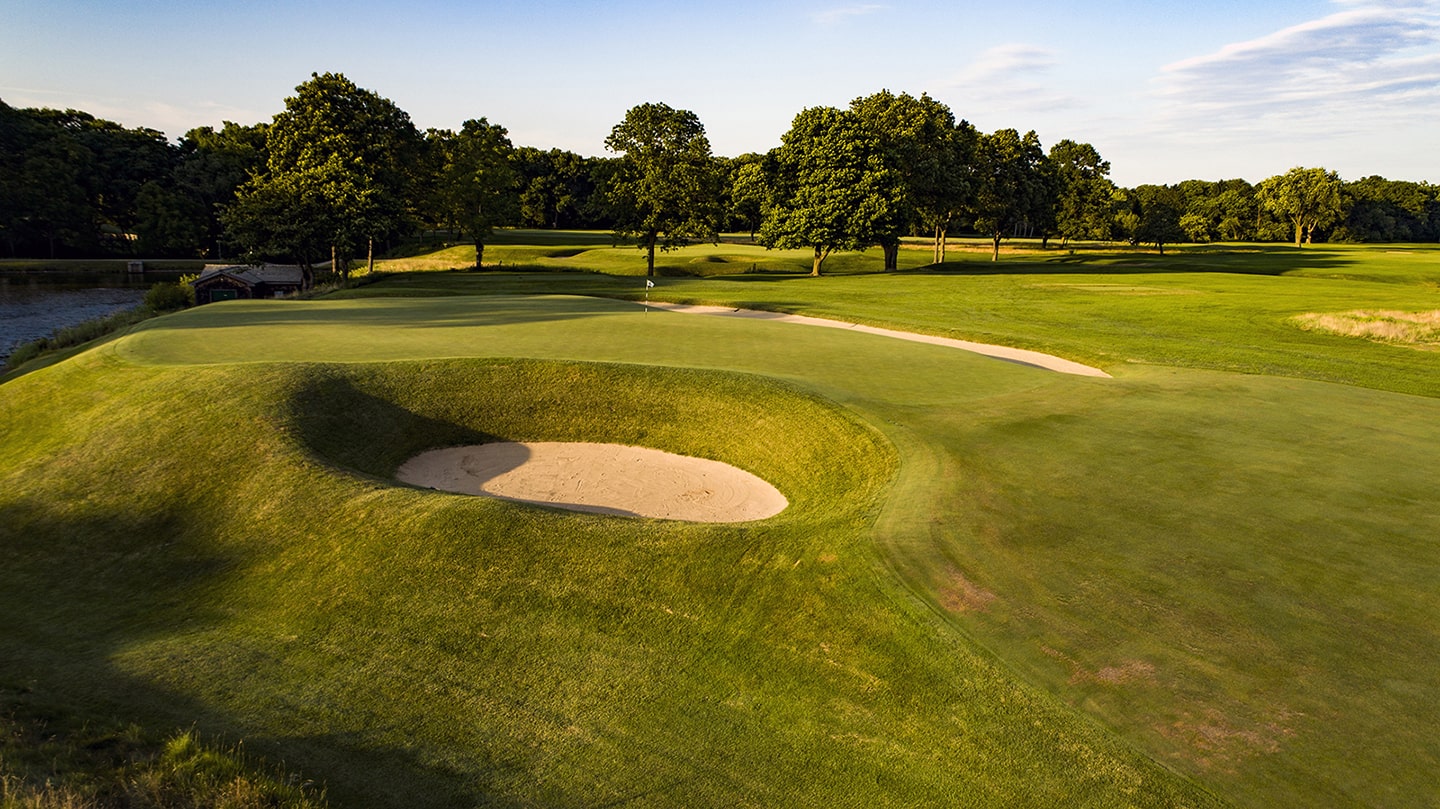
The 17th
-
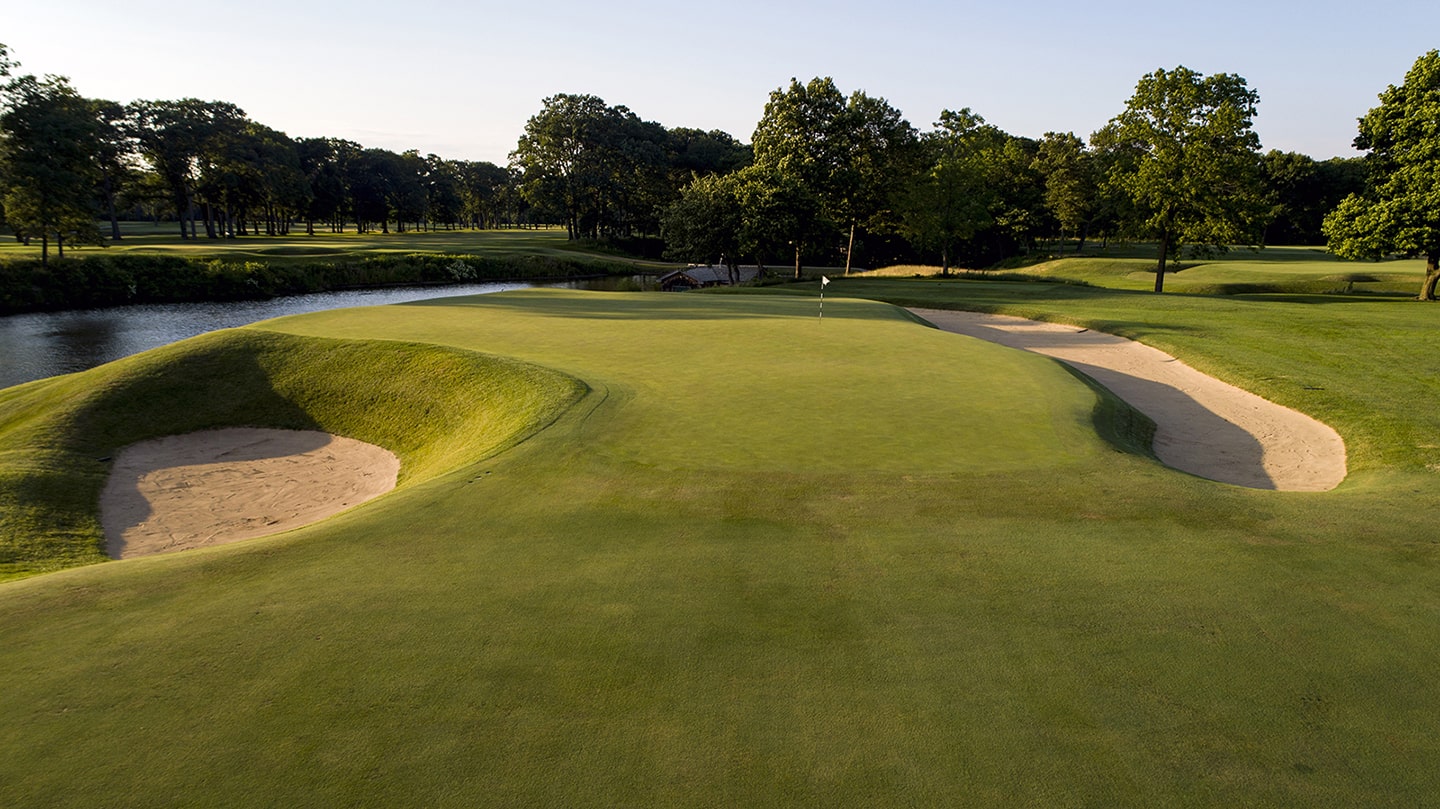
-
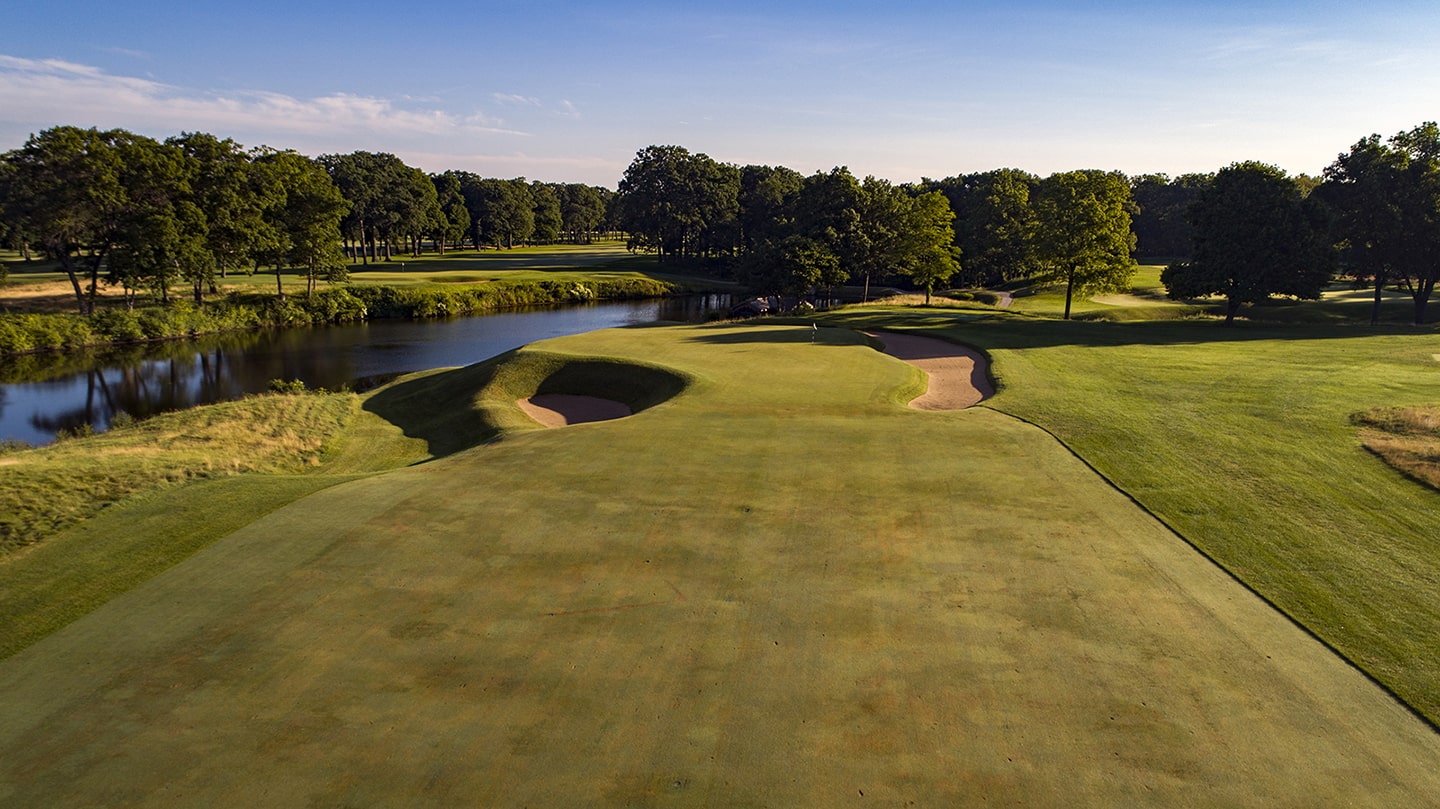
-
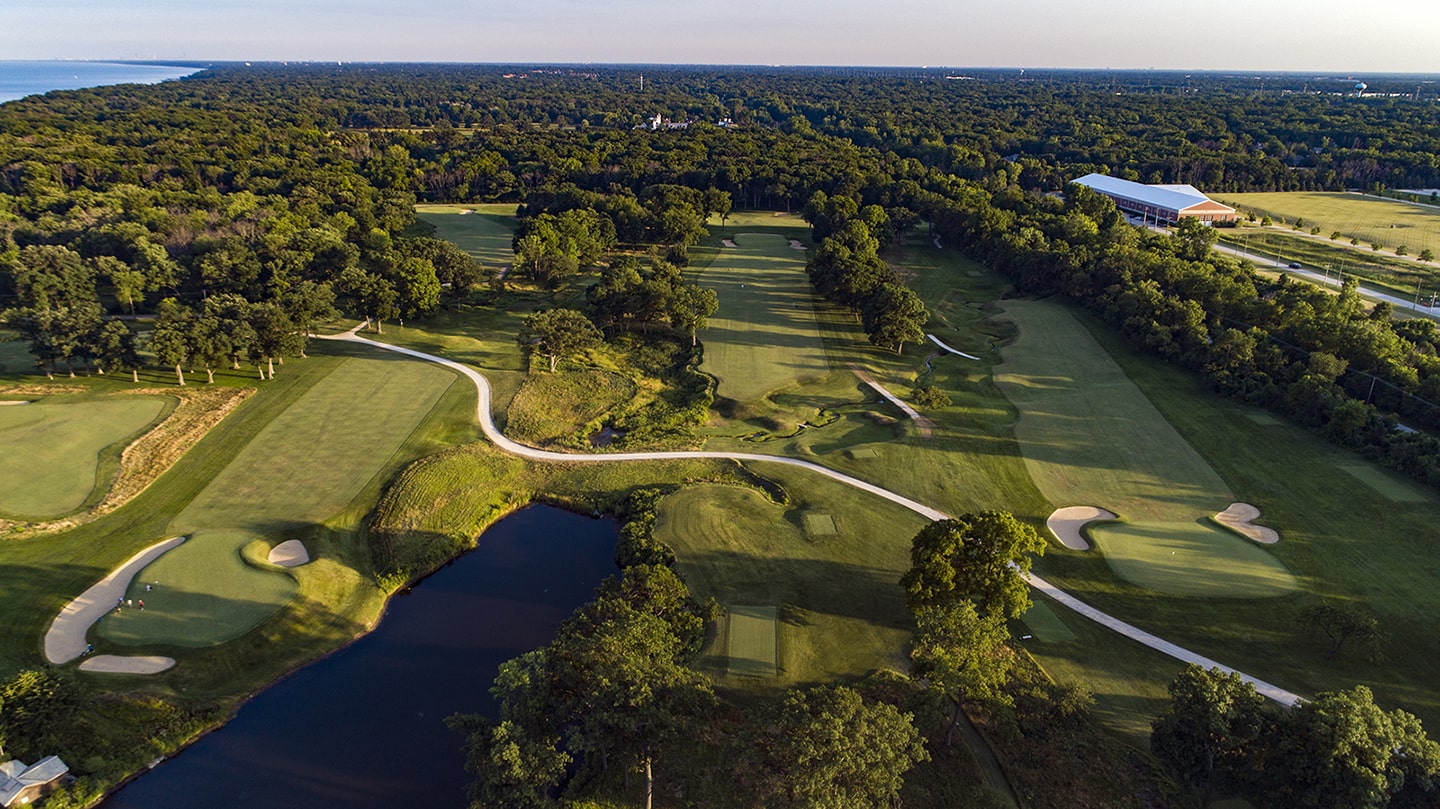
Aerial shot of the 17th
-
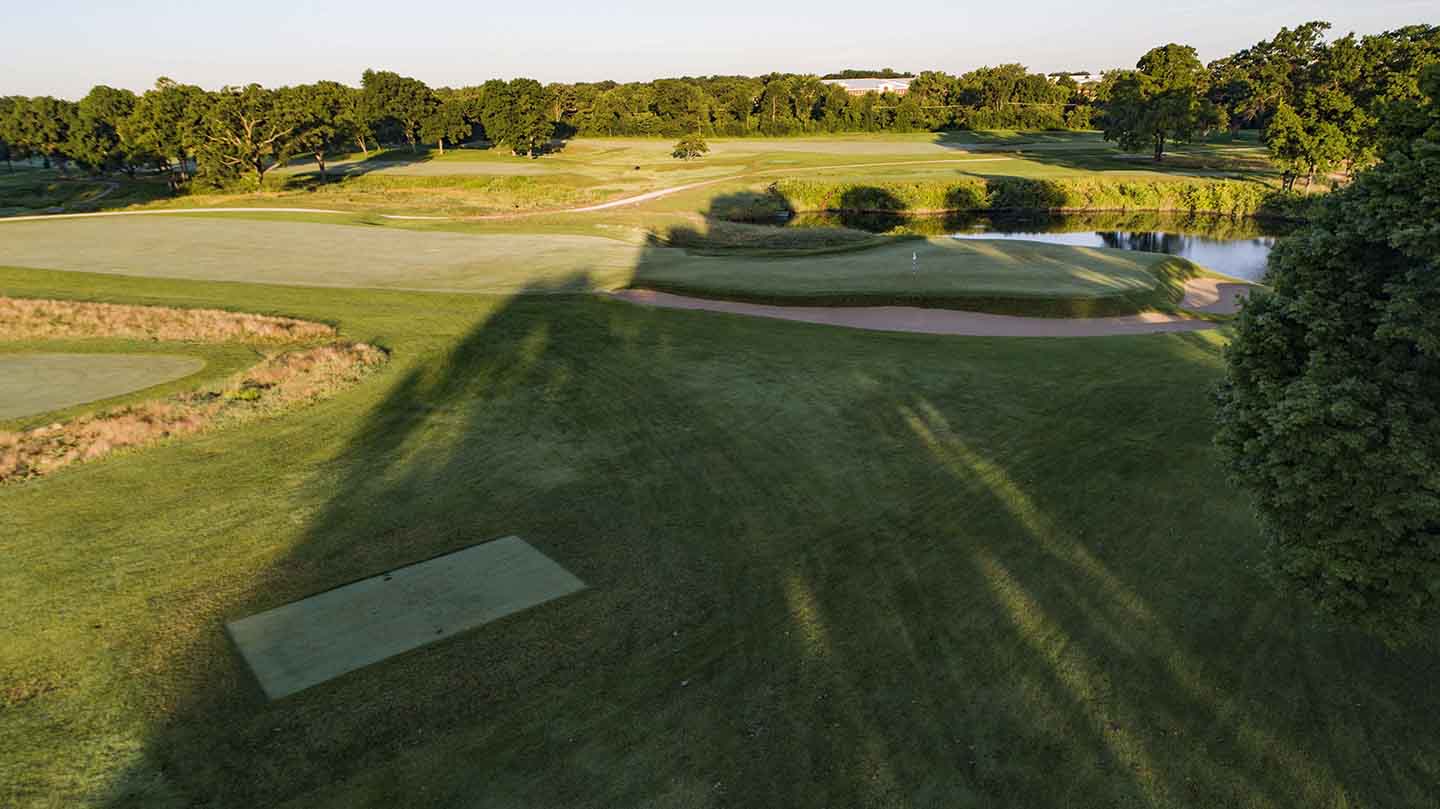
Right of the 17th green
-
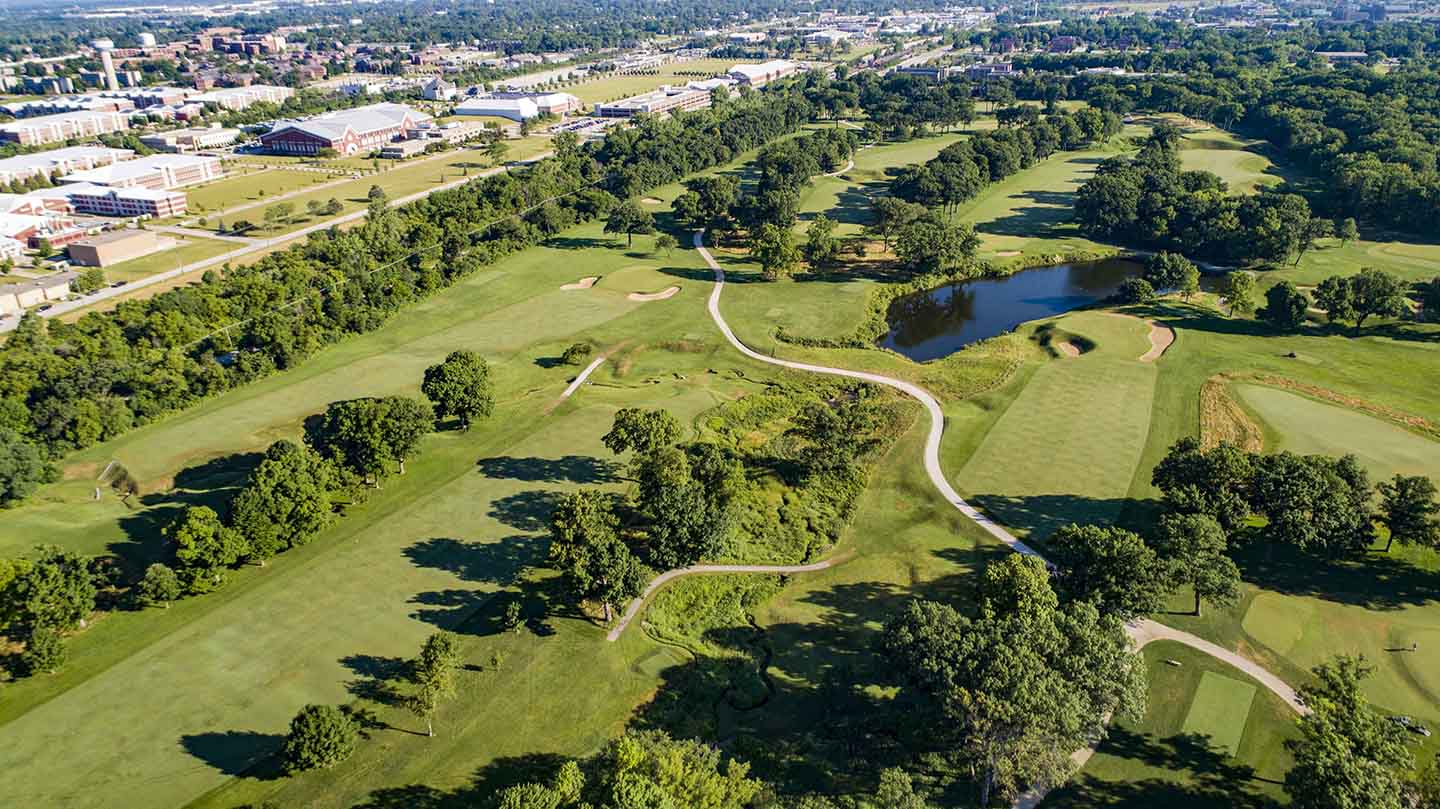
Another aerial shot of 17
-
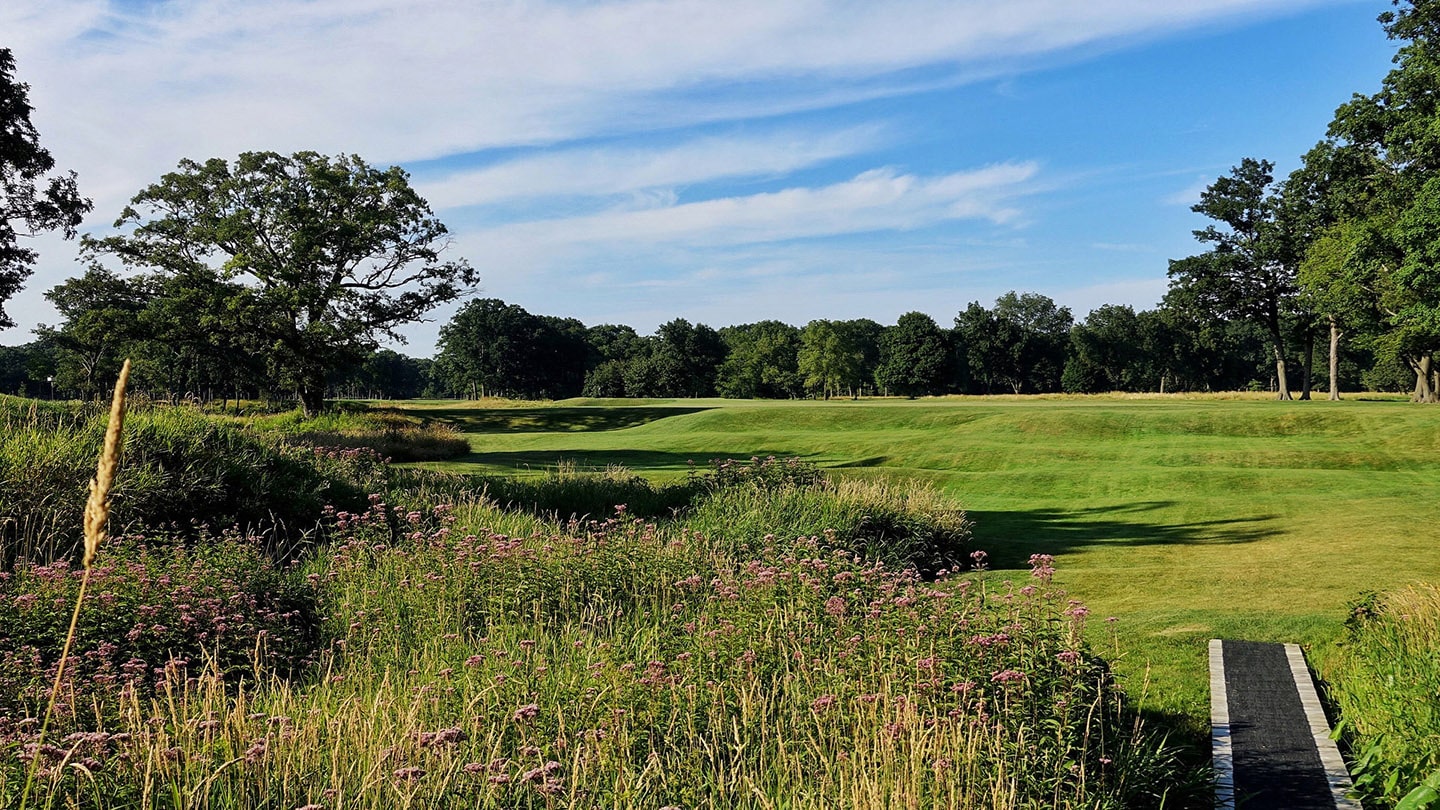
18th hole – par 4 – 558 yards
The home hole is Shoreacres’ longest par-5 and is littered with strategic bunkering tee to green. The fairway pinches for long hitters thanks to a deep and bold bunker. A long player can reach the green in two but a miss in the wrong spot makes for a difficult par. The 18th green is one of the best on the course. For pins on the right, it’s wise to set up the third with a shot up the left side. Conversely, for a right pin, a layup of the right is preferred.
-
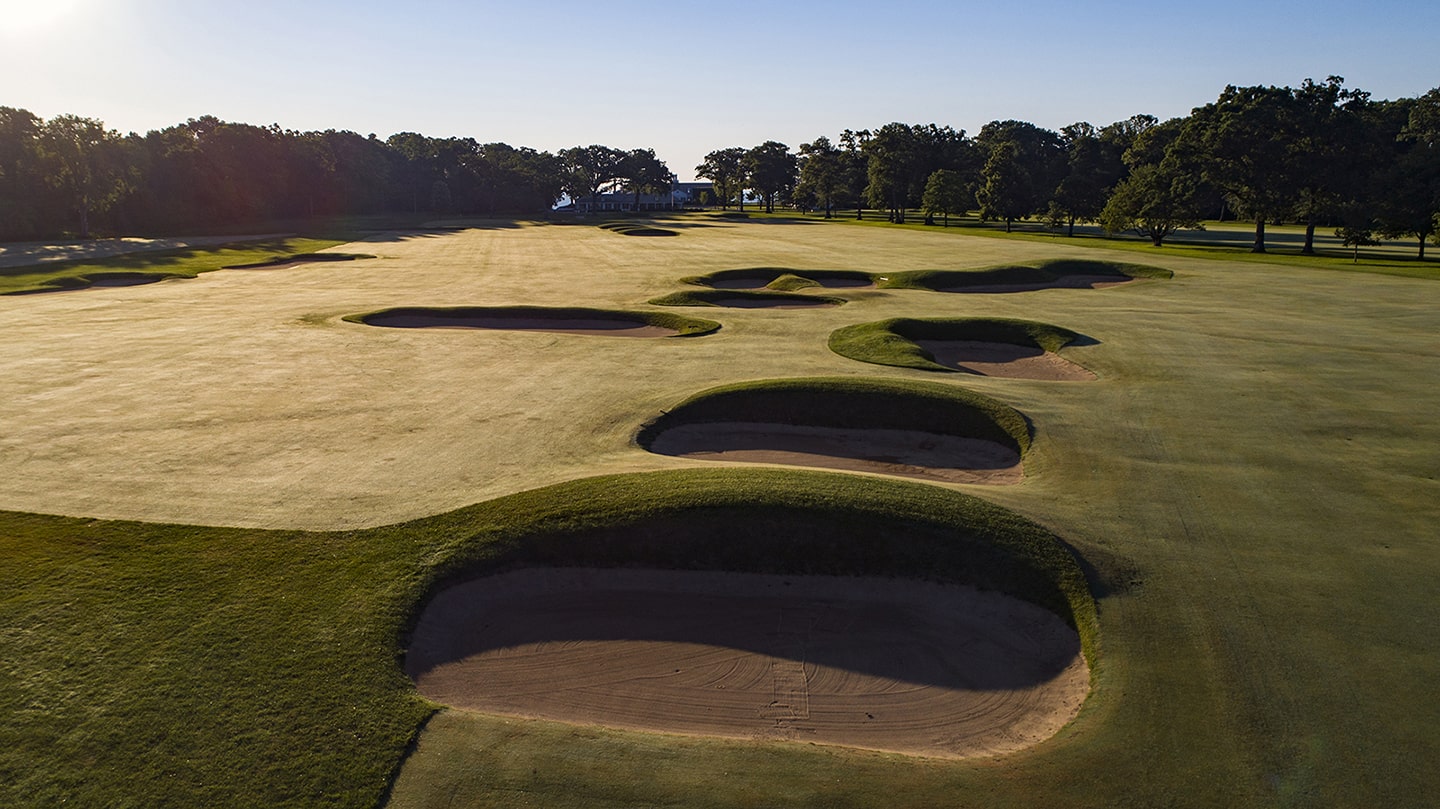
The 18th
-
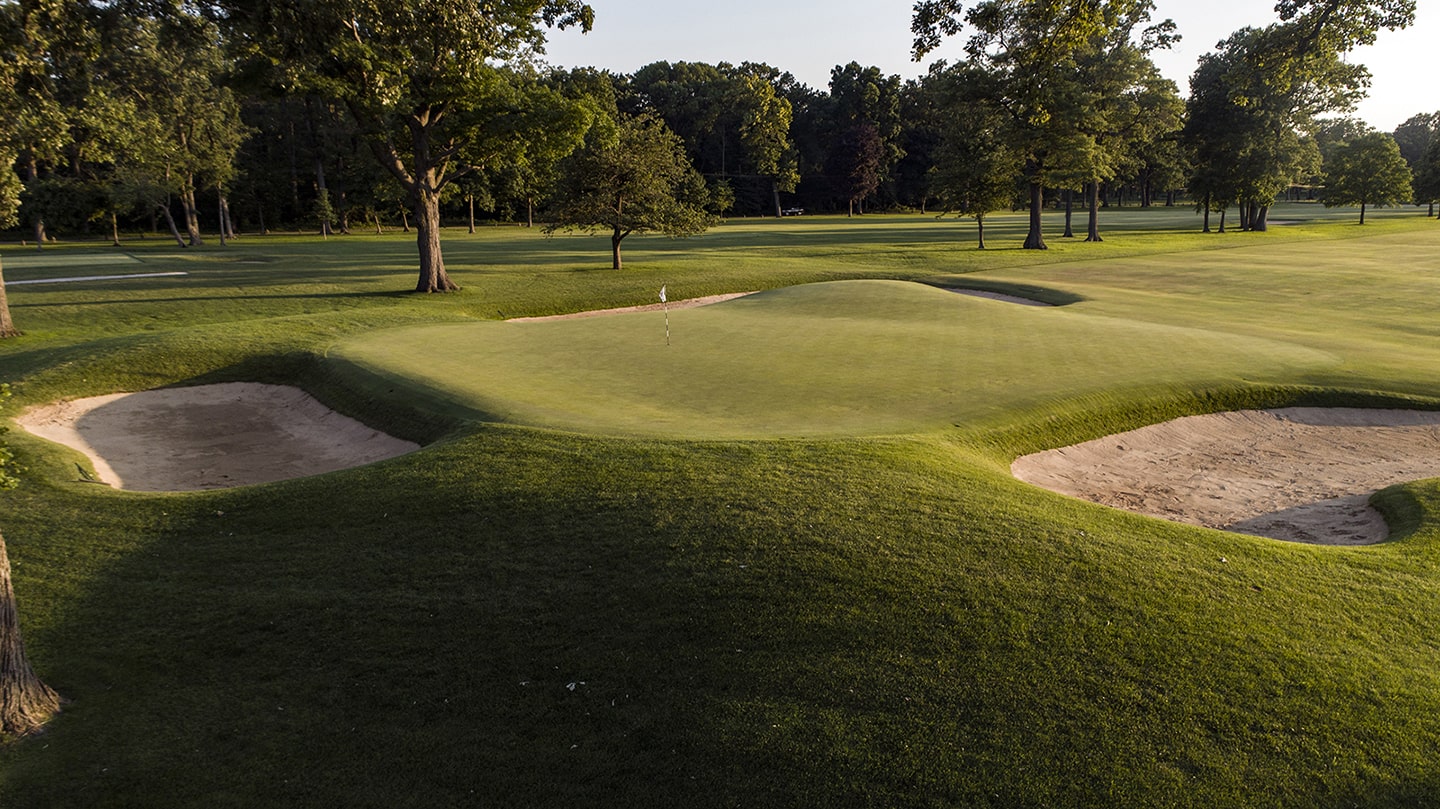
18th green, back left
-
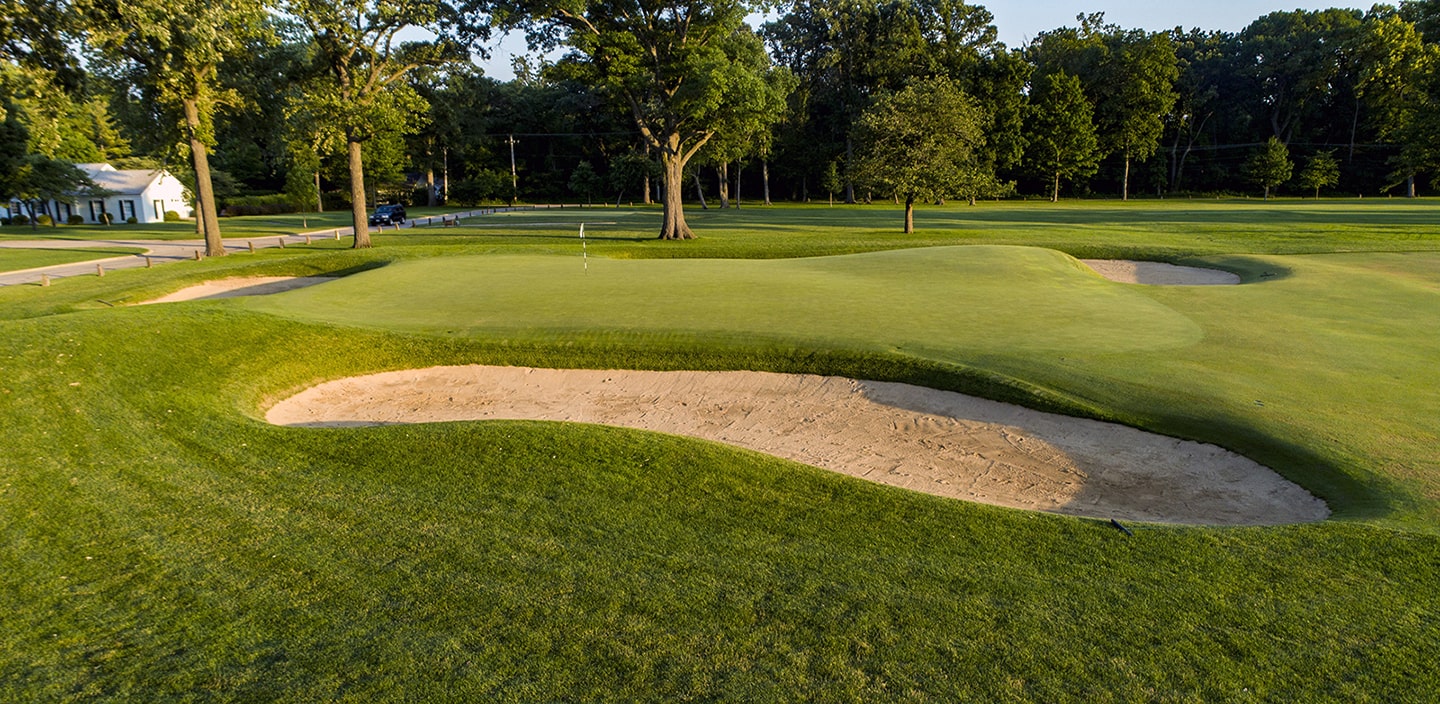
18th green
-
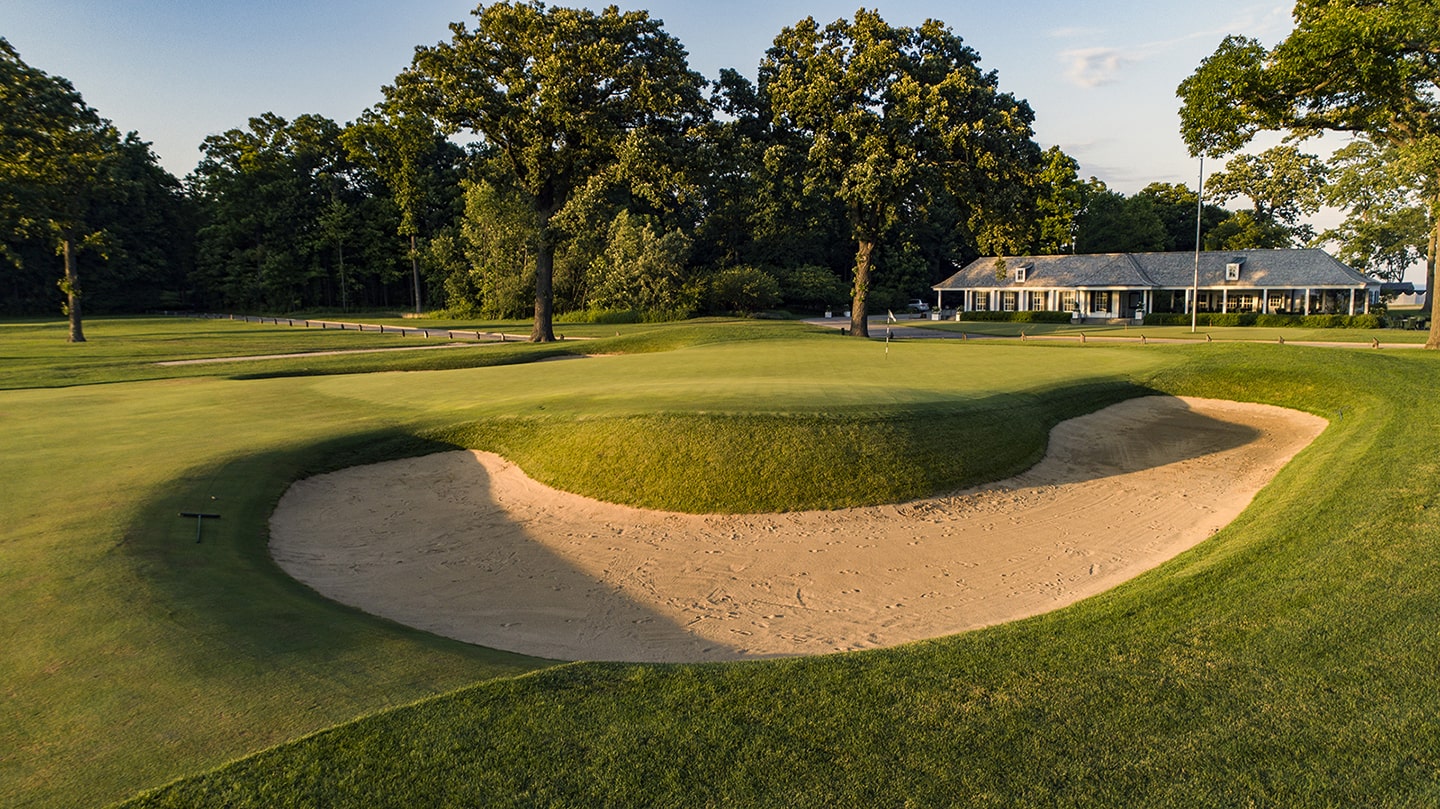
18th green, front right
-
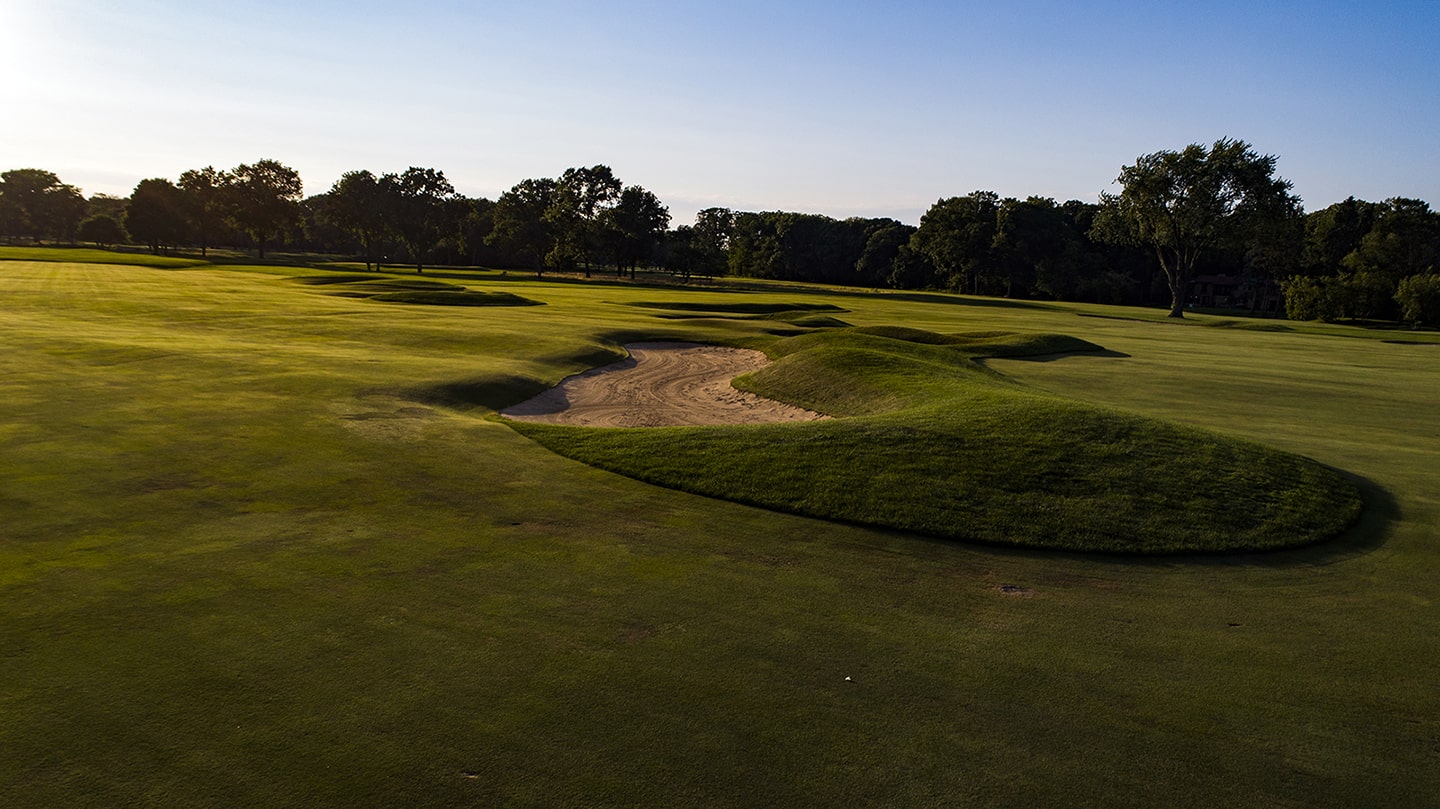
Bunkers on the 18th
-
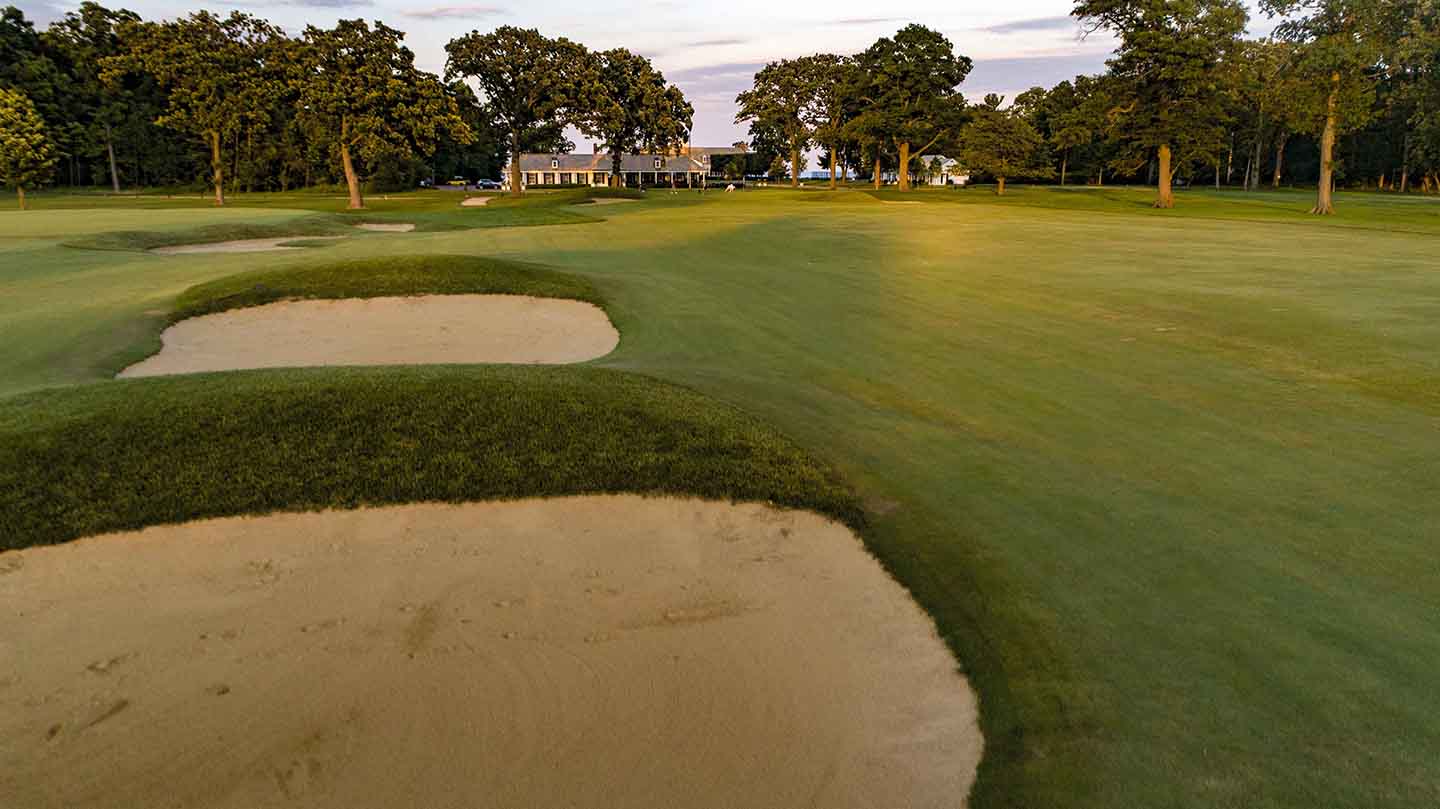
Shoreacres is one of golf’s finest courses thanks to the brilliance of Seth Raynor’s routing. Consecutive holes rarely play in the same direction, the par-3s have great variety in distances, and Raynor used the ravine creatively to provide varied challenges. Players play over, into and around for the entire round. Raynor’s routing gave Shoreacres a special sauce that earns it a place amongst the acclaimed architect’s finest designs, and among the best courses in the world.
Sign Up for The Fried Egg Newsletter
The Fried Egg Newsletter is the best way to stay up to date on all things golf. Delivered every Monday, Wednesday, and Friday for free!


 by
by 